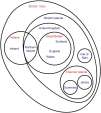|
Other Topical
and Related Items |
 Want
to see the Equation of Time
for 2024 & 2025?
Want
to see the Equation of Time
for 2024 & 2025?

See all daily
corrections HERE together with a link to a PDF of the
current year's data
all printed on one A4 page per year.
16.02.21 24.09.21, 30.10.2022, 16.01.2023,
link corrected 02.12.2023 |
 Know someone who might like SunInfo?
Do you know
Know someone who might like SunInfo?
Do you know
 someone
who might be interested to read SunInfo?
If so then why not download this card and send it to them? It
includes our URL and also easy access by your contact who just needs
to scan the QR code. someone
who might be interested to read SunInfo?
If so then why not download this card and send it to them? It
includes our URL and also easy access by your contact who just needs
to scan the QR code.
Click
HERE or
click the thumbnail and then print it off for them.
01.08.2022 |
Important Statement: American
Physical Society. “Multiple
lines of evidence strongly support the finding that anthropogenic
greenhouse gases have become the dominant driver of global climate
warming observed since the mid-twentieth century.”
BUT
What will its President say when a congressman puts up a graph
showing that for 30 years in the early decades of the 20th century,
the warming rate was the same or greater? Or when he puts up a map
proving that the northern forests, 4000 years ago extended about 200
miles further north worldwide than they do today. Or shows that 2000
years ago, the Romans had vineyards in England extending all the way
to Hadrian’s wall, millennia before cold weather grapes had been
developed. Or when he shows evidence that 1000 years ago the Vikings
grew barley in Greenland, something not possible today. Surely this
proves that the world had many warmer periods without the help of
extra CO2 in the atmosphere?
14.01.2025 |
The BCE/CE Scientific 'Nonsense'
There are many calendars that are used in the world but the most
common and probably the most accurate is the Gregorian Calendar.
Surprisingly some people these days try (mistakenly in
SunInfo's
view) to argue that
the notation BC/AD should be changed to remove any and all religious
connotations - some even on the rather specious grounds that others might
be offended. Yet - we submit - no one is offended. Worse,
(though in fairness mainly outside the USA) there is an amazing level of
confusion about the letters CE as to whether they refer to Common
Era or to Current Era - a difference of about 2000 years!.
There is now a further confusion building up world wide, namely that CE stands for Christ's Era
and BCE for Before Christ's Era. We are almost back to square one!!
Can anyone
really
believe that
any
scientist in the post 20thC period
would
ever
knowingly conspire to introduce such ridiculous confusion? As a former referee
for the Institute of Physics for 17 years I have seen this more
often than one should in scientific papers of my field
- that of 'mass spectrometry instrumentation'.
The use
of this - or any - confusing notation really has
no
place in science.
Still unconvinced? Click
HERE
to hear scientist Dr Neil de Grasse Tyson's view.
Let us all now support a return to BC/AD and get (or try to get!)
those in the USA to do so as well! Come on USA scientists, stand up
and be counted on this.
How
can ANY
Scientist EVER
feel the need to change their thinking and advice to others partly
or solely on the basis of their religious views? When have any
scientists ever denied recognition to those who have devised
anything important (let alone the world's best ever calendar) on the
basis that the inventors held Christian views? Do we now need to
look at re-drafting Newton's Principia because he was a Christian or
(worse) to change our name for the Hebrew calendar Haluah Haivri and
all the others? No, it is nonsense.
05.07.2023, 29.12.2023 |
 Yet another wrong warming
scare. Bad Models,
Bad Data, and a Clear Agenda. Another day, another climate
“crisis” - again one declared by 'supposed' scientists who seem more
interested in pushing policy than in practicing rigorous, unbiased
science. The latest entry in this parade of alarmism comes from
Merchant et al., who claim to have proven that sea surface
temperature (SST) is accelerating at an alarming rate due to
Earth’s Energy Imbalance (EEI). Their solution? The
usual—immediate and severe reductions in fossil fuel use. But
before we surrender modern civilization to the dictates of climate
activists, let’s take a closer look at this paper and see if its
conclusions hold up.
Yet another wrong warming
scare. Bad Models,
Bad Data, and a Clear Agenda. Another day, another climate
“crisis” - again one declared by 'supposed' scientists who seem more
interested in pushing policy than in practicing rigorous, unbiased
science. The latest entry in this parade of alarmism comes from
Merchant et al., who claim to have proven that sea surface
temperature (SST) is accelerating at an alarming rate due to
Earth’s Energy Imbalance (EEI). Their solution? The
usual—immediate and severe reductions in fossil fuel use. But
before we surrender modern civilization to the dictates of climate
activists, let’s take a closer look at this paper and see if its
conclusions hold up.
Spoiler: They don’t. Read
the reality at the link below. When will science revert to
the principles set by Einstein and Feynman?
https://wattsupwiththat.com/2025/01/28/the-ocean-warming-scare-bad-models-bad-data-and-a-clear-agenda/
29.01.2025 |
 Tackling 'Vaccine Hesitancy'.
This from the BMJ: Vaccine hesitancy, characterised by uncertainty
and ambivalence about vaccination, is a legitimate viewpoint,
underscoring the failure or lack of effective public health
messaging. People who are hesitant can still be convinced of a
vaccine's safety, efficacy, and necessity, and, most importantly,
they are not “anti-vaxxers.” Vaccination rates are also lower in
population groups that change address frequently, making NHS
records inaccurate, which is common among people from ethnic
minorities.
Tackling 'Vaccine Hesitancy'.
This from the BMJ: Vaccine hesitancy, characterised by uncertainty
and ambivalence about vaccination, is a legitimate viewpoint,
underscoring the failure or lack of effective public health
messaging. People who are hesitant can still be convinced of a
vaccine's safety, efficacy, and necessity, and, most importantly,
they are not “anti-vaxxers.” Vaccination rates are also lower in
population groups that change address frequently, making NHS
records inaccurate, which is common among people from ethnic
minorities.
The most common reasons for hesitancy are
concerns about side effects and the long term effects on health,
and lack of trust in vaccines, particularly among black
respondents. Some have capitalised on these concerns to spread
misinformation, adding to the historical mistrust of government
and public health bodies that runs deep in some minority groups.
Follow this link
to see some of the many
vaccine successes.
20.08.2024 |
Good news for Sundiallists (and BSS Registrars!)
At the end of
 March
2023 Cumberland and Westmorland - two of England’s historic counties
were at last returned to the municipal map after the “travesty” of
their abolition half a century ago. March
2023 Cumberland and Westmorland - two of England’s historic counties
were at last returned to the municipal map after the “travesty” of
their abolition half a century ago.
Campaigners hailed the
abolition of Cumbria County Council saying it is important to
‘recognise our roots and heritage’ across the UK. The earlier
county council of Cumbria - created as part of Edward Heath’s
much-criticised (some say 'lunatic') local government reorganisation
of 1974 - was on Friday night abolished, along with its six
districts. It had replaced the historic Lakeland counties of
Westmorland and Cumberland, which date back to at least the
12th-century, and that part of Lancashire known as Furness.
Cumbria has been replaced by two unitary authorities
- Cumberland, and Westmorland and Furness.
The boundaries are
not exactly the same (sadly) - around a quarter of historic
Cumberland around the town of Penrith is now under the auspices of the new Westmorland and
Furness Council.
“Cumbria was a creation of the madness of
the 1970s when politicians and bureaucrats decided people live in
places other than those that they thought they were in." Not only are current residents
delighted but Diallists (and the Registrars who maintain the UK
database of National sundials) are too since many old sundials
reflect their older county names. The image here (click for a larger
version) shows the old boundaries.
01.04.2023 |
Oldest Runestone found
Archaeologists in Norway say they
 have
found a runestone which they claim is the world’s oldest, saying the
inscriptions are up to 2,000 years old and date back to the earliest
days of the enigmatic history of runic writing. have
found a runestone which they claim is the world’s oldest, saying the
inscriptions are up to 2,000 years old and date back to the earliest
days of the enigmatic history of runic writing.
The flat,
square block of brownish sandstone has carved scribbles, which may
be the earliest example of words recorded in writing in Scandinavia,
the Museum of Cultural History in Oslo said. Click on the image or
HERE to read more about this.
It said it was
“among the oldest runic inscriptions ever found” and “the oldest
datable runestone in the world”.
“This find will give us a
lot of knowledge about the use of runes in the early Iron Age. This
may be one of the first attempts to use runes in Norway and
Scandinavia on stone,” Kristel Zilmer, a professor at the University
of Oslo, said.
17.01.2023 |
A Fascinating Interview with Sir Roger Penrose:

"Consciousness
must be beyond computable physics."
Sadly only a short
interview but this has surely to be unmissable for anyone with an
interest in what preceded the Big Bang - and indeed for anyone who
always harboured the possibility that Fred Hoyle had a point!
Here Sir Roger Penrose summarises his views on a variety
of topics in Physics and on his work today at the age of 81.
Penrose has contributed greatly to the mathematical physics of
general relativity and cosmology. He has received several prizes and
awards, including the 1988 Wolf Prize in Physics, which he shared
with Stephen Hawking for the Penrose–Hawking singularity theorems
and one half of the 2020 Nobel Prize in Physics "for the discovery
that black hole formation is a robust prediction of the general
theory of relativity". He is regarded as one of the greatest living
physicists, mathematicians and scientists, and is particularly noted
for the breadth and depth of his work in both natural and formal
sciences. Well worth listening. Click the thumbnail or
HERE to listen to this clip.
22.11.2022 |
Where Einstein's Theory Fails
Einstein's theory of General Relativity tells us that gravity is
caused by the curvature of space and time. It is a remarkable theory
that has been confirmed by countless observations, such as
gravitational lensing, light deflection on the sun, redshift in the
gravitational potential, black holes and their shadows, by GPS
technology and
gravitational waves.
However, we already know that General
Relativity cannot be quite right because it does not fit together
with another well-confirmed theory that is quantum mechanics. To
resolve this tension, many physicists think that we need a theory of
quantum gravity.
Read Sabine Hossenfelder's excellent summary.
24.11.2022 |
Sundials in the Isle of Man.
Here is an article by Miss AM Crellin from 1889 about the then recent
explosion of interest in sundials in the Crown Dependency The Isle
of Man. Click on the link
HERE to read an interesting summary that rather bemoans
the imposition of English Time in the Island. It also tells
the well known story of later neglect from the Peel Harbour Noon
mark to the Elizabethan clock in the marketplace of Castletown.
24.10.2022 |
46,000+ Temperature Readings in the USA!
since 1893
for
EACH of many US cities!
Now in a huge new online database we can
see for ourselves just what and when were the highest temperatures
in many places in all States around the USA over a period of nearly
130 years. The recent climate reporting by the New York Times is
shown to be unrepresentative - they only start their data (oddly at
a temperature minimum) in the 60's so that they can mostly claim a
recent increase. Is that 'science'? Check this out for yourself any
time.
Pt1:
HERE and Pt2:
HERE.
Judge for yourself.
05.10.2022 |
The Art Of Dialling - A
podcast from the Royal Collection
 Trust.
Some time ago,
Sally Goodsir, Assistant Curator of Decorative Arts, gave a
lecture at the Queen’s (Now King's) Gallery, Buckingham Palace on the fascinating
history of sundials and dialling, which looked at the development of
increasingly complex sundials, using examples from the Royal
Collection.
Listen (incl images) or just
Read the Transcript (PDF without images). Trust.
Some time ago,
Sally Goodsir, Assistant Curator of Decorative Arts, gave a
lecture at the Queen’s (Now King's) Gallery, Buckingham Palace on the fascinating
history of sundials and dialling, which looked at the development of
increasingly complex sundials, using examples from the Royal
Collection.
Listen (incl images) or just
Read the Transcript (PDF without images).
24.07.2022 Acknowledgements and thanks to VL
Thomson PhD |
 EU building 72GW of NEW gas plants
after the collapse of the Net Zero concept. Green lobbyists are making
themselves an irrelevance by turning against all fossil fuels in
all circumstances. Governments may have nodded along with their
demands up until now, by setting net zero targets. But clearly,
when ideology collides with reality, governments are not going to
sacrifice the well-being of their citizens. The move to build new
gas plants is yet one more sign of Europe’s welcome retreat from
unrealistic net zero targets.
EU building 72GW of NEW gas plants
after the collapse of the Net Zero concept. Green lobbyists are making
themselves an irrelevance by turning against all fossil fuels in
all circumstances. Governments may have nodded along with their
demands up until now, by setting net zero targets. But clearly,
when ideology collides with reality, governments are not going to
sacrifice the well-being of their citizens. The move to build new
gas plants is yet one more sign of Europe’s welcome retreat from
unrealistic net zero targets.
https://www.telegraph.co.uk/news/2024/03/27/europes-net-zero-retreat-is-gathering-steam/
30.03.2024 |
 Really?
Extreme Weather Assessment by the United Nations Intergovernmental
Panel on Climate Change (UN IPCC)
Really?
Extreme Weather Assessment by the United Nations Intergovernmental
Panel on Climate Change (UN IPCC)
This from Chapter
12 of the UN IPCC Sixth Assessment Report finalised
13-19
March 2023,
Page 90 of Chapter 12 Climate
Change Information for Regional Impact and for Risk Assessment
finalised. It
essentially charts the UN IPCC’s assessment of the odds that each
type of extreme weather is due to climate change.
"As can
be seen from the chart, there is no evidence of any increase or
decrease, globally or by region, in the frequency, severity or
extent of frost, mean precipitation, river floods, heavy
precipitation and pluvial floods, landslides, aridity,
hydrological drought, agricultural or ecological drought, fire
weather or wildfires, mean wind speed, severe wind storms or
tornados, tropical cyclones or hurricanes, sand and dust storms,
snow glacial or ice sheets, heavy snowfall and ice storms, hail,
snow avalanche, relative sea levels, coastal floods, coastal
erosion, marine heatwaves, ocean acidity, air pollution weather or
radiation at earth’s surface."
So, academics, scientists,
the media or politicians who say otherwise are apparently being
contradicted by the institution most identified with promoting
catastrophic global warming, that is the United Nations' Intergovernmental
Panel on Climate Change, the IPCC.
Odd that. One wonders
why it has taken so long to admit this...
NOW MORE on this from
WattsUpWithThat
-
HERE
11.12.2033, 17.01.2024 |
BSS
Accounts for 2021
The accounts submitted by BSS to the
 Charity
Commission for the financial (and Calendar) year 2021 show yet
another developing loss in reserves of over £1,100. Charity
Commission for the financial (and Calendar) year 2021 show yet
another developing loss in reserves of over £1,100.
This year's report
HERE
once
again makes no comment on any steps that are in hand or are proposed, to
ensure that the Society moves into profit. Membership is
reported to have
stabilised at 271 paying members and several examples of earlier
public benefit restorations by Members in recent years are listed -
not all of which necessarily refer to the financial year in
question. It was reported earlier that the Secretary had
resigned.
05.07.2022 |
Estimating Design
Declination
A graph makes it very easy to
 estimate
the design declination of a vertical declinining sundial if the
position of the sub-style can be seen or inferred from the
displacement in hours of the gnomon from the (local apparent) noon
line.
The
attached PDF summarises the approach. estimate
the design declination of a vertical declinining sundial if the
position of the sub-style can be seen or inferred from the
displacement in hours of the gnomon from the (local apparent) noon
line.
The
attached PDF summarises the approach.
08.02.2022 |
The Best Explanation Yet?
Anyone who has ever attempted to
 understand
the many explanations of the application of leap seconds today will
have been confused by the known fact that atomic clocks show that a
modern day is only longer by about 1.7 milliseconds than a century
ago, yet no fewer than 27 leap seconds have so far been applied since
this protocol came to be in place - all in the same direction too.
You may have written to the BBC who regularly assert that this is
simply down to the earth's rotation slowing down and despite the
nonsensical nature of that comment they persist in it.
Want to really see why we are where we are?
This is surely the best concise and believable explanation though
every comment here is important, not least the so called backlog.. Click on
the image above or
HERE to read all about it!. understand
the many explanations of the application of leap seconds today will
have been confused by the known fact that atomic clocks show that a
modern day is only longer by about 1.7 milliseconds than a century
ago, yet no fewer than 27 leap seconds have so far been applied since
this protocol came to be in place - all in the same direction too.
You may have written to the BBC who regularly assert that this is
simply down to the earth's rotation slowing down and despite the
nonsensical nature of that comment they persist in it.
Want to really see why we are where we are?
This is surely the best concise and believable explanation though
every comment here is important, not least the so called backlog.. Click on
the image above or
HERE to read all about it!.
15.04.2022 |

 Climate Change and Net Zero??
Before making the mistake of thinking we really do have imminent
and serious climate
change, perhaps we should consider: Climate Change and Net Zero??
Before making the mistake of thinking we really do have imminent
and serious climate
change, perhaps we should consider:
1. In the 70s we had a scare
thinking that a new Ice Age was upon us. We never got an
admission from scientists, let alone an apology for that idiotic mistake -
Perhaps we
should continue to ask why?
2. There has been no important climate forecast
of the past thirty-fifty years that has EVER
proved
correct.
3. No summary of weather outside the
well documented areas like USA/Europe/Australasia reflects on-the-ground measured
temperatures - only satellite measures are today
being used there. Many extensive and valid mercury
thermometer readings are also being ignored. Why might this be?
4. Almost all announcements of temperature change
these days only show rises from the last minima
in the 1960's. Yet, the last real highs were in the thirties... Odd that.
5. The world temperature is still well below the last
temperature highs of the mid-thirties - let alone those of Roman
times.
6. The calving of
glaciers into the sea at both poles show the massive increase of
ice in the interior .
7. Emeritus professors of both MIT and Princeton
now make it clear that the idea of
Net Zero is
seriously faulted and that it
really should be abandoned.
Surely, everybody should
read:
https://co2coalition.org/wp-content/uploads/2023/02/Challenging-Net-Zero-with-Science-digital-CO2-Coalition.pdf
8. An amusing but important observation. For years quite a few scientists have
asserted that climate change on earth is largely - perhaps mainly
- affected by the sun's 11 year cycle. This, in turn, has been
dismissed by those convinced that humans are causing most
observable climate change.
YET, now in Aug 2023, we learned that
clouds on Neptune, have more or less, diasppeared - apparently
(See
Link) because we are approaching the next sun's cycle maximum.
Really?
If the sun's 11 year cycle can so affect the climate
and clouds of Neptune - some 2.7 billion miles further away from Earth, how come it cannot (supposedly) also affect
the climate of the Earth? Odd that.
9.
 Now in 2024 we have scientists that suggest just that! Was this
an earlier and astonishing lack of real science just to stifle
climate sceptics??
https://youtu.be/rJIw7ulYaGk
AND
https://spacenews.com/neptunes-disappearing-clouds-linked-to-the-solar-cycle/
Now in 2024 we have scientists that suggest just that! Was this
an earlier and astonishing lack of real science just to stifle
climate sceptics??
https://youtu.be/rJIw7ulYaGk
AND
https://spacenews.com/neptunes-disappearing-clouds-linked-to-the-solar-cycle/
22.08.2023, 19.02.2024,
29.06.2024 |
Thomas Henderson
In 2013, retired physicist Bruce Vickery
 stumbled
upon the long lost headstone of Scotland's first Astronomer Royal,
Thomas Henderson, in Greyfriars Kirk. stumbled
upon the long lost headstone of Scotland's first Astronomer Royal,
Thomas Henderson, in Greyfriars Kirk.
Henderson's discovery of a
new way of measuring longitude using lunar occultation brought him
into contact with Thomas Young, the producer of the Royal Navy's
"Nautical Almanac". With Young's encouragement, Henderson moved away
from the law and into astronomy.
When Thomas Young died, he left
a letter recommending Henderson as his successor. The Admiralty did
not act on the recommendation, but Henderson was instead offered a
post at the British observatory which had been established at the
Cape of Good Hope in South Africa. Between April 1832 and May 1833
he made many observations, and came to the conclusion that the
brightest star in the southern constellation of Centaurus, Alpha
Centauri, might be relatively close to Earth (compared to most other
stars) because it had a large "proper motion", ie it seemed to move
over time relative to the more static stellar background. This led
to the thought that it might be possible to measure the distance to
Alpha Centauri using parallax, the star's apparent change of
location as the Earth moved through its orbit around the sun.
After returning to Scotland through ill-health, Henderson drew
on his South African observations to calculate that Alpha Centauri
was just slightly less than one parsec away, or a little over 3
light years distant. This was not bad, as modern calculations place
it at 1.34 parsecs or 4.37 light years away. Henderson only
published his results in 1839, the year after Friedrich Wilhelm
Bessel had published a calculated distance to another star using the
same method.
In 1834, Henderson was appointed to be the first
Astronomer Royal for Scotland, from a base at Edinburgh's City
Observatory on Calton Hill. He was also made Professor of Astronomy
at the University of Edinburgh. He continued in both posts until his
death in 1844.
04.01.22 |
|
 BSS
President Christopher Daniel's web site
had, by
the BSS
President Christopher Daniel's web site
had, by
the
 beginning
of September
2022, been viewed
more than 1032 times since it was set up
some time back. The site contained images of all of Christopher's dials and images of other related matters taken
during his long and varied career. Sadly, after Christopher's death, that
website has now had to be disconinued. However all the images on that site may be
viewed as a 2.5MB PDF at lower resolution by
clicking on the image here. Anyone interested to view any of these images
in rather more detail is invited to contact the
webmaster
for more information. beginning
of September
2022, been viewed
more than 1032 times since it was set up
some time back. The site contained images of all of Christopher's dials and images of other related matters taken
during his long and varied career. Sadly, after Christopher's death, that
website has now had to be disconinued. However all the images on that site may be
viewed as a 2.5MB PDF at lower resolution by
clicking on the image here. Anyone interested to view any of these images
in rather more detail is invited to contact the
webmaster
for more information.
04.07.15, 17.08.16, 21.12.16, 08.03.18, 30.06.22,02.09.2022, 21.12.2022
|
England's First
Copernican
Thomas Digges is famous as England’s
first adopter of physical Copernicanism and the author
 of an
extraordinary heliocentric and infinite cosmology, his Perfit
Description of the the Caelestiall Orbes (1576). Until now, his
only other known astronomical treatise was the groundbreaking
Alae seu scalae mathematicae (1573), which historians have
wrongly assumed was occasioned by his observations of the so-called
new star (a supernova) of November 1572. This article presents
compelling evidence that another publication of 1573, a neglected
and anonymous letter sent by a gentleman of England was, in fact,
written by Digges. Click on the image or here:
Read this paper
by Stephen Pumfrey with David Riley, University of Lancaster. of an
extraordinary heliocentric and infinite cosmology, his Perfit
Description of the the Caelestiall Orbes (1576). Until now, his
only other known astronomical treatise was the groundbreaking
Alae seu scalae mathematicae (1573), which historians have
wrongly assumed was occasioned by his observations of the so-called
new star (a supernova) of November 1572. This article presents
compelling evidence that another publication of 1573, a neglected
and anonymous letter sent by a gentleman of England was, in fact,
written by Digges. Click on the image or here:
Read this paper
by Stephen Pumfrey with David Riley, University of Lancaster.
21.12.21 |
Using the Method of
Aristarchus
Here is an interesting
trial
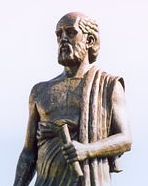 of
the
method of Aristarchus for determining the distance to the Sun and
Moon. Aristarchus of Samos (c. 310 - c. 230 BC) was an ancient
Greek mathematician and astronomer from Ionia. Aristarchus’
revolutionary astronomical hypothesis was that the Sun, not the
Earth, was the fixed centre of the 'universe' and that all the planets
revolved around it. He also said the stars were distant unmoving
suns and the universe was much larger than thought. Here his method
is used together with some of today's values to establish the
distance to the Sun and Moon for ourselves. Fascinating.
Click the image or
HERE
to read more. of
the
method of Aristarchus for determining the distance to the Sun and
Moon. Aristarchus of Samos (c. 310 - c. 230 BC) was an ancient
Greek mathematician and astronomer from Ionia. Aristarchus’
revolutionary astronomical hypothesis was that the Sun, not the
Earth, was the fixed centre of the 'universe' and that all the planets
revolved around it. He also said the stars were distant unmoving
suns and the universe was much larger than thought. Here his method
is used together with some of today's values to establish the
distance to the Sun and Moon for ourselves. Fascinating.
Click the image or
HERE
to read more.
03.09.21 |
A
British Dial found in New Zealand?
A sundial originally
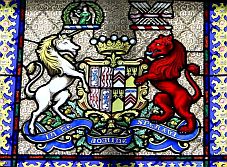 designed
for use in the grounds of Glamis Castle in Sotland -
childhood home of the late Queen Mother - and probably taken to NZ
as some sort of 'not now functioning' trophy has thrown up
aspects of Scottish dialling in the 17th and 18th centuries. designed
for use in the grounds of Glamis Castle in Sotland -
childhood home of the late Queen Mother - and probably taken to NZ
as some sort of 'not now functioning' trophy has thrown up
aspects of Scottish dialling in the 17th and 18th centuries.
Here John Davis
tells the fascinating story of its discovery and analysis. Well
worth a read.
17.06.21
[EU C-466/12
as retained and amended] |
How to estimate the
Earth-Sun Distance
by means of trigonometry and a model of the Phases of Venus by Lars
Petersen, Alan C. Pickwick, Rosa M. Ros, Mogens Winther (EAAE)
Level: Some mathematical ability is required.
Using the transit
of Venus to determinate the distance to Venus and to the Sun.
Click
HERE
to follow the procedure based on the transit of Venus in 2004!!
03.06.21 |
The Stanier Family -
Railways and Sundials
Dr Margaret Stanier (who sadly died in 2007) was an esteemed member
of the British Sundial Society and her appointment as Bulletin
Editor after Charles Aked’s resignation, is still remembered for
her welcome and logical change to the Bulletins’ numbering scheme
and its implementation of a new fair rigour in the standard of
articles that were published. However she came from the highly
esteemed family of Sir William Stanier - the famous British GWR
and LMS steam engine designer. Her connexions are mentioned
in SunInfo's obituary to her and a new
Internet link and even a film has emerged that tells the Stanier railway story in
reminiscences from the Stanier family members living today. Click
on these links to read more about these
Reminiscences,
This film and
Margaret's Obituary Well worth a look - especially for steam
railway buffs with a co-interest in dialling!.
31.08.21
 19.06.2022
19.06.2022 |
 The Mystery of The
Dial in Dial Lane
Over in Aldeburgh,
The Mystery of The
Dial in Dial Lane
Over in Aldeburgh,
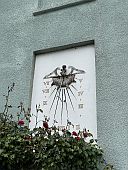 Suffolk,
there is a most interesting dial on the wall of Dial House. It is
known to the National Register as SRN 0596. It carries the motto
'Semper Fidelis'under the thriving foliage
HERE. It is a painted
vertical west declining dial - declining about 10 degrees - but it
has an elaborate metal(?) gnomon support in the form of a cast
four spiked sun which also appears to show some of the hour lines.
However these do not (seen from this angle) appear to align with
all of the painted hour lines lower down. Could this gnomon
support have come from another dial or perhaps the painted lines
are not accurate? Sadly the sun was not shining in this otherwise
very this clear photograph so the dial's accuracy could not be
determined. If any diallist can throw light on this matter
do let the webmaster know. Click
HERE or on the thumbnail
to see a larger version of the image. Suffolk,
there is a most interesting dial on the wall of Dial House. It is
known to the National Register as SRN 0596. It carries the motto
'Semper Fidelis'under the thriving foliage
HERE. It is a painted
vertical west declining dial - declining about 10 degrees - but it
has an elaborate metal(?) gnomon support in the form of a cast
four spiked sun which also appears to show some of the hour lines.
However these do not (seen from this angle) appear to align with
all of the painted hour lines lower down. Could this gnomon
support have come from another dial or perhaps the painted lines
are not accurate? Sadly the sun was not shining in this otherwise
very this clear photograph so the dial's accuracy could not be
determined. If any diallist can throw light on this matter
do let the webmaster know. Click
HERE or on the thumbnail
to see a larger version of the image.
 Since
this article was first posted 'Dial-finder extraordinaire' Ian
Butson has submitted his own close up of the gnomon support and
kindly given SunInfo permission for us to show it. (HERE).
It indicates that it was probably at the head of an original
Vertical South dial and from the slight damage at the top left, it
may well be hollow rather than solidly cast. Ian also wondered if
the material was lead. Given the slight rusting of some screws in
the surround, rather than the
body, it might seem that the top scrolling is separate and
possibly made from galvanised steel. How provision of no
fewer than 18 mounting holes - just for the gnomon support came to
be provided remains a real mystery. The present gnomon is not
fitted to align with any of these earlier lines. It has the
appearance of being possibly from a continental dial, perhaps of
Austrian, Italian or maybe German origin. Any reader who can
contribute more to this puzzle should contact the webmaster. Since
this article was first posted 'Dial-finder extraordinaire' Ian
Butson has submitted his own close up of the gnomon support and
kindly given SunInfo permission for us to show it. (HERE).
It indicates that it was probably at the head of an original
Vertical South dial and from the slight damage at the top left, it
may well be hollow rather than solidly cast. Ian also wondered if
the material was lead. Given the slight rusting of some screws in
the surround, rather than the
body, it might seem that the top scrolling is separate and
possibly made from galvanised steel. How provision of no
fewer than 18 mounting holes - just for the gnomon support came to
be provided remains a real mystery. The present gnomon is not
fitted to align with any of these earlier lines. It has the
appearance of being possibly from a continental dial, perhaps of
Austrian, Italian or maybe German origin. Any reader who can
contribute more to this puzzle should contact the webmaster.
25.05.21 Image
© VL Thomson 2021 and Ian Butson
01.06.21 |
The Hidden Dial of Ham House
Ham House is a 17th-century
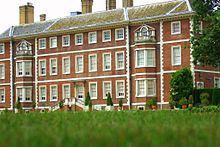 house
set in formal gardens on the bank of the River Thames in Ham,
south of Richmond. It was completed by 1610 by Thomas Vavasour, an
Elizabethan courtier and Knight Marshal to James I, but came to
prominence during the 1670s as the home of Elizabeth (Murray)
Maitland, the Duchess of Lauderdale and Countess of Dysart and her
second husband John Maitland, the Duke of Lauderdale. Originally
the house was constructed in an 'H' shape. house
set in formal gardens on the bank of the River Thames in Ham,
south of Richmond. It was completed by 1610 by Thomas Vavasour, an
Elizabethan courtier and Knight Marshal to James I, but came to
prominence during the 1670s as the home of Elizabeth (Murray)
Maitland, the Duchess of Lauderdale and Countess of Dysart and her
second husband John Maitland, the Duke of Lauderdale. Originally
the house was constructed in an 'H' shape.
The house
retains many original Jacobean features and furnishings and is
claimed by the National Trust to be "unique in Europe as the most
complete survival of 17th century fashion and power." Today it is
a Grade I listed building
In 1671
Lauderdale was granted by Letters Patent full freehold rights to
the Manors of Ham and Petersham and the 289 acres of leased land.
In 1672 Elizabeth and Lauderdale were married, and, with
Lauderdale's part in the CABAL, the family remained close to the
heart of court intrigue. The couple made extensive changes to the
house from 1673 extending the house into the south part of the
"H", making it "double pile", two rooms deep, across its breadth.
This filling in of the 'H' shape was what caused the original
painted declining sundial to be hidden but not destroyed. An
edition of the recent TV programme 'Secrets of the National Trust'
allowed a glimpse of the dial showing the 4am mark and part of the
scroll of the motto.
Click
HERE
to glimpse two images of part of the painting of the dial.
22.03.21 |
BSS Accounts Reporting Performance 2018 & 2019
The Charity
 Commission reports on its web
site
that the 2018 results were only filed at nearly the last minute.
It took about ten months - virtually the permitted limit - for the
2018 accounts and report to be filed.
The 2019
accounts for the year ending 31st December 2019 were finally filed
in August 2020. Click on the image for the reporting performance
last year. The Accounts for 2019 can be seen
HERE. They
show a fall in assets and apparently a significant conference
spend. Commission reports on its web
site
that the 2018 results were only filed at nearly the last minute.
It took about ten months - virtually the permitted limit - for the
2018 accounts and report to be filed.
The 2019
accounts for the year ending 31st December 2019 were finally filed
in August 2020. Click on the image for the reporting performance
last year. The Accounts for 2019 can be seen
HERE. They
show a fall in assets and apparently a significant conference
spend.
18.07.20, 06.09.20 |
Forecasting Weather
and Climate in 2021
The science behind
 forecasting of
both weather - and separately of climate - is increasingly being
shown to be faulted. Richard Feynman said that if an hypothesis
cannot be demonstrated by experiment or in reality by observation then it is
wrong. Not nearly wrong or nearly right, but wrong. Then we
have suggestions that we should stop eating meat because the
animals being raised for meat emit too much methane. This
simple analysis of the science behind these things gives food for
thought. Do read to the end too. It's only 13 mins. Click
HERE
or on the thumbnail to find this interesting article. forecasting of
both weather - and separately of climate - is increasingly being
shown to be faulted. Richard Feynman said that if an hypothesis
cannot be demonstrated by experiment or in reality by observation then it is
wrong. Not nearly wrong or nearly right, but wrong. Then we
have suggestions that we should stop eating meat because the
animals being raised for meat emit too much methane. This
simple analysis of the science behind these things gives food for
thought. Do read to the end too. It's only 13 mins. Click
HERE
or on the thumbnail to find this interesting article.
14.04.21 |
Manipulation
of Satellite Data?
Now it seems that even the published
satellite data regarding climate change is being manipulated.
Just see this latest
discovery.
Then see more proof here about the same with temperature data.
Can you ever imagine Richard Feynman or Albert
Einstein agreeing to do this?
07.10.19, 13.10.19 |
BSS 2018 Accounts
show a correction of an Accounting Error. The 2018
 Accounts
for
The British Sundial Society disclose an error
in the statement of Gift Aid for the previous year which was not spotted either
by the Trustees or by the Examiners employed to check the Accounts each year. The
Accounts for 2018 may be seen and
downloaded here. Accounts
for
The British Sundial Society disclose an error
in the statement of Gift Aid for the previous year which was not spotted either
by the Trustees or by the Examiners employed to check the Accounts each year. The
Accounts for 2018 may be seen and
downloaded here.
28.02.19, 02.05.19 |
 Is Pluto really a planet after all?
Scientists are now coming to argue that the
official
definition of a planet is ‘sloppy’ and that Pluto should never have been
downgraded in the 2006 review by the IAU (International Astronomical Union). The
2006 definition was devised (it seems) more to stop too many planets being
declared than ever it was to provide a sensible definition. The discovery in
2005 of Eris, a body more massive than the smallest then-accepted planet (Pluto)
forced the issue and the new definition thereafter has required a 'true' planet
to be roughly spherical, orbit the sun and to clear its orbit. Pluto and Eris
fail, not surprisingly, to clear their part of the Kuiper belt and in any case
University of Central Florida’s planetary scientist Philip Metzger points
out that strictly speaking no planet clears its orbit not least because of
the newly discovered dust rings in the orbits of
Mercury
and
Venus.
Maybe the definition of a planet should be set by diameter and whether or not a
sundial can be constructed for it anywhere on its surface?
Is Pluto really a planet after all?
Scientists are now coming to argue that the
official
definition of a planet is ‘sloppy’ and that Pluto should never have been
downgraded in the 2006 review by the IAU (International Astronomical Union). The
2006 definition was devised (it seems) more to stop too many planets being
declared than ever it was to provide a sensible definition. The discovery in
2005 of Eris, a body more massive than the smallest then-accepted planet (Pluto)
forced the issue and the new definition thereafter has required a 'true' planet
to be roughly spherical, orbit the sun and to clear its orbit. Pluto and Eris
fail, not surprisingly, to clear their part of the Kuiper belt and in any case
University of Central Florida’s planetary scientist Philip Metzger points
out that strictly speaking no planet clears its orbit not least because of
the newly discovered dust rings in the orbits of
Mercury
and
Venus.
Maybe the definition of a planet should be set by diameter and whether or not a
sundial can be constructed for it anywhere on its surface?
24.03.19
 Later
knowledge from 2021.. Later
knowledge from 2021..
Just why
do today's planetary researchers ignore the
IAU’s definition of a planet in favour of a geophysical definition that’s
completely agnostic to the total number of planets in the Solar System?
Simple, Dr Alan Stern (the planetary scientist who lead
NASA’s New Horizons mission that explored the Pluto system in 2015) suggests
that just two tests apply to establish if a celestial body is a planet:
** It has enough mass (and therefore gravity)
to be round.
** It
has insufficient mass to undergo nuclear fusion in its interior.
Read more here
 Later
knowledge from 2023.. Later
knowledge from 2023..
Now in Septmber 2023 the
debate has changed AGAIN. Not only is the debate back on about Pluto's
planetary status but it is now thought that
together with its moon - Charon - it might in reality be a unique double
planet system in our very own solar system.
Read more
of this here
Come back Planet
Pluto - all is forgiven?
24.03.19, 13.03.2022, 16.09.2023 |
Time Lapse Videos of sundials and
shadows? YouTube is an
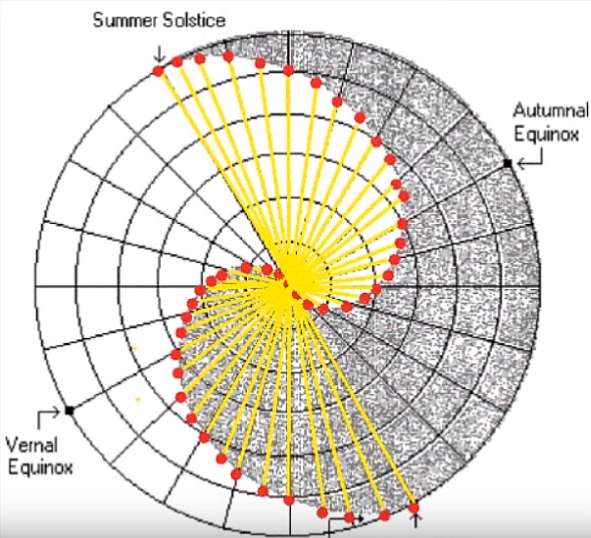 excellent
source of interest where sundials are concerned. excellent
source of interest where sundials are concerned.
If you have ever wanted to see a time lapse video of
shadows moving with time and/or with the seasons and related aspects do take a
look
here.
15.02.19 |
|
A Form of Violence?
Some climate scientists still struggle to cope with people
who disagree. So some time back, Cliff Mass – a Professor of Atmospheric
Sciences at the University of Washington as well as a radio weatherman – decided
to write something about the wildfires in California, and in particular, the
question of whether climate change had played a role. At the end of a long
analysis of climatological trends in the area, he drew his conclusions:
Was Global Warming A Significant Factor in California's Camp Fire? "The Answer
is Clearly No". [See
full article here]
Now
take a look at some of
the replies! And you thought scientists were logical?
02.12.18 |
Reality
finally dawns about
urban warming! Now actually verified by NOAA (the
National Oceanic and Atmospheric Administration of the USA). Poor
weather station siting leads to artificial long term warming. How long
has it taken to get to this point? But here we really are - let all
real scientists rejoice.
All the links are here.
See "Impacts of Small-Scale Urban Encroachment on Air Temperature
Observations", Ronald D. Leeper, John Kochendorfer, Timothy Henderson, and
Michael A. Palecki
HERE
06.05.19 |
Mike Shaw's Web Site
has sadly been discontinued but some of Mike's
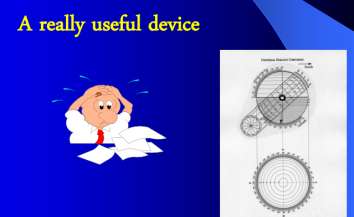 excellent
contributions to dialling can still be found elsewhere on the Internet.
One such is his 'Really Useful Device', a slide presentation showing
ways in which you may construct a Diallist's Companion for
your own location. The presentation is clear and well worth looking
at. It may still be found for download as a PDF (12.5MB) at
https://nanopdf.com/download/udc_pdf excellent
contributions to dialling can still be found elsewhere on the Internet.
One such is his 'Really Useful Device', a slide presentation showing
ways in which you may construct a Diallist's Companion for
your own location. The presentation is clear and well worth looking
at. It may still be found for download as a PDF (12.5MB) at
https://nanopdf.com/download/udc_pdf
Then click on the Orange button in the upper left of the screen marked
"DOWNLOAD PDF (12.3MB)". The file will then be downloaded to your PC. Get it
whilst you can!!
19.08.18 |
Jim
Tallman's Artisan Sundials
page is well worth a look.

Artisan sundials are specially designed and constructed to
provide accuracy as well as a genuine sense of presence in time and space. They
are authentic scientific instruments that are carefully constructed and capable
of telling very accurate time.
There's more here
14.07.18 |
Jay Campbell's New Dial
Have a look at Jay
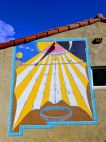 Campbell's
new sundial in New Mexico USA. It (like his accompanying website) is just
nearing completion but there will be an article about it in the December issue
of Sky & Telescope magazine, available in late October. Campbell's
new sundial in New Mexico USA. It (like his accompanying website) is just
nearing completion but there will be an article about it in the December issue
of Sky & Telescope magazine, available in late October.
See more
about this venture
01.10.18 |
Have you ever purchased a delightful
sun dial for your
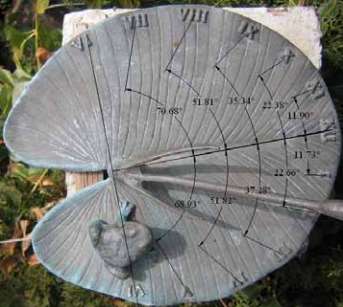 garden,
but found it does not work? No problem". That is the encouraging beginning of an
excellent article in PDF format that discusses how to take a store bought
dial and then adjust it so it will work for you. Entitled
"REVERSE ENGINEERING STORE-BOUGHT GENERIC DIALS" It is just one
extract from the fascinating book "ILLUSTRATING TIME'S SHADOW" by Simon
Wheaton-Smith
whose website
(already mentioned elsewhere on this page) is an incredible resource for all
diallists. garden,
but found it does not work? No problem". That is the encouraging beginning of an
excellent article in PDF format that discusses how to take a store bought
dial and then adjust it so it will work for you. Entitled
"REVERSE ENGINEERING STORE-BOUGHT GENERIC DIALS" It is just one
extract from the fascinating book "ILLUSTRATING TIME'S SHADOW" by Simon
Wheaton-Smith
whose website
(already mentioned elsewhere on this page) is an incredible resource for all
diallists.
20.07.18
|
The National Oceanic & Atmospheric
Administration of
 America
(NOAA) is well known for its research into greenhouse gas and carbon cycle
feedbacks, changes in clouds, aerosols, surface radiation, and recovery of
stratospheric ozone. In Sept 2018 it released a report claiming that the summer
of 2018 was the fourth hottest on record in the US, and it went on to claim that
this summer was just as hot as 1934. Yet, when this claim is examined it turns
out that it may not be correct.
Listen to a US
scientist's analysis of this and read about some of
Heller's other concerns about climate science misinformation today. Form
your own opinion. America
(NOAA) is well known for its research into greenhouse gas and carbon cycle
feedbacks, changes in clouds, aerosols, surface radiation, and recovery of
stratospheric ozone. In Sept 2018 it released a report claiming that the summer
of 2018 was the fourth hottest on record in the US, and it went on to claim that
this summer was just as hot as 1934. Yet, when this claim is examined it turns
out that it may not be correct.
Listen to a US
scientist's analysis of this and read about some of
Heller's other concerns about climate science misinformation today. Form
your own opinion.
15.09.18 |
Kevin Karney's website
As well as Kevin's earlier site
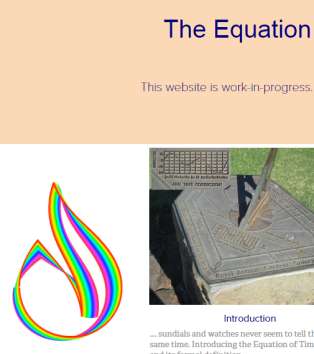 ►here
which provides a wide variety of data for those interested in sundials and solar
parameters, a 2018 site
►here
is
now up and includes three sections: ►here
which provides a wide variety of data for those interested in sundials and solar
parameters, a 2018 site
►here
is
now up and includes three sections:
- The Equation of Time - 8 pages.
- Sundials that are (or can be) Equation corrected - 8 pages
- Mechanical Means to Simulate the EoT - 6 pages.
Well worth a look!
9.9.18, 22.04.20 |
An On-line Sundial Register. There's an interesting
browse to be had of
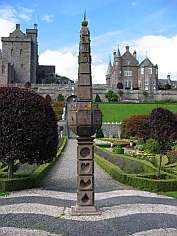 the
Sundial
Website that is operated by
Dennis Cowan
of Fife. As well as giving an excellent introduction to the sundials
of Scotland, the site includes a 92 page
Sundial Register of dials known to him, (not just those in
Scotland), five sundial trails, several safaris and seven articles about
dials and dialling. A really excellent site. the
Sundial
Website that is operated by
Dennis Cowan
of Fife. As well as giving an excellent introduction to the sundials
of Scotland, the site includes a 92 page
Sundial Register of dials known to him, (not just those in
Scotland), five sundial trails, several safaris and seven articles about
dials and dialling. A really excellent site.
Image
used with permission |
Have a look at Karen's Page!
Want to make a
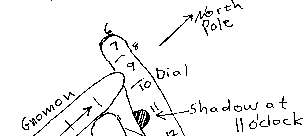 sundial
and compass from your own fingers, a sundial and compass from an embroidery
hoop. an origami sundial wristwatch. a horizontal sundial using only compass,
straight edge and protractor or use your hand as a nocturnal or even make a
Universal Capuchin sundial?
This is the
place to come! sundial
and compass from your own fingers, a sundial and compass from an embroidery
hoop. an origami sundial wristwatch. a horizontal sundial using only compass,
straight edge and protractor or use your hand as a nocturnal or even make a
Universal Capuchin sundial?
This is the
place to come!
29.08.18 |
 SunInfo's
Archive Pages.
This, our main page, gets larger and larger as time
goes by and of course the page would get slower to load. However, many of the
stories, comments and information in it are still of interest even though they
may not be recent. Accordingly we archive most of the older entries so
that little or nothing is permanently lost. Our
Archive Page 1
and, from 2018, our
Archive Page 2
are available!! Have a browse
of them for yourself. SunInfo's
Archive Pages.
This, our main page, gets larger and larger as time
goes by and of course the page would get slower to load. However, many of the
stories, comments and information in it are still of interest even though they
may not be recent. Accordingly we archive most of the older entries so
that little or nothing is permanently lost. Our
Archive Page 1
and, from 2018, our
Archive Page 2
are available!! Have a browse
of them for yourself.
04.05.15, 15.07.17, 06.05.18,23.09.18 |
|
Interesting News,
Articles & Links |
A visit to Windsor..
In 1998 Jane Walker and her husband Peter
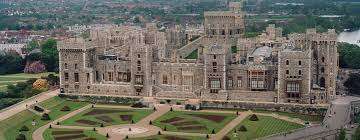 found
an interesting booklet that led them to a viewing of the late Queen's Dial in Windsor
Castle. The dial stands on the North Terrace with the Monarch's private
garden to one side and a splendid view over the town of Windsor to the playing
fields of Eton on the other. The gnomon is beautifully engraved and carries the
King's monogram of the time "CR" intertwined so that the initials can be read from either
side. Read all about Jane's experience found
an interesting booklet that led them to a viewing of the late Queen's Dial in Windsor
Castle. The dial stands on the North Terrace with the Monarch's private
garden to one side and a splendid view over the town of Windsor to the playing
fields of Eton on the other. The gnomon is beautifully engraved and carries the
King's monogram of the time "CR" intertwined so that the initials can be read from either
side. Read all about Jane's experience
25.06.18 |
Peter Daykin's Derbyshire Sundials Page is well
worth a visit
 -
not least because it includes such examples as a cross dial and of course the
famous Eyam Dial. The website includes details of many Derbyshire dials
and even includes three sundial calculators. On almost every page there is a
description of the location as well as of the dial. A delight to peruse. -
not least because it includes such examples as a cross dial and of course the
famous Eyam Dial. The website includes details of many Derbyshire dials
and even includes three sundial calculators. On almost every page there is a
description of the location as well as of the dial. A delight to peruse.
You can get to this excellent page
Here
16.05.18
|
|
 Interested
in browsing our library or our archives?
Our extensive library of Dialling Documents
and related material is
HERE. It is regularly
extended. Interested
in browsing our library or our archives?
Our extensive library of Dialling Documents
and related material is
HERE. It is regularly
extended.
ALSO our earlier stories and
News Items up to 2017 are Archived
HERE
and,
from 2018 onwards
HERE. In both archives entries are stored 'earliest-deleted' at the top,
'most-recently' deleted at the bottom. We hope you enjoy them.
06.08.15, 13.10.17, 06.03.18, 06.06.18 |
Some Complications of Dial Refurbishment as considered
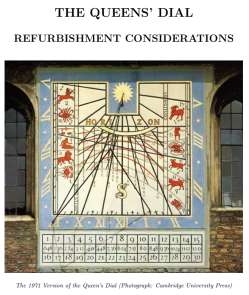 prior
to the restoration of the Queens' College dial in 2006/7. This is an
interesting document which is well worth a read by those facing similar
problems! Includes the oldest known photograph of the dial and consideration of
the several issues that remained after the previous repainting in 1971. prior
to the restoration of the Queens' College dial in 2006/7. This is an
interesting document which is well worth a read by those facing similar
problems! Includes the oldest known photograph of the dial and consideration of
the several issues that remained after the previous repainting in 1971.
To read more click the image or here:
The Queens' Dial or to read Charles Aked's 1994
article on the dial go
HERE.
09.06.18, 08.04.2023 |
 Andrew
Somerville's Interesting Letter of 1986 concerning the
Queens' College Sundial in Cambridge was published in the BSS Bulletin in
1997 and those with an interest in dialling might like to read it again. One
matter concerned the marking of the dial with the word Longitudo and
whether or not there was an error in the dial's markings. Andrew was of course
the first Chairman of the Society and this correspondence was dated 1986 only a
few years after the Society's formation.
Read the correspondence here Andrew
Somerville's Interesting Letter of 1986 concerning the
Queens' College Sundial in Cambridge was published in the BSS Bulletin in
1997 and those with an interest in dialling might like to read it again. One
matter concerned the marking of the dial with the word Longitudo and
whether or not there was an error in the dial's markings. Andrew was of course
the first Chairman of the Society and this correspondence was dated 1986 only a
few years after the Society's formation.
Read the correspondence here
05.08.17 |
|
 The John
Churchill Collection! SunInfo
is delighted to be able to present a collection of just some of the
photographs of dials that former BSS Trustee John Churchill and his
wife took during his lifetime. They represent an eclectic
selection of his interests and as well of course, a valuable and lasting
record of the condition of the dials up to the time of the millennium. The John
Churchill Collection! SunInfo
is delighted to be able to present a collection of just some of the
photographs of dials that former BSS Trustee John Churchill and his
wife took during his lifetime. They represent an eclectic
selection of his interests and as well of course, a valuable and lasting
record of the condition of the dials up to the time of the millennium.
Click to be taken to the John Churchill page.
 **More
images by John C hurchill now added** **More
images by John C hurchill now added**
14.08.15, 14.03.17, 02.04.17
|
The Dial of William Hughes of Bryngola.
In what can only be
 described
as a tour de force of investigation, John Davis recently studied a dial dated
1775 which was made for William Hughes of Bryngola in
Llangwyllog, a small village and ancient parish in the
centre of Anglesey, Wales. The church of St Cwyllog (illustrated) still bears
memorials to the family to this day. John deduces that the elaborately engraved
dial may have been made for Hughes by one of the Owen dynasty of clockmakers
perhaps using components from the clockmaking area around Prescot in Lancashire.
A fascinating BSS article which may be read at John's website at this link
Dial of William Hughes. described
as a tour de force of investigation, John Davis recently studied a dial dated
1775 which was made for William Hughes of Bryngola in
Llangwyllog, a small village and ancient parish in the
centre of Anglesey, Wales. The church of St Cwyllog (illustrated) still bears
memorials to the family to this day. John deduces that the elaborately engraved
dial may have been made for Hughes by one of the Owen dynasty of clockmakers
perhaps using components from the clockmaking area around Prescot in Lancashire.
A fascinating BSS article which may be read at John's website at this link
Dial of William Hughes.
1.11.17 |
A lovely selection of Italian sundials
Here is a link to a whole
 load
of images of Italian sundials that have been taken by photographer
Darek Oczki in the areas of Umbria, South Tuscany and
Rome between August 2010 and September 2018. Some (under the Activity
sidebar) are earlier. load
of images of Italian sundials that have been taken by photographer
Darek Oczki in the areas of Umbria, South Tuscany and
Rome between August 2010 and September 2018. Some (under the Activity
sidebar) are earlier.Well worth a look!
"Zegary
słoneczne Italii"
Check
these out here.
26.09.18 |
Great Circle was thought to be
back!!
Those diallists who liked to rely
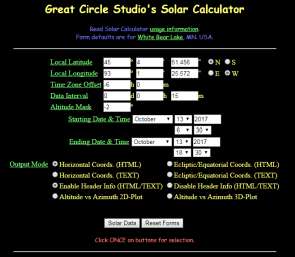 on
Great Circle Studio's solar data calculator to obtain or print
off a table of solar parameters at any time interval have recently been troubled
by its apparent absence. Then it was thought to be found at
Great Circle Studio
Solar Data . However, it does not 'work', the server side links are not
established. But, after contact, the website owner claimed to be 'on the
case'. In the meantime you could try
MIDC SPA Calculator (max intervals of one hour) or
Sun
Ephemeris, on
Great Circle Studio's solar data calculator to obtain or print
off a table of solar parameters at any time interval have recently been troubled
by its apparent absence. Then it was thought to be found at
Great Circle Studio
Solar Data . However, it does not 'work', the server side links are not
established. But, after contact, the website owner claimed to be 'on the
case'. In the meantime you could try
MIDC SPA Calculator (max intervals of one hour) or
Sun
Ephemeris,
13.10.17,
15.10.17, 18.10.17 |
The Sundials at New College Oxford. In an interesting
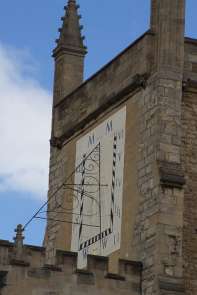 article
Harriet James describes the dials that have existed at New College Oxford - the
college that was 'new' in 1379 - and gives an interesting insight to her
replacement of one that was on the Muniment Tower in 1696. article
Harriet James describes the dials that have existed at New College Oxford - the
college that was 'new' in 1379 - and gives an interesting insight to her
replacement of one that was on the Muniment Tower in 1696.
Read the text of Harriet James' BSS Article
in 2000 to know
more about the Sundials of New College past and present.
20.10.16 |
|
BSS Member Ian Maddocks really started
something by finding a
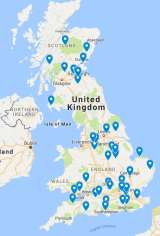 whole load more
dials
that were apparently then unknown to BSS! In two messages to the
International Sundial Mail List he announced his discovery that Twitter®
and Instagram® contain many mentions of UK dials that are not recorded in
the most recently published
BSS Register of Dials - though of
course some may be held on file by the Society's Registrar ready to be
published next time. Whatever, this is excellent news for all those
interested in dialling. Not only that but Ian has combined a list of these
on his Google drive. They may be viewed
here.
There is also a 'map' of their locations
here. whole load more
dials
that were apparently then unknown to BSS! In two messages to the
International Sundial Mail List he announced his discovery that Twitter®
and Instagram® contain many mentions of UK dials that are not recorded in
the most recently published
BSS Register of Dials - though of
course some may be held on file by the Society's Registrar ready to be
published next time. Whatever, this is excellent news for all those
interested in dialling. Not only that but Ian has combined a list of these
on his Google drive. They may be viewed
here.
There is also a 'map' of their locations
here.
Now with Graham Stapleton's help he has added even to this amazing number
and with pics too
here.
12.09.16, 22.11.16 |
Newton's Sundial
Courtesy of Ian Maddocks and the Objectivity
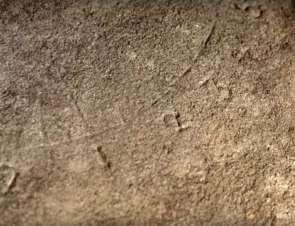 YouTube
channel we are able to see a short video clip which, after half way, shows one
of the stone dials scratched by Isaac Newton into the walls of his home.
Click on the image for a larger picture,
Here to see the video and
Here to see the record
document of items like this from Newton's home. YouTube
channel we are able to see a short video clip which, after half way, shows one
of the stone dials scratched by Isaac Newton into the walls of his home.
Click on the image for a larger picture,
Here to see the video and
Here to see the record
document of items like this from Newton's home.
27.04.16 |
The Mass Dials of Gloucestershire. Tony Wood, in a reprint
from Gloucestershire
History No. 21 (2007) pages 16-22, describes the many mass dials of
Gloucestershire. Mass dials, or scratch dials, are mediaeval sundials found on
churches. Chronologically they appear after Saxon dials (c650 — c1050) and
before the present day's ‘scientific’ dials,
which have a sloping gnomon, which appeared in the 16th century
but which only came to some rural areas in the mid 17th century.
Read
Tony's article here
01.05.17 |
|
The
increasing importance of European Mass Dials
The growing
interest in mass dials in continental Europe is evidenced by a flow of
reports and photographs. BSS of course has quite enough to do without
compiling registers of overseas dials but the reports are filed and
available for comparison with dial types and locations recorded in
Europe.
Here Tony Wood reflects on the
similarities and origins of mass dials in the British Isles and Europe. |
Astrolabes, Cross Staffs and Dials. Way back in
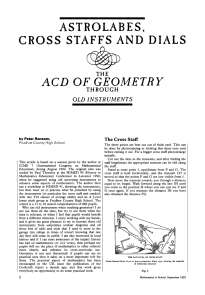 1992,
Peter Ransom, later to be elected President of the Mathematical Association,
published a fascinating article extolling the use of old scientific
instruments when teaching geometry in schools. His article makes wonderful
reading and gives the background to (and the use of) the Cross Staff, a
Horizontal Sundial and even a quadrant. Click
here for a link to this article. NB
Free registration to MyJStor allows free on line reading of this
article. A small charge is required to download and keep the whole
article. 1992,
Peter Ransom, later to be elected President of the Mathematical Association,
published a fascinating article extolling the use of old scientific
instruments when teaching geometry in schools. His article makes wonderful
reading and gives the background to (and the use of) the Cross Staff, a
Horizontal Sundial and even a quadrant. Click
here for a link to this article. NB
Free registration to MyJStor allows free on line reading of this
article. A small charge is required to download and keep the whole
article.
18.11.15 |
Mystery of a Missing Dial.
Way back in September 1992
super-sleuth John
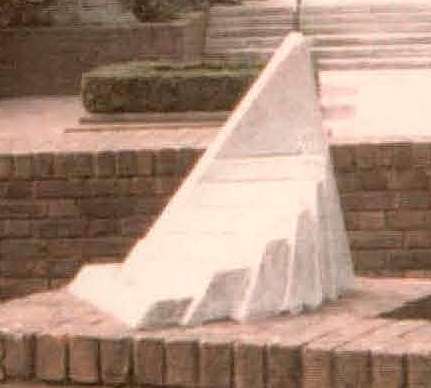 Ingram spotted
this unusual and it is believed, unique, dial where steps on a triangular block
were used to tell the time. When he returned in 2004 to York Rd on the
South Bank in London to record it for the BSS Register, it was missing!
Enquiries of the Council were all to no avail. Was it stolen or was it
lost in the then recent Jubilee Line Tube works? Click on the image for a wider
view. The telegraph pole in the middle right of the larger image is said to mark
the place where the Festival of Britain Skylon stood in 1951. Anybody able
to tell us more about it, its designer and who made it? Replies to the
Webmaster please.
Photo courtesy of J Ingram. Ingram spotted
this unusual and it is believed, unique, dial where steps on a triangular block
were used to tell the time. When he returned in 2004 to York Rd on the
South Bank in London to record it for the BSS Register, it was missing!
Enquiries of the Council were all to no avail. Was it stolen or was it
lost in the then recent Jubilee Line Tube works? Click on the image for a wider
view. The telegraph pole in the middle right of the larger image is said to mark
the place where the Festival of Britain Skylon stood in 1951. Anybody able
to tell us more about it, its designer and who made it? Replies to the
Webmaster please.
Photo courtesy of J Ingram.
01.12.15 |
SunInfo opens a New Page!
- listing the HUGE bibliography of BSS
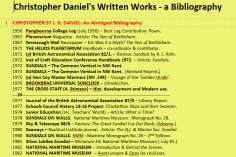 President
Christopher St JH Daniel MBE. Listed
here are his published
articles, the full list of his many contributions to Clocks Magazine
and even a summary of the sales of his extraordinarily popular
Shire Publications book 'Sundials'. We are delighted to be
able to provide as an academic resource the incredible output of the UK's
foremost Diallist. President
Christopher St JH Daniel MBE. Listed
here are his published
articles, the full list of his many contributions to Clocks Magazine
and even a summary of the sales of his extraordinarily popular
Shire Publications book 'Sundials'. We are delighted to be
able to provide as an academic resource the incredible output of the UK's
foremost Diallist. |
|
Have a look at Illustrating Shadows.
The
website of Simon Wheaton-Smith is an excellent dialling resource with
lots of downloads, presentations, dial designs etc. Most free and all well
worth a look. You can access it
here. |
The Sundial Removed?
Here
Harriet James tells the story of the 'Simmons Bequest' that threw
up the idea that the huge dial in All Souls College Oxford might
be returned to its earlier place in the College. The early history of
the dial is here, Christopher Wren and William Oughtred both make an
appearance and all is followed by the final decision by the College.
Read the
BSS
Bulletin article dated 2006 for yourself here
[C-466/12].
14.07.16 |
Sundials to see.
A new venture for SunInfo.
Here is a changing
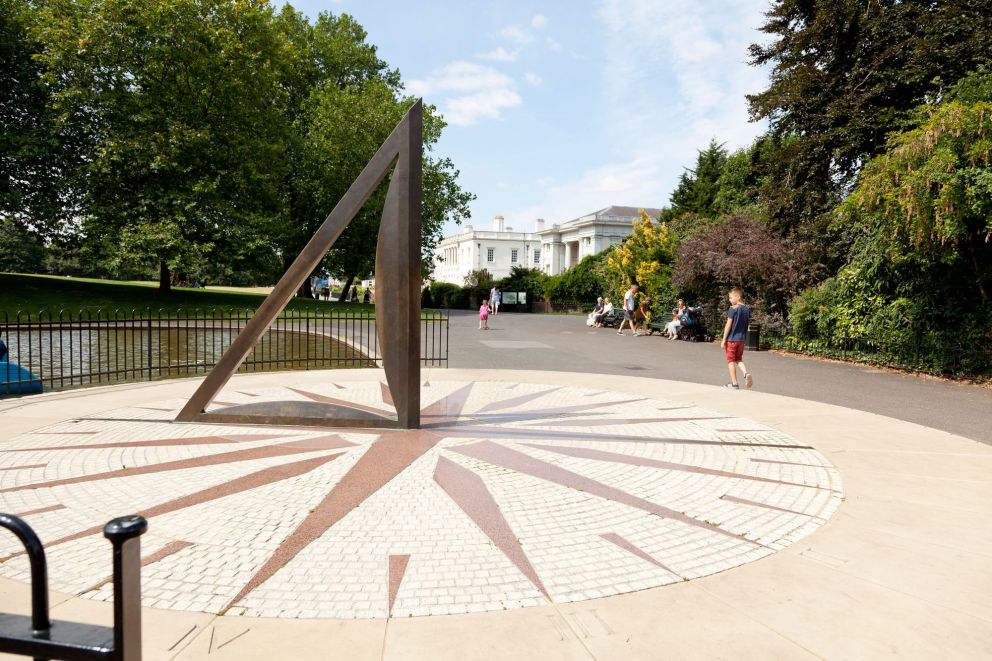 section
of dials that are worth visiting. section
of dials that are worth visiting.
This time it is the Millennium Dial in Greenwich Park
in London. It was designed by BSS President Chris Daniel.
Click on the picture for a larger image |
BSS 2016 Accounts finally available. Owing to what
is
 presumed to have
been an administrative problem at the Charity Commission, anyone wishing to see
the 2016 accounts for the British Sundial
Society had not been able to view them on the Commission's website -
only the Trustees' Report was initially available. Both may be now viewed at the
link above
(courtesy of the CC) or at the
Commission's website. The latest accounts show a welcome profit after the
earlier years of worrying losses. presumed to have
been an administrative problem at the Charity Commission, anyone wishing to see
the 2016 accounts for the British Sundial
Society had not been able to view them on the Commission's website -
only the Trustees' Report was initially available. Both may be now viewed at the
link above
(courtesy of the CC) or at the
Commission's website. The latest accounts show a welcome profit after the
earlier years of worrying losses.
11.07.17 |
|
 Want
a little card to carry with you to help you check a
sundial's displayed time against your watch at ANY Longitude or
Latitude in the British Isles? Hurry if you want one of the few
remaining printed versions... Want
a little card to carry with you to help you check a
sundial's displayed time against your watch at ANY Longitude or
Latitude in the British Isles? Hurry if you want one of the few
remaining printed versions...
Click the picture for more details! |
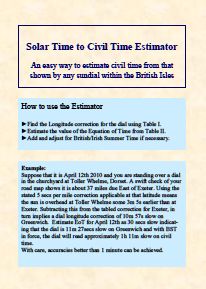 |
 Why
not get The Recorder's Reference? It
provides anyone interested in dialling with a way to estimate by how much
a non-direct-south vertical dial declines and also finds the design
latitude for any horizontal dial. Why
not get The Recorder's Reference? It
provides anyone interested in dialling with a way to estimate by how much
a non-direct-south vertical dial declines and also finds the design
latitude for any horizontal dial.
Click the picture for more details! |
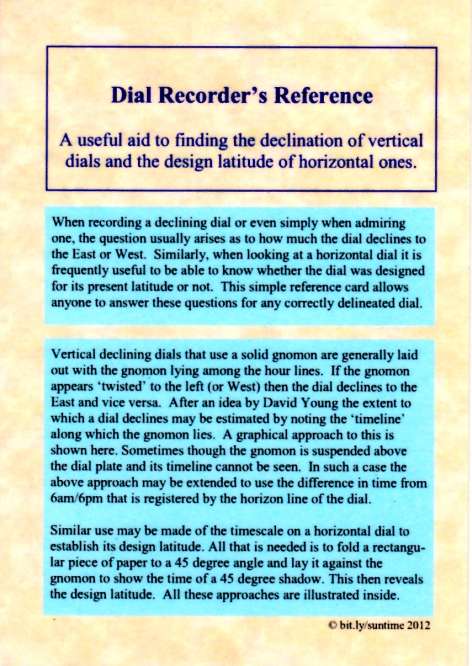 |
|
Hans Holbein the Younger's 1533 painting
of The Ambassadors is available to view at the
National Gallery in London. However it is also available on Google's Art
Project and at astonishing resolution too - probably better than even
if you were looking at the original! It shows all sorts of early
dialling instruments as well as the famous anamorphosis. Can you
identify the instruments? Check it out
here.
 Papers
discussing the instruments can be read for free on line
►here (1962)
or
►here
(1999) Papers
discussing the instruments can be read for free on line
►here (1962)
or
►here
(1999)
04.05.13
|
Check out Three New Additions made to
SunInfo's Historical Document Archive. They are
the complete
Bibliography
of BSS President Christopher Daniel's written works,
including sales figures for his Shire Publications Book 'Sundials', details of
all seventeen of his
Restoration Projects undertaken up to 2010 and a list of all his
Dialling Commissions
11.11.14 |
Yvon Massé's program Calcad
has been updated. Calcad is an
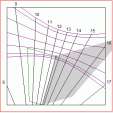 easy way to
draw sundials without knowing declination, inclination or even the geographical
coordinates!... The Freeware program runs on Windows, GNU/Linux and Mac OS
X. Download it
here.
The instruction manual can be perused
here easy way to
draw sundials without knowing declination, inclination or even the geographical
coordinates!... The Freeware program runs on Windows, GNU/Linux and Mac OS
X. Download it
here.
The instruction manual can be perused
here
Image used with permission. 07.10.14 |
|
Lost Dials of the UK.
A new feature has been instituted here on
SunInfo
to present some examples of interesting but now lost UK sundials, starting with
the one at the Mansion at Bletchley Park in Buckinghamshire. Check them out
►here.
|

Design of a TRIPLE Horizontal
dial for
California by John Davis, more information and details of how it was
etched
►Here |
Smiling Sundials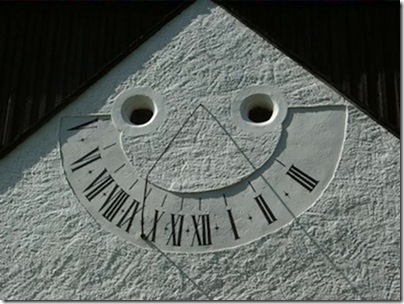 .
Pareidolia or what? Here
are two dials that seem to be .
Pareidolia or what? Here
are two dials that seem to be
 smiling!
They are both in Germany. The first is in Dörnthal, Sachsen
and pareidoliathe second in Nuremberg. smiling!
They are both in Germany. The first is in Dörnthal, Sachsen
and pareidoliathe second in Nuremberg.
How many more do you know? |
A NEW Sundial Data Resource has been
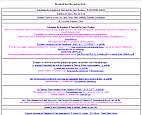 developed by
Kevin Karney. Available
►here
the page provides a wide variety of data for those interested in sundials and
solar parameters. The latest addition is to provide a high precision
calculator for the Equation of Time and the sun's position. However the
page also contains links to dial designs of his own and to animations of dial
shadows. Well worth a look! developed by
Kevin Karney. Available
►here
the page provides a wide variety of data for those interested in sundials and
solar parameters. The latest addition is to provide a high precision
calculator for the Equation of Time and the sun's position. However the
page also contains links to dial designs of his own and to animations of dial
shadows. Well worth a look!
13.06.14 |
Did you know?
An
astonishing number of pictures
 of
sundials and their pedestals can be found by searching Google®. Try
looking
here for one amazing collection. Here you can see
both sides of a rare Melvin dial, a few other very old dials, some
heliochronometers, modern dials and of course some non-working 'garden
centre' dials as well. Well worth a look. of
sundials and their pedestals can be found by searching Google®. Try
looking
here for one amazing collection. Here you can see
both sides of a rare Melvin dial, a few other very old dials, some
heliochronometers, modern dials and of course some non-working 'garden
centre' dials as well. Well worth a look.
09.10.13 |
Want to know something about Sundials in the
 Southern
hemisphere? Then there's no better introduction than the web site of the
company Sundials Australia,
owned and run by physicists and BSS Members, Margaret Folkard and John
Ward. Southern
hemisphere? Then there's no better introduction than the web site of the
company Sundials Australia,
owned and run by physicists and BSS Members, Margaret Folkard and John
Ward.
19.12.13 |
|
Sundials of New Zealand.
Rosaleen Robertson runs the
Sundial Association of New Zealand and also operates a Sundials
Blog, (sundials-rosaleen.blogspot.com)
which shows some of the sundials and sundial Trails in New Zealand.
Worth a look. A list of web addresses relating to the NZ Sundial
Association is
►Here.
04.02.14
|
|
Want to know more about sundials? Then there is no
better place to learn about all aspects of the topic than from Wikipedia!
Click
here
to see this important article. |
|
 Then and Now...
A
NEW page has been started here on
SunInfo to show some of our sundials as they were long ago and as they
are now. The
first entry is the unusual dial at Warwick Castle - a dial which on
the face of it looks unfinished to our eyes because it has no numerals.
Yet a 1912 drawing of it shows that it possibly never had! The
second in this series concerns the famous Countess's Pillar, the
third concerns a moved dial in Rye and Then and Now...
A
NEW page has been started here on
SunInfo to show some of our sundials as they were long ago and as they
are now. The
first entry is the unusual dial at Warwick Castle - a dial which on
the face of it looks unfinished to our eyes because it has no numerals.
Yet a 1912 drawing of it shows that it possibly never had! The
second in this series concerns the famous Countess's Pillar, the
third concerns a moved dial in Rye and
 the
fourth the
Pilkington & Gibbs dial at Thornton Manor. Have a look
here
to see for yourself and keep coming back to see what other dials have been
added as we explore more of these interesting sundials of the UK.
►Then and Now the
fourth the
Pilkington & Gibbs dial at Thornton Manor. Have a look
here
to see for yourself and keep coming back to see what other dials have been
added as we explore more of these interesting sundials of the UK.
►Then and Now
07.11.13, 13.11.13, 24.12.13
|
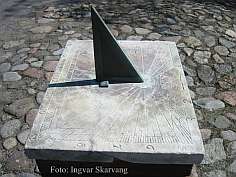 The
Sundials of Norway. There are not very many known
sundials in Norway but those that do exist are well worth looking at.
Click here:
►Norway's Dials The
Sundials of Norway. There are not very many known
sundials in Norway but those that do exist are well worth looking at.
Click here:
►Norway's Dials |
| Sun Spot Pointers.
►Sun Spot Pointers is a
sundial related Blog operated by Perry Millward. Glance through
this for interesting new information about Sundials of the World.
24.02.14 |
The Sundials of Country Life Magazine.
Why not take a tour from your
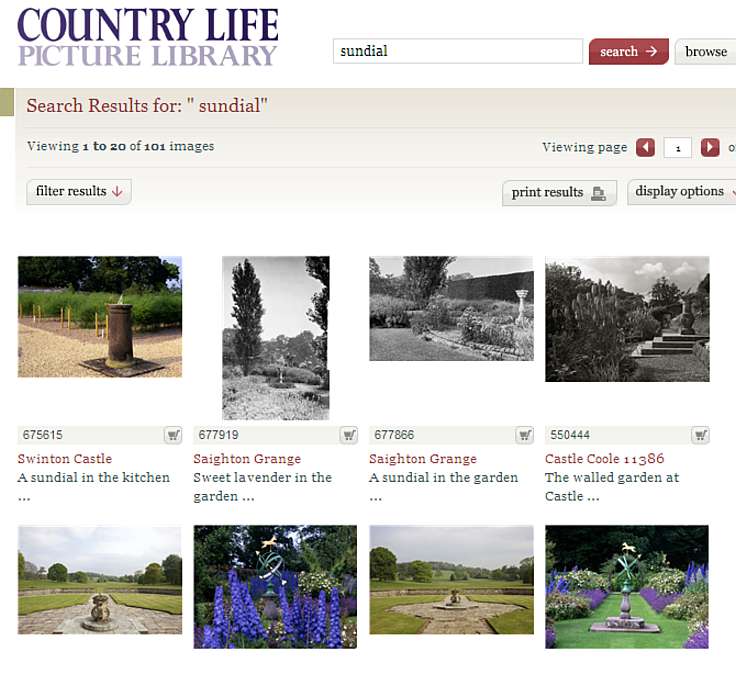 armchair
of all six pages (well, five and a bit!) of the sundial photographs that are
in the Picture Library of Country Life? Some may not even be in the
BSS Register! The Elihu Yale dial of Glemham Hall is there in 1910
though! Have a look
here. armchair
of all six pages (well, five and a bit!) of the sundial photographs that are
in the Picture Library of Country Life? Some may not even be in the
BSS Register! The Elihu Yale dial of Glemham Hall is there in 1910
though! Have a look
here. |
Sundial Societies,
Groups and Websites of the World.
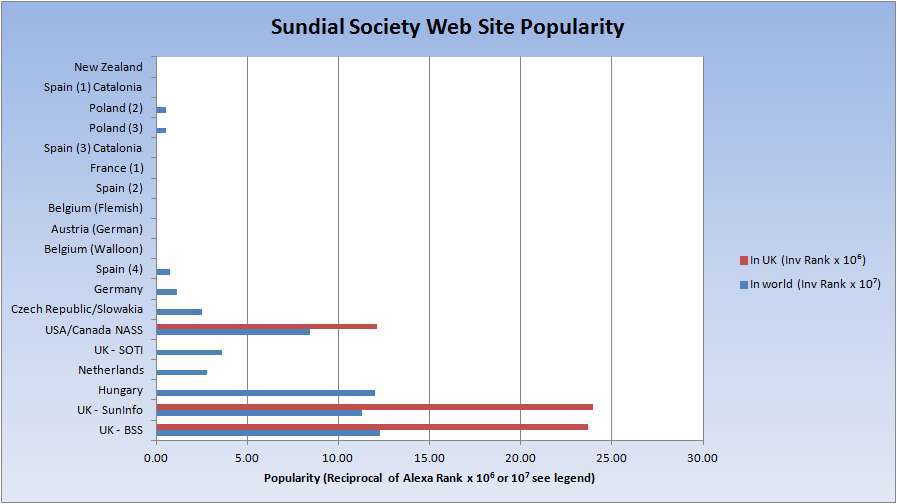 Click
►here
for a list of many Sundial related sites, their web addresses, when they
were founded and their popularity. Click
►here
for a list of many Sundial related sites, their web addresses, when they
were founded and their popularity.
24.02.14 |
|
Make your own paper sundial.
Fabio Savian's collection of 13 amazing designs for paper
sundials is now available to all. He has designed several but others
like Valentin Hristove and the North American Sundial Society have also
contributed designs to this excellent Sundial Atlas project. Just have a
look
►here !
There's even a design for a solar compass.
Or you can go back to this 2004 BBC page for Norfolk
Children. It too tells
how to make a paper sundial. It will work for most of England though
you will need to correct the reading a little if you want to measure clock
time. |
Francis Barker's Instructions for Setting a Dial.
Francis Barker of Clerkenwell was an important dial maker at the start of
the 20th Century. In 1914 he contributed a chapter about setting up a
dial to Geoffrey Henslow's Book: 'Ye Sundial Booke', 1914.
This chapter makes interesting reading.
See it
►here |
Edward R Martin's Mass Dial Database
was
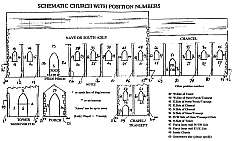 compiled
by him over many years using an early computer and specialist software
written by his son. In fact all the data was at one time thought
to be lost following a computer failure not long before Edward died. In
2002 the factual detail of the database - though sadly not his novel
customised dial diagrams - were eventually recovered for him in 2002 by
Patrick Powers but, after his death, amazingly were again mislaid until
now. This database of some 1000 mass dials includes some details that
are not now recorded even in the BSS Mass Dial Register. A guide
to Edward's novel codes for the locations of the dials on the church is
included. compiled
by him over many years using an early computer and specialist software
written by his son. In fact all the data was at one time thought
to be lost following a computer failure not long before Edward died. In
2002 the factual detail of the database - though sadly not his novel
customised dial diagrams - were eventually recovered for him in 2002 by
Patrick Powers but, after his death, amazingly were again mislaid until
now. This database of some 1000 mass dials includes some details that
are not now recorded even in the BSS Mass Dial Register. A guide
to Edward's novel codes for the locations of the dials on the church is
included.
The recovered file (in PDF format) may be viewed
here
NB An Excel version (3.3MB) may be obtained upon
application to the
webmaster. |
A Day out with Edward Martin
and Mass Dials. A rare record of a day which CLIVE FEWINS of the
Independent spent with the late Edward Martin. It was on
Saturday 20 July 1996, when they looked at the marvellous mass dials on
St Peter's Church in Hanwell near Banbury. Click
HERE to read it.
14.08.15 |
|
Spot dials from your Armchair!
Courtesy of Google Street View® have a look at some dials that can be
seen on it. Keep coming to look at what's new!
Just click on this link. Over twenty now recorded. One of the
dials to be added is
BSS Trustee David Brown's Olympic sundial. St
Botolph's Church double dial in Cambridge is another. |
|
When next in Northern Ireland why not visit the
sundials of Carnfunnock Country Park's Time Garden on the
coast road near Larne, Co Antrim, NI. See what's there
here.
(New replacement link) |
 10
Reasons to revisit a Registered Dial. Many BSS Members
send in reports of dials to the Registrar for inclusion in the National
Register. Although at first glance it might not seem to be necessary to
revisit an already recorded dial, this is not the case since repeated
visits over time provide a record of a dial's changing condition and also
can provide more information about the dial than might have been noticed
earlier. In October 2007, BSS Member John Ingram
sent in his amusing and rather 'tongue in cheek' list of ten reasons for
revisiting a dial. Read them
here. 10
Reasons to revisit a Registered Dial. Many BSS Members
send in reports of dials to the Registrar for inclusion in the National
Register. Although at first glance it might not seem to be necessary to
revisit an already recorded dial, this is not the case since repeated
visits over time provide a record of a dial's changing condition and also
can provide more information about the dial than might have been noticed
earlier. In October 2007, BSS Member John Ingram
sent in his amusing and rather 'tongue in cheek' list of ten reasons for
revisiting a dial. Read them
here. |
The Official Opening of the Brighton Emmaus Community
analemmatic
 sundial was
conducted by Dr. Robert Smith (University of Sussex) on Saturday, June 29th
2013 at the Emmaus Open Day by uncovering the midday-stone at 1 p.m.
Sir Patrick Moore recorded the following instruction last September to be
played at the opening ceremony. “Congratulations, Here we go! Uncover the
Midday Stone.” sundial was
conducted by Dr. Robert Smith (University of Sussex) on Saturday, June 29th
2013 at the Emmaus Open Day by uncovering the midday-stone at 1 p.m.
Sir Patrick Moore recorded the following instruction last September to be
played at the opening ceremony. “Congratulations, Here we go! Uncover the
Midday Stone.”
09.05.14 |
|
 The Sundial at All Saints'
Church
in Isleworth The Sundial at All Saints'
Church
in Isleworth
 has
now been restored. Installation took place during Saturday 25th May
2013 and the sun actually shone for the occasion! A picture* of it complete,
but just before installation is
►here.
As well as the ordinary problems associated with any dial restoration this
one had a few more! Some initial information can be seen
►here.
and
for
BSS Members an article about the restoration is in the June 2014 edition of
the
BSS Bulletin. Alternatively, a copy of the same article may
be read by everyone
►here. has
now been restored. Installation took place during Saturday 25th May
2013 and the sun actually shone for the occasion! A picture* of it complete,
but just before installation is
►here.
As well as the ordinary problems associated with any dial restoration this
one had a few more! Some initial information can be seen
►here.
and
for
BSS Members an article about the restoration is in the June 2014 edition of
the
BSS Bulletin. Alternatively, a copy of the same article may
be read by everyone
►here.
*Perspective slightly adjusted in view of the difficulty of photographing
such a large object indoors!
10.01.13, 06.02.13, 09.05.13, 29.05.13, 17.06.14
|
|
Want to learn a bit about sundials? Here are a few
slides that have been taken from a presentation given recently to a UK
Probus Group. (2MB PDF download)
Click on the title:
"But it's Wrong!" |
 Key
facts about BSS. Here are details of the Society, the members of its Council and its erratic
management, its appointed and excellent Specialists, how to access its website
and its Facebook page, how (and why!) to join the Society, how to send
payments to BSS via credit card or PayPal and many recent annual accounts.
In fact more or less everything you need to know about BSS is here - sometimes
even warts and
all! There's even help for BSS Members who may like to understand the background
to some of the worrying oddities in today's management of the Society.
[
A Disquieting Anniversary] [A
Disquieting Delay] [Now the Disquieting Book
Dispute!] Key
facts about BSS. Here are details of the Society, the members of its Council and its erratic
management, its appointed and excellent Specialists, how to access its website
and its Facebook page, how (and why!) to join the Society, how to send
payments to BSS via credit card or PayPal and many recent annual accounts.
In fact more or less everything you need to know about BSS is here - sometimes
even warts and
all! There's even help for BSS Members who may like to understand the background
to some of the worrying oddities in today's management of the Society.
[
A Disquieting Anniversary] [A
Disquieting Delay] [Now the Disquieting Book
Dispute!]
Interested to have access to more information about the
operation of BSS? Then why not go to our private BSS
Members page. [Password access available upon prior registration
with the
webmaster].
|
|
The National Trust and the 'Housewife's Trick'?
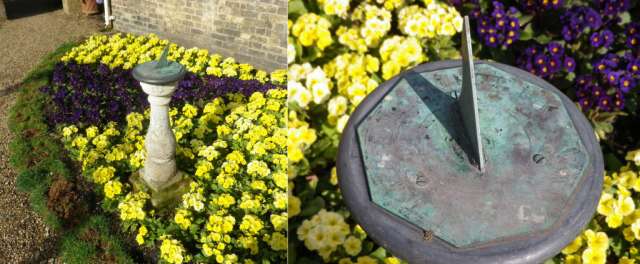 The garden at the wonderful Wisbech
property,
'Peckover House' is especially lovely at this time of year. Not only
that but there is a sundial just outside the greenhouse which greatly
enhances that part of the garden. Odd therefore that when these
images were taken - it was at 09:21 GMT in March - the dial was showing
just over 10:30! The garden at the wonderful Wisbech
property,
'Peckover House' is especially lovely at this time of year. Not only
that but there is a sundial just outside the greenhouse which greatly
enhances that part of the garden. Odd therefore that when these
images were taken - it was at 09:21 GMT in March - the dial was showing
just over 10:30!
Surely the NT has not succumbed to AP Herbert's rather
unfairly named 'Housewifes' Trick' whereby a sundial is turned so as to
indicate summer time? Given its age and the extent of corrosion
present it's hard to read this dial exactly and thereby to work out just
how much the dial has been turned but, despite every diallist's 'horror'
at such a practice, it has to be said that
in summer, in
the middle part of the day and at the latitude of the UK
it is not quite so inaccurate as one might think. At least it might help
to prevent the frequent comment made by members of the public when
checking a sundial with a watch, of 'It's wrong'. So maybe the
misjudged housewife has done us a service after all?
02.04.17 |
A Courtesy for Meridian Line users provided free by Spot On Sundials!
The original brass Spot-On
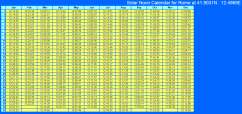 Sundial
was designed by Piers Nicholson and introduced to the market in 2001. Since
then, more than 900 customers all over the world have bought them as presents
for big occasions or simply for their own pleasure. To help enable the set up of
any dial Piers also produced a very handy web based Time of Noon calculator
Here.
It's also useful as a free resource when
predicting when the image of the sun will pass any meridian line in the world!
The table produced
Here
shows the local clock times (CET) for solar Noon every day of the year for the
meridian line in the Basilica S. Maria degli
Angeli e dei Martiri in Rome which is at 41.9031N, 12.4969E. Just add one
hour when your sighting is during summer when CEST applies. Neat. Sundial
was designed by Piers Nicholson and introduced to the market in 2001. Since
then, more than 900 customers all over the world have bought them as presents
for big occasions or simply for their own pleasure. To help enable the set up of
any dial Piers also produced a very handy web based Time of Noon calculator
Here.
It's also useful as a free resource when
predicting when the image of the sun will pass any meridian line in the world!
The table produced
Here
shows the local clock times (CET) for solar Noon every day of the year for the
meridian line in the Basilica S. Maria degli
Angeli e dei Martiri in Rome which is at 41.9031N, 12.4969E. Just add one
hour when your sighting is during summer when CEST applies. Neat.
11.10.17 [Published with permission P Nicholson] |
A chance to read about Seasonal Markers
for Analemmatic
 Sundials.
In 2006
Roger
Bailey published his article on Seasonal Markers for Analemmatic Sundials.
Written to answer questions such as “Can a sundial be used to follow the sun
through the seasons?” or Sundials.
In 2006
Roger
Bailey published his article on Seasonal Markers for Analemmatic Sundials.
Written to answer questions such as “Can a sundial be used to follow the sun
through the seasons?” or
"Is there a point in an analemmatic sundial that can be used with the
Zodiac date line to show where the sun rises?”. The answer is of course
Yes!
Read Roger's account in this link to his own website
24.07.18 [EU C-466/12] |
A Tale of Two Dials
Our picture here shows the very famous dial at Queens' College
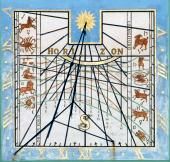 Cambridge,
but there was once a very similar look-alike in Copenhagen; so
similar that a natural question arises as to whether one
influenced the other, or whether they are both descended from some
common ancestor. Cambridge,
but there was once a very similar look-alike in Copenhagen; so
similar that a natural question arises as to whether one
influenced the other, or whether they are both descended from some
common ancestor.
It is not known who designed the look-alike
dial design but it is currently attributed to Christen Sørensen
Longomontanus (1562–1647), a pupil of Tycho Brahe, who became
professor of mathematics in the University of Copenhagen in 1607.
Click the image here to read more about the Old Court Dial in
Cambridge
and then turn to read about the Copenhagen look-alike!
To read Charles Aked's 1994 BSS article
about this dial click
HERE.
30.10.20, 08.04.2023 |
Was it really all
down to Railway Time?
It is often said that the need for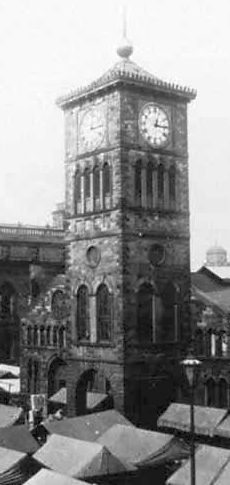 Railway Time was the reason that GMT was adopted throughout the
UK. That is of course partially true but there were several other
factors involved, not least the pub landlords of London and the
mill owners of Lancashire.
Railway Time was the reason that GMT was adopted throughout the
UK. That is of course partially true but there were several other
factors involved, not least the pub landlords of London and the
mill owners of Lancashire.
Courtesy of the book ‘About Time’ by David Rooney we can really see how the use of
GMT arose and developed.
Click
HERE to read a short summary about this.
Click on the image to see more of the picture of Blackburn's
former Market Hall and its Time Ball. Now sadly lost.
07.07.21, 16.04.2024 |
|
A Mosaic sundial found in Antioch by Dr Sophie Hay
A recently found
 mosaic
is formed from part of a three part design on the floor of a
dining room of a 3rd-4th century AD villa in Antioch, modern
Antakya, Turkey. The mosaic also features a reclining skeleton
encouraging its viewers to enjoy life. Looking up at the sundial
that reads 8pm, and in his haste to ‘run to dinner’ as the Greek
inscription describes, the detail of the man losing his sandal is
just glorious. He’s interpreted as an uninvited guest & the man
behind seems to respond by saying ‘ill-timed!’. A larger image may
be seen HERE
and Dr Hay's original Tweet that announced the find can be found
HERE. Wonderful! mosaic
is formed from part of a three part design on the floor of a
dining room of a 3rd-4th century AD villa in Antioch, modern
Antakya, Turkey. The mosaic also features a reclining skeleton
encouraging its viewers to enjoy life. Looking up at the sundial
that reads 8pm, and in his haste to ‘run to dinner’ as the Greek
inscription describes, the detail of the man losing his sandal is
just glorious. He’s interpreted as an uninvited guest & the man
behind seems to respond by saying ‘ill-timed!’. A larger image may
be seen HERE
and Dr Hay's original Tweet that announced the find can be found
HERE. Wonderful!
25.01.2023 |
The Van Vleck Observatory Dial, Connecticut USA. In 2018 a large bronze
 Direct
South vertical sundial was installed some 96 years after the
installation of the Clark telescope at this observatory and 18
months after the dial design had commenced. Installation on the
outside of the dome wall was supervised by the local delineator
and creator, Robert Adzema. The hour lines are corrected for the
longitude 72° 39.5585' W such that mean Noon occurs 9m 22s after
local mean Noon. The dial weighs 650 pounds (0.29 metric tonne). Direct
South vertical sundial was installed some 96 years after the
installation of the Clark telescope at this observatory and 18
months after the dial design had commenced. Installation on the
outside of the dome wall was supervised by the local delineator
and creator, Robert Adzema. The hour lines are corrected for the
longitude 72° 39.5585' W such that mean Noon occurs 9m 22s after
local mean Noon. The dial weighs 650 pounds (0.29 metric tonne).
It seems that the hardest problem related to getting the
patina right! Read more
HERE or by clicking on the image.
03.01.2023 |
|
|
King Edward's Popular Sundial
King Edward's Sundial is at Sandringham House, currently a
private
residence of King Charles III. It was purchased by Queen Victoria for
her son
 who later became King Edward VII. It was long a favourite
of the late Queen Elizabeth II. As purchased, the house
subsequently proved to be rather too small and additions were made
which were completed in 1892. A part of those extensions included
an East declining sundial mounted high on the end of the House
which even today is readily visible from the other side of the
Lake. Queen Alexandra personally chose the main motto for the
sundial. It reads: who later became King Edward VII. It was long a favourite
of the late Queen Elizabeth II. As purchased, the house
subsequently proved to be rather too small and additions were made
which were completed in 1892. A part of those extensions included
an East declining sundial mounted high on the end of the House
which even today is readily visible from the other side of the
Lake. Queen Alexandra personally chose the main motto for the
sundial. It reads:
Let others tell of storms and showers,
I’ll only count your sunny hours.
As a result of it being
her particular choice this motto became hugely popular not just in
the UK but also elsewhere in the world too. A second motto sits at
the top of the dial: ‘My time is in thy hand’ (this is a minor
modification of text taken from Psalm 31:15).
The dial was
designed and installed by F Barker and Son using gold lettering on
a slate coloured stone ground. An Equation of Time table is
provided, in recess, at eye level below the dial. The dial
shows 6am to 5pm in half and quarter hours. Inward lozenge-ended
half hour markers are included. The original Francis Barker had
died of tuberculosis in 1875, aged 56 years and his business had
by then passed to his sons. Click on the image or
HERE
to see
some expandable images of this excellent dial.
09.09.2022, 30.01.2025 |
 The 'Unrecorded' Analemma
The analemma is nowadays considered to be
The 'Unrecorded' Analemma
The analemma is nowadays considered to be
 the
'figure- of-eight' device employed in a mean-time sundial to
correct for the equation of time. But, in earlier times the term
was applied to a subsidiary instrument, in the form of a graphical
projection, which facilitated the construction of principal works
such as sundials. The instrument consists of a rotating celestial
planisphere graduated with right ascension and declination with a
list of the principal stars and an analemma charting the sun's
position throughout the year. the
'figure- of-eight' device employed in a mean-time sundial to
correct for the equation of time. But, in earlier times the term
was applied to a subsidiary instrument, in the form of a graphical
projection, which facilitated the construction of principal works
such as sundials. The instrument consists of a rotating celestial
planisphere graduated with right ascension and declination with a
list of the principal stars and an analemma charting the sun's
position throughout the year.
Christopher Daniel wrote that
Benjamin Donn (1729-1798) was a British cartographer, surveyor and
mathematician. Born in Bideford, he was the heir to a long line of
well-respected mathematicians, including his father and older
brother, who ran a local school.
A lifetime of study and
dedication to mathematics earned Donn the title of Master of
Mechanics to the King, an honorarium he would hold for only a
short time. Donn died in 1798.
Click on the thumbnail or
HERE
for more about this rare and fascinating item.
26.01.2025.27.08.2022
With publishing permission: C StJH Daniel MBE |
Newton's Sundial
Courtesy of Ian Maddocks and the Objectivity
 YouTube
channel and repeated here by request, we are able to see a short video clip which, after half way, shows one
of the stone dials scratched by Isaac Newton into the walls of his home. YouTube
channel and repeated here by request, we are able to see a short video clip which, after half way, shows one
of the stone dials scratched by Isaac Newton into the walls of his home.
Click on the image for a larger picture,
Here to
see the video .
27.04.16, 21.01.2025 |
 The Kimbolton Dial.
Now this is an interesting dial. It is finely painted
The Kimbolton Dial.
Now this is an interesting dial. It is finely painted
 with
black markings and uses a black gnomon with a supporter and rain
disposer of a sigmoidal shape. The dial is mounted between the
first floor windows of the house and it declines approximately
44/45 degrees West of South. It has the appearance of being too
large for the space in which it sits and possibly might be a later
addition to this timber framed building. with
black markings and uses a black gnomon with a supporter and rain
disposer of a sigmoidal shape. The dial is mounted between the
first floor windows of the house and it declines approximately
44/45 degrees West of South. It has the appearance of being too
large for the space in which it sits and possibly might be a later
addition to this timber framed building.
Click on
the thumbnail image or
HERE to see a larger version.
13.01.2025 |
 The Dial at Carel Cross
in the Carlisle Market Square which in turn, is of course
The Dial at Carel Cross
in the Carlisle Market Square which in turn, is of course
 now
thankfully back in Cumberland. The wonderful four face cube dial
was erected there in 1682. Itself a replacement, it sits on top of
a tall column. The dial block is located on a capital and is
surmounted by an effigy of a lion and four pointed finials. There
is also a substantial plinth - itself on a four tiered circular
base. It is recorded in the National Register as SRN 0391. now
thankfully back in Cumberland. The wonderful four face cube dial
was erected there in 1682. Itself a replacement, it sits on top of
a tall column. The dial block is located on a capital and is
surmounted by an effigy of a lion and four pointed finials. There
is also a substantial plinth - itself on a four tiered circular
base. It is recorded in the National Register as SRN 0391.
A
lovely dial which is well worth seeing 'in the flesh' as it were.
Mouse click on the image or
here to see a closer view. Of course
Carlisle (close to the UK's Lake District) is always this sunny!
08.01.2025 |
 St Cuthbert’s Church Dial, Darlington.
Located on St. Cuthbert's Church, in
St Cuthbert’s Church Dial, Darlington.
Located on St. Cuthbert's Church, in
 the
current Market Place of Darlington, the dial is located on the
South wall but at its West End. A slightly canted wooden dial set
to face due South and dated 1774, Apparently it was restored
around 1997. the
current Market Place of Darlington, the dial is located on the
South wall but at its West End. A slightly canted wooden dial set
to face due South and dated 1774, Apparently it was restored
around 1997.
Its motto (taken from Martial) reads: "Sit
sine lite dies" - Let me have a day without strife. The hour
lines were originally set in gold, now looking a bit faded. Blue
edging with a white centre. An ornamental gnomon and supporting
scroll. Canted a little to face due South. Click on the
thumbnail image here to see a larger version.
17.12.2024 |
 The
High Street Dial of Bexhill on Sea.
A modern dial, maker indicated
The
High Street Dial of Bexhill on Sea.
A modern dial, maker indicated
 only
by initials. The dial plate is set back and recessed into an
aperture in the front wall of the house above and centred on, the
front door. Simple thin dialplate, with engraved lettering. The
gnomon is constructed from a metal sheet. Displaying time in BST.
The hour lines originate from a small semicircle centred upon the
gnomon root, with only hours marked - no lesser divisions. Motto
reads ’Tempus Fugit’, and in a very small typeface across the
bottom are ’Summer Time’ and FE 1988 - possibly the maker's
initials and the date. Now rather in need of a repaint.
Click on the thumbnail image here for a larger image. only
by initials. The dial plate is set back and recessed into an
aperture in the front wall of the house above and centred on, the
front door. Simple thin dialplate, with engraved lettering. The
gnomon is constructed from a metal sheet. Displaying time in BST.
The hour lines originate from a small semicircle centred upon the
gnomon root, with only hours marked - no lesser divisions. Motto
reads ’Tempus Fugit’, and in a very small typeface across the
bottom are ’Summer Time’ and FE 1988 - possibly the maker's
initials and the date. Now rather in need of a repaint.
Click on the thumbnail image here for a larger image.
06.12.2024 |
 The Dial at St Bartholomew’s Church, Blurton in Staffordshire.
The Dial at St Bartholomew’s Church, Blurton in Staffordshire.
 Formed
from a thick square stone block, painted or possibly even maybe
stained blue, mounted on the wall to the right of the South porch.
It is slightly cracked. Dated 1663 it uses Arabic numerals for 6am
to 6pm, with hour lines to a semicircle around the gnomon root,
but with no smaller subdivisions. The gnomon is a narrow rod
supported by a rain expelling supporter. Formed
from a thick square stone block, painted or possibly even maybe
stained blue, mounted on the wall to the right of the South porch.
It is slightly cracked. Dated 1663 it uses Arabic numerals for 6am
to 6pm, with hour lines to a semicircle around the gnomon root,
but with no smaller subdivisions. The gnomon is a narrow rod
supported by a rain expelling supporter.
02.12.2024 |
 The Three Dials of the Old Port Bar,
Burntisland
The Three Dials of the Old Port Bar,
Burntisland
 Three Sundials
are set above the curved corner entrance to The Old Port Bar in
Burntisland, Fife, each set around the corner and above the ground
floor windows. One dial declines approx North 20 West showing 3am
to 8am in half and quarter hours. Motto: I ONLY COUNT THE SUNNY
HOURS’. Another declines South 20 East showing 5am to 4pm and the
third declines approx North 70 East and shows 6am to 12 noon. Three Sundials
are set above the curved corner entrance to The Old Port Bar in
Burntisland, Fife, each set around the corner and above the ground
floor windows. One dial declines approx North 20 West showing 3am
to 8am in half and quarter hours. Motto: I ONLY COUNT THE SUNNY
HOURS’. Another declines South 20 East showing 5am to 4pm and the
third declines approx North 70 East and shows 6am to 12 noon.
Burntisland is a
former Royal burgh and parish set in Fife, Scotland, on the
northern shore of the Firth of Forth opposite Edinburgh. It was
previously known as Wester Kinghorn or Little Kinghorn. The town
had an approximate population of 6,269 in 2011. Burntisland is
known locally for its sandy beach, the 15th-century Rossend
Castle, as well as the town's summer fair and its Highland games
day. Click on the thumbnail here to see a larger image of
the three dials in situ.
22.11.2024 |
 The Dial of St
Gregory's Church in Weare
The Church of St Gregory in Weare,
Somerset,
The Dial of St
Gregory's Church in Weare
The Church of St Gregory in Weare,
Somerset,
 England
dates from the 11th century, although most of the building is from
the 15th century, It is a UK grade I listed building. The tower
was built around 1407. It is in four stages with pinnacles and a
pierced parapet. In the churchyard is a 15th-century cross, and a
19th-century church room. England
dates from the 11th century, although most of the building is from
the 15th century, It is a UK grade I listed building. The tower
was built around 1407. It is in four stages with pinnacles and a
pierced parapet. In the churchyard is a 15th-century cross, and a
19th-century church room.
In 1257 the church was granted to
St Augustine's Abbey in Bristol, and after the Dissolution of the
Monasteries it was given to its successor institution, the Dean
and Chapter of Bristol Cathedral. The font is even older than the
building dating from about 1150, while the pulpit is believed to
be Jacobean. The modern West declining vertical Millenium
sundial is excellent. Well worth admiring. Click on
the thumbnail image here to see a close up of this dial.
13.11.2024 |
 The Quay Sundial, Ipswich
There is a dial on the quay at Ipswich, constructed in
The Quay Sundial, Ipswich
There is a dial on the quay at Ipswich, constructed in
 2005
in stainless steel and in the form of the toothed wheel logo of
the Rotary Club. It has a similar sector-pattern in the gnomon. It
is marked in BST from 6am to 8pm, in half hour and smaller
divisions. There is a 32-point compass rose at the centre and a 15
degree scale around the perimeter, each marked with a tooth of the
wheel. The dial is inscribed : 'Service Above Self' Presented
to the People of Ipswich by the four Rotary Clubs Celebrating 100
years of Rotary 1905 - 2005'. The dial is mounted on an
octagonal 6-brick plinth with a tiled top. A nearby plaque
displays local EoT. Use the mouse to click on this thumbnail to
see a close up view of the dial proper. 2005
in stainless steel and in the form of the toothed wheel logo of
the Rotary Club. It has a similar sector-pattern in the gnomon. It
is marked in BST from 6am to 8pm, in half hour and smaller
divisions. There is a 32-point compass rose at the centre and a 15
degree scale around the perimeter, each marked with a tooth of the
wheel. The dial is inscribed : 'Service Above Self' Presented
to the People of Ipswich by the four Rotary Clubs Celebrating 100
years of Rotary 1905 - 2005'. The dial is mounted on an
octagonal 6-brick plinth with a tiled top. A nearby plaque
displays local EoT. Use the mouse to click on this thumbnail to
see a close up view of the dial proper.
04.11.2024 |
 The 'New' Dial at All Saints’
Church, Stamford The
dial here now is a
The 'New' Dial at All Saints’
Church, Stamford The
dial here now is a
 replacement
for what was SRN 3723. It is mounted on the South aisle
battlements. It was erected to mark an anniversary of the
late Queen's accession. ’MM EIIR XII’. it includes six less-usual
date lines. The winter and summer solstices; the equinoxes,
the Accession date of H M the Queen (in gold); the foundation of
Stamford's Civic Society and St George’s Day. There is an EOT
graph lower down. At the right time of year, inside the church
there may be a live web cam feed of the perigrine falcons in their
nest on the roof. They have chosen to nest here since 2021. The
church is mentioned in the Domesday Book of 1086. Click on
the thumbnail to see a close up of what is an excellent updated
dial. replacement
for what was SRN 3723. It is mounted on the South aisle
battlements. It was erected to mark an anniversary of the
late Queen's accession. ’MM EIIR XII’. it includes six less-usual
date lines. The winter and summer solstices; the equinoxes,
the Accession date of H M the Queen (in gold); the foundation of
Stamford's Civic Society and St George’s Day. There is an EOT
graph lower down. At the right time of year, inside the church
there may be a live web cam feed of the perigrine falcons in their
nest on the roof. They have chosen to nest here since 2021. The
church is mentioned in the Domesday Book of 1086. Click on
the thumbnail to see a close up of what is an excellent updated
dial.
28.10.2024 |
 The Mizen Head Lighthouse
Sundial, Cloghan Island,
Co Cork
The Mizen Head Lighthouse
Sundial, Cloghan Island,
Co Cork
 Ireland.
The sundial is dated to 1906 and is located on a pillar outside
the lighthouse proper at Mizen Head, Ireland’s most south-westerly
point. Originally used to correct the lighthouse clocks, in fewer
than 20 years the salty sea air has already caused such erosion
that few hour lines are now visible. Only the Roman numeral hour
markers are to be easily seen today. It has a substantial brass
gnomon however. It is included in the National Register as SRN 8289.
Click on the thumbnail image for a larger version. Ireland.
The sundial is dated to 1906 and is located on a pillar outside
the lighthouse proper at Mizen Head, Ireland’s most south-westerly
point. Originally used to correct the lighthouse clocks, in fewer
than 20 years the salty sea air has already caused such erosion
that few hour lines are now visible. Only the Roman numeral hour
markers are to be easily seen today. It has a substantial brass
gnomon however. It is included in the National Register as SRN 8289.
Click on the thumbnail image for a larger version.
26.10.2024 Data courtesy Michael Harley |
 A new garden centre dial that is correct!
It is nice to be able to report the
A new garden centre dial that is correct!
It is nice to be able to report the
 discovery of a modern, even a
garden-centre dial, that has been designed more or less correctly.
This dial discovered in Essex but with maker unknown can at least
be installed and be expected to show solar time. discovery of a modern, even a
garden-centre dial, that has been designed more or less correctly.
This dial discovered in Essex but with maker unknown can at least
be installed and be expected to show solar time.
Of course
the purist might want more - they usually do! - but one must give
thanks that some dials are now being made that are not just a
garden ornament. Sadly in this case the maker is unknown.
An email to the webmaster please, should a reader of this column
know.
19.10.2024 AR Powers |
 The Dial of St Botolphs
Cambridge. The church,
dedicated to Botolph, is
The Dial of St Botolphs
Cambridge. The church,
dedicated to Botolph, is
 located
close to Corpus Christi College, in Cambridge. located
close to Corpus Christi College, in Cambridge.
The present
building
mostly dates from the fourteenth century and is built of flint and
rubble with Barnack stone dressing. The octagonal font of 1637 has
a wonderful wooden cover.
The tower was
built in the fifteenth century. It is surmounted by stone figures
representing the four evangelists and the sundial pair lies on the
south-west buttress. The four bells were cast in 1460 and are
still in use. Click on the thumbnail to see a larger image.
09.09.2024 |
 The Hidden Dial of Wakehurst
Wakehurst Place is a wild botanic garden,
The Hidden Dial of Wakehurst
Wakehurst Place is a wild botanic garden,
 managed
by Kew and home to the UK's Millennium Seed Bank. Wakehurst is
listed Grade I on the National Heritage List for England, and its
gardens are listed Grade II* on the Register of Historic Parks and
Gardens. The mansion was built by Sir Edward Culpeper in 1590. In
1887, American architect Dudley Newton completed a replica of
Wakehurst in Newport, Rhode Island, for sportsman and politician
James J. Van Alen from plans designed by Charles Eamer Kempe.
Salve Regina University purchased the mansion from the Van Alen
family in 1972. Among the original's 490 acres are two sundials,
one of which is currently nearly completely hidden by foliage. The
keen observer is not deceived however and this splendid dial with
the motto 'Night Cometh' can be seen in all its glory. Click on
the thumbnail for a larger image. managed
by Kew and home to the UK's Millennium Seed Bank. Wakehurst is
listed Grade I on the National Heritage List for England, and its
gardens are listed Grade II* on the Register of Historic Parks and
Gardens. The mansion was built by Sir Edward Culpeper in 1590. In
1887, American architect Dudley Newton completed a replica of
Wakehurst in Newport, Rhode Island, for sportsman and politician
James J. Van Alen from plans designed by Charles Eamer Kempe.
Salve Regina University purchased the mansion from the Van Alen
family in 1972. Among the original's 490 acres are two sundials,
one of which is currently nearly completely hidden by foliage. The
keen observer is not deceived however and this splendid dial with
the motto 'Night Cometh' can be seen in all its glory. Click on
the thumbnail for a larger image.
29.08.2024 Image: VL Thomson |
 The Dial House Dial The Dial
House Hotel in Bourton-on-the-Water is a five star
The Dial House Dial The Dial
House Hotel in Bourton-on-the-Water is a five star
 hotel
and
restaurant in the Cotswolds, situated off the High Street. Mounted
on the top of the entrance porch is a three face West declining
cube dial with elaborately pierced gnomons and a ball finial above
the dial stone. Hour lines with 15min intervals were once visible.
There are three scroll-patterned gnomons. Date is that of original
house, 1698. It is positioned with the outlooking face being
substantially West declining. Sadly no markings or other furniture
can now be easily seen. hotel
and
restaurant in the Cotswolds, situated off the High Street. Mounted
on the top of the entrance porch is a three face West declining
cube dial with elaborately pierced gnomons and a ball finial above
the dial stone. Hour lines with 15min intervals were once visible.
There are three scroll-patterned gnomons. Date is that of original
house, 1698. It is positioned with the outlooking face being
substantially West declining. Sadly no markings or other furniture
can now be easily seen.
The dial faces are approximately 12
ins square, set up parallel to the front of the hotel off which is
the High Street.
|
 The Topiary Dial at Ascott
In the wonderful garden of this National
Trust property
is a VERY rare Topiary horizontal dial with an ‘egg in cup’ gnomon
made from golden
The Topiary Dial at Ascott
In the wonderful garden of this National
Trust property
is a VERY rare Topiary horizontal dial with an ‘egg in cup’ gnomon
made from golden
 yew grafted on to Irish yew, both shaped by
topiary work. The Roman numerals are clipped into dwarf box but
are arranged at near regular intervals like a clock face so that
as a dial it is not really correctly delineated. The motto ‘Light
and shade by turns but love always’ appears in a semi-circular
arrangement at the South of the dial. It is a commemoration of the
marriage of an earlier member of the Rothschild family. It is in
urgent need of bringing back to a working sundial. Perhaps we
might hope that BSS might make contact and try to advise? The
gardeners here are wonderfully able to maintain what there is but
the egg in cup gnomon has no resemblance to a gnomon for an
horizontal dial. As a consequence things appear to have been left
uncorrected. Perhaps a thin metal frame could be inserted to show
the gardeners the real line of a gnomon for a dial at this
latitude and their trimming could slowly bring the shape back
again? Likewise, maybe there could be inserted a similar metal
guide by which to train the numerals over time? Click on the
thumbnail for another image of this lovely, rare sundial. yew grafted on to Irish yew, both shaped by
topiary work. The Roman numerals are clipped into dwarf box but
are arranged at near regular intervals like a clock face so that
as a dial it is not really correctly delineated. The motto ‘Light
and shade by turns but love always’ appears in a semi-circular
arrangement at the South of the dial. It is a commemoration of the
marriage of an earlier member of the Rothschild family. It is in
urgent need of bringing back to a working sundial. Perhaps we
might hope that BSS might make contact and try to advise? The
gardeners here are wonderfully able to maintain what there is but
the egg in cup gnomon has no resemblance to a gnomon for an
horizontal dial. As a consequence things appear to have been left
uncorrected. Perhaps a thin metal frame could be inserted to show
the gardeners the real line of a gnomon for a dial at this
latitude and their trimming could slowly bring the shape back
again? Likewise, maybe there could be inserted a similar metal
guide by which to train the numerals over time? Click on the
thumbnail for another image of this lovely, rare sundial.
12.08.2024 |
 The Chatteris Sundial
Bede’s History of the English
Church tells how Etheldreda,
The Chatteris Sundial
Bede’s History of the English
Church tells how Etheldreda,
 daughter
of the King of East Angles, married Tonbert, ‘a prince of the
south Gyrwes’. As part of their marriage settlement in 652,
Tondbert gave his wife an estate, known today as Ely. daughter
of the King of East Angles, married Tonbert, ‘a prince of the
south Gyrwes’. As part of their marriage settlement in 652,
Tondbert gave his wife an estate, known today as Ely.
Chatteris Abbey, built in 980, was dedicated to St Mary; its
foundation was part of the revival of monasticism under the
Benedictine rule which had been initiated by Dunstan. Religious
communities like the one in Chatteris, did not encourage solitary
habits but various communal services ordered the day with rhythms
of prayer, learning, work and rest. These new spiritual
communities were also responsible for the first efficient farming
of the fens.
The first Abbess of Chatteris was the lady
Ælfwen; ‘a devout woman who founded a nunnery on a copped ground
encompassed with fens.’
The dial to be seen today is on the
southern side of the church tower.
It shows the time, in
quarter hours, from 6am to 5pm with upright Roman numerals. Noon
is – XII – and 4pm is – IIII. The rod gnomon has two straight
supporters. Click the thumbnail image for a larger version.
19.07.2024 |
 The Bristle Hill Dial
Dial House on Bristle Hill in Buckingham has an unusual
modern sundial on
The Bristle Hill Dial
Dial House on Bristle Hill in Buckingham has an unusual
modern sundial on
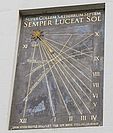 the
front of an old house in Buckingham. This sundial Shows the line
of the Summer and Winter solstice lines and the Equinox with a
quaint wording along the bottom the
front of an old house in Buckingham. This sundial Shows the line
of the Summer and Winter solstice lines and the Equinox with a
quaint wording along the bottom
Inscriptions:
Along the top:
SUPER COLLEM SAETIGERUM SEPTEM
SEMPER LUCEAT SOL
And at
the bottom
UPON SEVEN BRISTLE HILL/LET THE SUN SHINE STILL.
An excellent dial by David Harber. Click on the thumbnail here for
a larger version of this image.
03.07.2024 |
 The Westonbirt Dial
Westonbirt is a 19th-century landscape park in the
The Westonbirt Dial
Westonbirt is a 19th-century landscape park in the
 Southern
Cotswolds on the county boundary with Wiltshire. It includes
exceptional tree planting and there is also an amazing arboretum.
At its most extensive it covered more than 540 acres (excluding
Westonbirt Arboretum). There are also extensive 19th-century
formal terrace gardens and an ornamental woodland of 25 acres. The
house is now a Girls' School, but is also available for hire for
weddings and corporate events. The school gardens are open during
some holiday periods. There, protected near the main house, lies
the Westonbirt sundial. Dated 1863-70, designed by Lewis
Vulliamy, it is a gadrooned bronze sundial supported by putti and
dolphin, It is enriched by carving to the stone plinth and
articulated by corner brackets with claw feet. Surrounded by
patterned raised stone borders. Click the thumbnail or
here
for an image of the dial in situ. Click
here
for a close up Southern
Cotswolds on the county boundary with Wiltshire. It includes
exceptional tree planting and there is also an amazing arboretum.
At its most extensive it covered more than 540 acres (excluding
Westonbirt Arboretum). There are also extensive 19th-century
formal terrace gardens and an ornamental woodland of 25 acres. The
house is now a Girls' School, but is also available for hire for
weddings and corporate events. The school gardens are open during
some holiday periods. There, protected near the main house, lies
the Westonbirt sundial. Dated 1863-70, designed by Lewis
Vulliamy, it is a gadrooned bronze sundial supported by putti and
dolphin, It is enriched by carving to the stone plinth and
articulated by corner brackets with claw feet. Surrounded by
patterned raised stone borders. Click the thumbnail or
here
for an image of the dial in situ. Click
here
for a close up
24.06.2024 |
Christopher StJ H Daniel MBE
We have now passed the second anniversary of the sad death of
Christopher Daniel and it is right to remmber such an excellent
Chairman and President of BSS who is still very much missed by all
who knew him. This
is how we reported it at the time:
SunInfo was sad in mid May 2022 to have
to
 report the death of the
second BSS
President Christopher Daniel MBE. Christopher took over as
Chairman of the Society upon the untimely death of its first
Chairman, Dr Andrew Somerville and later, on his retirement from
that post, Christopher was appointed the President of the Society.
Arguably Christopher was the most prolific designer
ever of
sundials in the UK and certainly he is the UK diallist with the
most publications to his name. His funeral took place
at 2pm on Friday 17th June 2022 Read our obituary to a
most
remarkable man, Master Mariner and Sundiallist. He is
certainly much missed. report the death of the
second BSS
President Christopher Daniel MBE. Christopher took over as
Chairman of the Society upon the untimely death of its first
Chairman, Dr Andrew Somerville and later, on his retirement from
that post, Christopher was appointed the President of the Society.
Arguably Christopher was the most prolific designer
ever of
sundials in the UK and certainly he is the UK diallist with the
most publications to his name. His funeral took place
at 2pm on Friday 17th June 2022 Read our obituary to a
most
remarkable man, Master Mariner and Sundiallist. He is
certainly much missed.
Click the thumbnail image or
HERE to read Christopher's
Obituary. Click
HERE to read his own interesting summary of his life and
times.
07.04.2024, 21.05.2022
Image © Copyright CStJH Daniel MBE |
 The Carel Cross Sundial.
Carlisle's right to hold an Annual Fair in
The Carel Cross Sundial.
Carlisle's right to hold an Annual Fair in
 August
each year was originally granted by King Edward III in 1352. August
each year was originally granted by King Edward III in 1352.
Carel Cross in the centre of Carlisle includes a wonderful
four face dial on top of a tall column - all dated to 1682. The
dial block is set on a capital which is surmounted by a lion and
four pointed finials, the whole standing on a plinth on a four
tiered circular base. It was erected on the site of an earlier
cross - date uncertain. Each modern dial face is roughly 15 ins
square. Recently renovated, its current appearance is wonderful.
Click on the thumbnail image or
HERE to see a closer view.
11.06.2024 |
 The Dial at Howick Hall,
Craster. This dial was
found under laurel bushes and then set up (wrongly) on the croquet
lawn. Howick Hall, a Grade II*
The Dial at Howick Hall,
Craster. This dial was
found under laurel bushes and then set up (wrongly) on the croquet
lawn. Howick Hall, a Grade II*
 listed
building in the village of Howick, Northumberland, England, is the
ancestral seat of the Earls Grey. It was the home of the Prime
Minister Charles, 2nd Earl Grey (1764–1845), after whom Earl Grey
tea is named. Howick Hall is the location of the Howick Hall
Gardens & Arboretum. listed
building in the village of Howick, Northumberland, England, is the
ancestral seat of the Earls Grey. It was the home of the Prime
Minister Charles, 2nd Earl Grey (1764–1845), after whom Earl Grey
tea is named. Howick Hall is the location of the Howick Hall
Gardens & Arboretum.
Howick has been owned by the Grey
family since 1319. A tower house, which once stood on the site and
was demolished in 1780, was described in a survey of 1715 as "a
most magnificent freestone edifice in a square figure, flat roofed
and embattled" and with "a handsome court and gateway on the
front".
The Hall which stands on the site today was built
in 1782 by Newcastle architect, William Newton. The entrance was
originally on the south side. The 2nd Earl Grey employed George
Wyatt in 1809 to enlarge the house by moving the entrance to the
north side, filling out the front hall and the two quadrants
linking the house to its wings, and building the first terrace on
the south side.
The Dial takes the form of a 24-facet block
about 18″ across; dials on all surfaces, but no hollows except for
a circular recess on the south side above a normal dial. All
gnomons missing; finial missing, probably a ball; some faces
labelled with compass direction eg S, E, NE etc. Images may be
seen by clicking
HERE,
HERE and
HERE.
04.06.2024 |
 St Mary's Penzance
A church has stood on this headland since the 12th Century, but
the present building dates from 1835. The tower even acts as a
Waymark for the
St Mary's Penzance
A church has stood on this headland since the 12th Century, but
the present building dates from 1835. The tower even acts as a
Waymark for the
 sea
faring community. The dial which is roughly 4ft high by 2ft
6ins wide was made for a Chapel that originally stood nearby in
Chapel Street, where it declined 12degrees West. It is canted in its new
position to correct for the different declination of the buttress
of St Mary’s where it is now to be found. In the arch are two
mottoes: “Solem quis dicere falsum audeat” (Who would dare to call
the sun false. Virgil) and “Tempus edax rerum” (Time the consumer
of all things. Ovid). Below them is Father Time.. The church,
which was consecrated in 1836 and is one of West Cornwall's most
prominent landmarks, was infamously devastated by an arsonist in
April 1985, destroying some of the entrance to the church.
Thankfully the interior of this Grade II-listed building was
largely saved. An impressive dial wonderfully saved from a serious fate. Click
on the thumbnail image to see a larger version. A nice dial. sea
faring community. The dial which is roughly 4ft high by 2ft
6ins wide was made for a Chapel that originally stood nearby in
Chapel Street, where it declined 12degrees West. It is canted in its new
position to correct for the different declination of the buttress
of St Mary’s where it is now to be found. In the arch are two
mottoes: “Solem quis dicere falsum audeat” (Who would dare to call
the sun false. Virgil) and “Tempus edax rerum” (Time the consumer
of all things. Ovid). Below them is Father Time.. The church,
which was consecrated in 1836 and is one of West Cornwall's most
prominent landmarks, was infamously devastated by an arsonist in
April 1985, destroying some of the entrance to the church.
Thankfully the interior of this Grade II-listed building was
largely saved. An impressive dial wonderfully saved from a serious fate. Click
on the thumbnail image to see a larger version. A nice dial.
25.05.2024 |
 From Target to Timekeeper
The dial on the church in Minster, Isle
of Sheppey had been used for air gun practice for many years by
the local yobs. It duly
From Target to Timekeeper
The dial on the church in Minster, Isle
of Sheppey had been used for air gun practice for many years by
the local yobs. It duly
 became
unstable and unsafe as well as being nearly unreadable so it was
replaced by the current excellent replica in 2014. A most welcome
restoration. The new dial, which, like its predecessor is
situated above the South porch door, consists of a sheet metal
plate in a black wooden frame which is canted substantially out
from the wall to face due South. It is apprximately 30 ins square.
with hour lines that are of a sun ray form. The motto reads ‘My
Times are in thy hand’. Indeed they are! See some before and
after images by clicking here:
Before became
unstable and unsafe as well as being nearly unreadable so it was
replaced by the current excellent replica in 2014. A most welcome
restoration. The new dial, which, like its predecessor is
situated above the South porch door, consists of a sheet metal
plate in a black wooden frame which is canted substantially out
from the wall to face due South. It is apprximately 30 ins square.
with hour lines that are of a sun ray form. The motto reads ‘My
Times are in thy hand’. Indeed they are! See some before and
after images by clicking here:
Before
19.05.2024 |
 The Fisheries Sundial of Hemel Hempstead
The dial is approximately 3ft x 2ft
The Fisheries Sundial of Hemel Hempstead
The dial is approximately 3ft x 2ft
 in
size and faces almost directly South - though declining slightly
East of South - suggesting that it was clearly designed for its
present position. It displays solar time from 7am to 5pm in half
and quarter hours with most of the quarter hours marked by rivets. in
size and faces almost directly South - though declining slightly
East of South - suggesting that it was clearly designed for its
present position. It displays solar time from 7am to 5pm in half
and quarter hours with most of the quarter hours marked by rivets.
A sun disc sits at the gnomon root and the motto Carpe Diem (Sieze
the Day) is arranged around it. Click on the thumbnail here
to see a larger image.
11.05.2024 |
 The Dinmore Declining Dial
Dinmore Manor House was developed from
1189 into
The Dinmore Declining Dial
Dinmore Manor House was developed from
1189 into
 a
large rural house in the village of Dinmore, a hilly part of
Herefordshire. a
large rural house in the village of Dinmore, a hilly part of
Herefordshire.
Largely rebuilt in the late 16th century but
altered around 1830 and 1928, the house is Grade II listed. In the
centre of the south facing bay is a well designed vertical
declining dial which dates from 1929 when a new wing was added to
the house. It declines East by some eight degrees.
Click on the thumbnail image here to see
an enlarged version.
04.05.2024 |
The Direct South Sundial at
Holy Trinity, Skipton
The wonderful dial (perhaps about 12
inches square) that now sits over the South porch of the Grade 1
listed
 church
is a replacement installed in 1875 and which uses the original
stone aperture. for its mounting. It has the motto “Memento
mori” which, in Latin, is a multi-meaning trope acting as a
reminder of the inevitability of death. A wonderful elaborately pierced bronze
triangular gnomon sits vertically on the noon line and indicates
6am to 6pm solar time in half and quarter hours by dots on inside
of the chapter ring. Click on the thumbnail image here to see a
larger version. Certainly a handsome replacement. church
is a replacement installed in 1875 and which uses the original
stone aperture. for its mounting. It has the motto “Memento
mori” which, in Latin, is a multi-meaning trope acting as a
reminder of the inevitability of death. A wonderful elaborately pierced bronze
triangular gnomon sits vertically on the noon line and indicates
6am to 6pm solar time in half and quarter hours by dots on inside
of the chapter ring. Click on the thumbnail image here to see a
larger version. Certainly a handsome replacement.
27.04.24 |
The Dial at Dromoland Castle, Co Clare
There is a sundial set in the walled
 garden
at Dromoland Castle Hotel in County Clare, Ireland. Dromoland
Castle is a magnificent Renaissance structure built in the 16th
Century. It was once the royal seat of the O'Brien clan, direct
descendants of High-King Brian Boru. In the
walled garden there is an excellent well made horizontal dial that
shows the time from 4am to 8pm in Roman numerals marking four as
IIII. There are two minute rings, the inner has 15 minute
divisions, the outer ring has 30, 15 and 5 minute divisions, with
the half hours marked by fleur-de-lys. It has a 'split noon' to
compensate for the wide pierced gnomon. Decorations on the plate
include the O'Brien knot, an Armorial Shield and the O'Brien
Gaelic war cry "Lamh Laidir an Uchtar" which translates as "The
Strong Hand Uppermost". There is an Equation of Time scale in the
form of four concentric rings "sun too fast sun too slow", "Jan
Feb" etc., days "10, 20 30 or 31" as appropriate and minute marks.
At the centre of the dial there is a large 8 point compass rose
"N" "NE" "E" etc. The maker is not currently recorded. Click on
the image here for a larger version. garden
at Dromoland Castle Hotel in County Clare, Ireland. Dromoland
Castle is a magnificent Renaissance structure built in the 16th
Century. It was once the royal seat of the O'Brien clan, direct
descendants of High-King Brian Boru. In the
walled garden there is an excellent well made horizontal dial that
shows the time from 4am to 8pm in Roman numerals marking four as
IIII. There are two minute rings, the inner has 15 minute
divisions, the outer ring has 30, 15 and 5 minute divisions, with
the half hours marked by fleur-de-lys. It has a 'split noon' to
compensate for the wide pierced gnomon. Decorations on the plate
include the O'Brien knot, an Armorial Shield and the O'Brien
Gaelic war cry "Lamh Laidir an Uchtar" which translates as "The
Strong Hand Uppermost". There is an Equation of Time scale in the
form of four concentric rings "sun too fast sun too slow", "Jan
Feb" etc., days "10, 20 30 or 31" as appropriate and minute marks.
At the centre of the dial there is a large 8 point compass rose
"N" "NE" "E" etc. The maker is not currently recorded. Click on
the image here for a larger version.
21.04.2024. Data and photo courtesy and
permission MJ Harley
Sundials Ireland |
The Ponte Vecchio Sun Dial
The Ponte Vecchio ("Old Bridge") is a mediæval stone
closed-spandrel
segmental arch bridge over the Arno, in Florence in Italy. It was the
 only
bridge in Florence spared from destruction during World War II and
it is noted for the shops built along it - once a common practice
in Italy and elsewhere. Butchers, tanners, and farmers initially
occupied the shops; the present tenants are now (of course)
jewellers, art dealers, and souvenir sellers. Ponte Vecchio has
been in place since at least the twelfth century, and for a long
time the Arno River was crossable only at this point. only
bridge in Florence spared from destruction during World War II and
it is noted for the shops built along it - once a common practice
in Italy and elsewhere. Butchers, tanners, and farmers initially
occupied the shops; the present tenants are now (of course)
jewellers, art dealers, and souvenir sellers. Ponte Vecchio has
been in place since at least the twelfth century, and for a long
time the Arno River was crossable only at this point.
The
bridge crosses the river at its narrowest point within the city,
and a series of bridges — of which this is the fifth version! —
have stood on or around this spot since Roman times.
On the
roof of a shop overlooking the little square at the centre of the
bridge stands an ancient sundial, supported by a small marble
pillar. The sundial, faces South, is constructed from white
marble in the form of a cup divided by thin columns indicating the
canonical hours. The gnomon projects its shadow onto the cup,
marking the hour. Next to it can be seen a stone plaque, nowadays
almost illegible, which says: “In the year thirty-three after the
year one hundred three hundred, the bridge collapsed due to floods
of water; twelve years later, as pleased the City, it was rebuilt
with this ornament”. Click on the thumbnail for a larger image.
12.04.2024 Photo courtesy
Internet Fabio Savian |
A Fine-Dial Find in the
Midlands It is unusual
to find a lovely old horizontal
dial with a lot of furniture. Here we have a large well engraved
dial, unusually
 complete
with an Equation of Time table
rather than the more usual Watch-Faster-lower ring. A closer
inspection shows that the numbers in this table do not agree with
those of today, so demonstrating that the dial was engraved
before
England adopted the Gregorian Calendar on September 2nd 1752.
Before that time EoT correction was unusual and certainly not as
'organised' as we have it today. For some time after that of
course we had many (especially those in Bristol for some reason)
feeling that the country had been cheated out of 11 days. The
change was far reaching and provided for Wednesday, September 2nd,
1752, to be followed by Thursday the 14th and for New Year’s Day
to move from March 25th to January 1st, as already was the case in
Scotland. The City of London flatly refused to pay taxes early, so
the financial year was altered to start on April 6th, as it still
irritatingly does. The changes affected festivals, Saint’s days
and birthdays, including that of Dr Johnson, as well as the dates
of payments of wages, rents and interest, contracts for delivery
of goods, military discharges and prison releases. It was all
carefully explained in the media of the day under the slogan ‘The
New Style the True Style’. Click the thumbnail image here for four
larger images of this quite excellent dial. complete
with an Equation of Time table
rather than the more usual Watch-Faster-lower ring. A closer
inspection shows that the numbers in this table do not agree with
those of today, so demonstrating that the dial was engraved
before
England adopted the Gregorian Calendar on September 2nd 1752.
Before that time EoT correction was unusual and certainly not as
'organised' as we have it today. For some time after that of
course we had many (especially those in Bristol for some reason)
feeling that the country had been cheated out of 11 days. The
change was far reaching and provided for Wednesday, September 2nd,
1752, to be followed by Thursday the 14th and for New Year’s Day
to move from March 25th to January 1st, as already was the case in
Scotland. The City of London flatly refused to pay taxes early, so
the financial year was altered to start on April 6th, as it still
irritatingly does. The changes affected festivals, Saint’s days
and birthdays, including that of Dr Johnson, as well as the dates
of payments of wages, rents and interest, contracts for delivery
of goods, military discharges and prison releases. It was all
carefully explained in the media of the day under the slogan ‘The
New Style the True Style’. Click the thumbnail image here for four
larger images of this quite excellent dial.
07.04.2024 |
A
Gift To Castle Ashby
Today we see an unusual dial - one given to Castle Ashby in
 recognition
of their opening the gardens of Castle Ashby to visitors under the
UK's National Garden Scheme for no less than FIFTY years! An
astounding achievement for any garden but especially so for one so
large and delightful as this. The Marquess of Northampton
whose property Castle Ashby is, is surely to be thanked by all.
The gardens are extensive and are well worth viewing. They include
some quite extraordinary examples of Italian gardens, an Orangery
that includes a pond, an arboretum and even a nature trail. Click
on the thumbnail here to see an expandable image of its sundial. recognition
of their opening the gardens of Castle Ashby to visitors under the
UK's National Garden Scheme for no less than FIFTY years! An
astounding achievement for any garden but especially so for one so
large and delightful as this. The Marquess of Northampton
whose property Castle Ashby is, is surely to be thanked by all.
The gardens are extensive and are well worth viewing. They include
some quite extraordinary examples of Italian gardens, an Orangery
that includes a pond, an arboretum and even a nature trail. Click
on the thumbnail here to see an expandable image of its sundial.
VL Thomson 2024 |
The Moat Garden Dial of Windsor
Castle The Moat Garden
is found in what
 remains
of the ditch that encircled the Round Tower, created when the
Normans built the steep motte with its keep on top. The keep was
rebuilt in stone in 1180 by Henry II and was known as the ‘Great
Tower’. The moat was dry and wild plants took hold of it. In 1319
it is recorded that five women were paid a penny a day to cut the
nettles. By the end of the seventeenth century there is evidence
the mound was being cultivated, and by the eighteenth century part
of the ditch was in use as a pleasure garden. The Moat Garden as
we know it today is largely the creation of General Sir Dighton
Probyn, who lived in Norman Tower from 1901 to 1922. Sir Dighton
was Keeper of the Privy Purse to King Edward VII and he introduced
terraces to the top part of the steep slopes, the lower slopes
laid to grass. The problem of planting on the steep site was
overcome with a network of paths and steps. The garden continues
to evolve under each occupant, and there have been new additions,
such as the pond that occupies the south western part of the
ditch, created in 1993 to cover over the base of a crane used
during the structural works on the Round Tower. Click the thumbnail
to see the garden or
HERE
for a close up of the armillary sphere itself. remains
of the ditch that encircled the Round Tower, created when the
Normans built the steep motte with its keep on top. The keep was
rebuilt in stone in 1180 by Henry II and was known as the ‘Great
Tower’. The moat was dry and wild plants took hold of it. In 1319
it is recorded that five women were paid a penny a day to cut the
nettles. By the end of the seventeenth century there is evidence
the mound was being cultivated, and by the eighteenth century part
of the ditch was in use as a pleasure garden. The Moat Garden as
we know it today is largely the creation of General Sir Dighton
Probyn, who lived in Norman Tower from 1901 to 1922. Sir Dighton
was Keeper of the Privy Purse to King Edward VII and he introduced
terraces to the top part of the steep slopes, the lower slopes
laid to grass. The problem of planting on the steep site was
overcome with a network of paths and steps. The garden continues
to evolve under each occupant, and there have been new additions,
such as the pond that occupies the south western part of the
ditch, created in 1993 to cover over the base of a crane used
during the structural works on the Round Tower. Click the thumbnail
to see the garden or
HERE
for a close up of the armillary sphere itself.
.16.03.2024 Images
©
VL Thomson |
The Dial on St George's Chapel
Windsor St George's
Chapel at Windsor Castle in
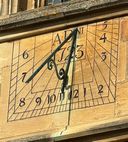 England
is a castle chapel built in the late-mediæval Perpendicular Gothic
style. The Chapel is a Royal Peculiar, and is the Chapel of the
Order of the Garter. St George's Chapel was founded in the 14th
century by King Edward III and extensively enlarged in the late
15th century. It is located in the Lower Ward of the castle and
has belonged to the Monarchy for almost 1,000 years. England
is a castle chapel built in the late-mediæval Perpendicular Gothic
style. The Chapel is a Royal Peculiar, and is the Chapel of the
Order of the Garter. St George's Chapel was founded in the 14th
century by King Edward III and extensively enlarged in the late
15th century. It is located in the Lower Ward of the castle and
has belonged to the Monarchy for almost 1,000 years.
The
sundial on the lady chapel is a classic vertical declining sundial
carved into the South face and declining about 14° from South. It
is a morning dial, showing more morning hours than afternoon ones.
The dial shows 6am to 5pm divided into half and quarter hours.
Hour lines, numerals etc are painted black. The bronze gnomon with
its S-shaped supporter has the date 1723 below and to the left of its root while on
its right is a way of completing the words Anno Domini.. It is recorded in the
National Register as SRN7423. Click on the thumbnail for a larger
image of this lovely dial.
09.03.2024 Image VL Thomson |
St Cybi's Church Dial, Anglesey.
St Cybi's Church is a mediæval church
near the
Roman
Caer Gybi in Holyhead, Anglesey, in N. Wales. It is Grade I listed.
The original
 church was constructed at Holyhead around 540 AD by
St Cybi, a cousin of St David. The church was sacked by Viking
invaders in the 10th century and damaged again in 1405 by Henry
IV's invading forces. The present church was built in the 13th
century and stands near the Roman fort in Holyhead. church was constructed at Holyhead around 540 AD by
St Cybi, a cousin of St David. The church was sacked by Viking
invaders in the 10th century and damaged again in 1405 by Henry
IV's invading forces. The present church was built in the 13th
century and stands near the Roman fort in Holyhead.
On the south face of the south transept
is a sundial dated to 1813 on which is the inscription “Yr
hoedl ar hyd ei haros a dderfydd yn nydd ac yn nos” which
translates as “Life though (however) long it stay(s) will end in
night and day”. Click on the thumbnail here (or
HERE) to see a larger image.
04.03.2024 |
The Dial at Bedford School
There is an unusual
fabricated sundial of what might be called an 'Open Construction'
which is sited over a circular window at
 Bedford
School, in Bedford. Some 6ft in diameter it is a great decliner dial
that declines substantially West but manages to mark the solar
hours and half hours from 1 to 9 pm with the 1pm line being
pleasingly outside the circular dial arrangement and, as with most
great decliners, with the
gnomon root being off scale.. Sadly the 8pm line has been damaged
at some time. Other solar system decoration is then arranged around the
periphery. It is recorded in the National Register as SRN2268.
Click the thumbnail or
HERE to see an excellent internet image. Bedford
School, in Bedford. Some 6ft in diameter it is a great decliner dial
that declines substantially West but manages to mark the solar
hours and half hours from 1 to 9 pm with the 1pm line being
pleasingly outside the circular dial arrangement and, as with most
great decliners, with the
gnomon root being off scale.. Sadly the 8pm line has been damaged
at some time. Other solar system decoration is then arranged around the
periphery. It is recorded in the National Register as SRN2268.
Click the thumbnail or
HERE to see an excellent internet image.
22.02.2024 |
The Dial At St Mary's Church,
Norton, in County Durham.
St Mary's is an ancient
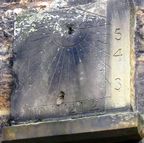 parish
church founded way back in 1020 and located on the village green
of Norton on Tees. It is the only cruciform Anglo-Saxon church in
Northern England and it is a Grade I listed building. It is known
for its grave of
John Walker, the inventor of friction matches,
who is buried in the churchyard. There is a Vertical East
Declining Sundial at this church above the South door which is not
mentioned at all in the Historic England listing though its
location is identified by an arrow on their diagrammatic map. parish
church founded way back in 1020 and located on the village green
of Norton on Tees. It is the only cruciform Anglo-Saxon church in
Northern England and it is a Grade I listed building. It is known
for its grave of
John Walker, the inventor of friction matches,
who is buried in the churchyard. There is a Vertical East
Declining Sundial at this church above the South door which is not
mentioned at all in the Historic England listing though its
location is identified by an arrow on their diagrammatic map.
The dial is
however mentioned in the National Register of extant UK sundials
but this wrongly states that the dial's date is written vertically
down the RHS when it is not. The numerals at the right hand side
are in reality the dial's afternoon hour numerals. There is a name
at the top of the dial - perhaps of the maker - but oddly for a UK
Grade I Listed Builing no attempt has been made to identify this.
The National
Record of dials has a photo of this rather dirty and neglected
dial The dial is not of course of the age of the church and,
whilst well cared isn't of real note. Click on the thumbnail or
HERE to see more.
16.02.2024 |
The Odd 'Mausoleum Dial' of Rome
There is an odd relatively recent
scratched
 dial,
high on a parapet of the Mausoleum of Hadrian in Rome. Currently a
museum, it is a towering rotunda in the Parco Adriano there.. It
was initially commissioned by the Roman Emperor Hadrian as a
mausoleum for himself and his family and the structure was once
the tallest building in Rome. dial,
high on a parapet of the Mausoleum of Hadrian in Rome. Currently a
museum, it is a towering rotunda in the Parco Adriano there.. It
was initially commissioned by the Roman Emperor Hadrian as a
mausoleum for himself and his family and the structure was once
the tallest building in Rome.
The tomb was erected on the right bank
of the Tiber, between AD 134 and 139. Originally it was a
decorated cylinder, with a garden top and golden quadriga.
Hadrian's ashes were placed here a year after his death in Baiae
in 138, together with those of his wife Sabina, and his first
adopted son, Lucius Aelius, who died in 138.
However in the
topmost room of this manificent tower there is a three-window
parapet on which lies a rather more modern scratched sundial -
sadly without its gnomon - but which is far more modern and
advanced than any scratch dials to be seen in the UK or in
Brittany which of course are mostly mediæval. It even shows
solstice and other date lines. Whoever constructed this and when
and, since it is so hard to reach, why? Perhaps it was needed for
clock/bell ringing timing? Click on the thumbnail or
HERE to see a
larger version.
11.02.2024
© VL Thomson
|
 The Tyntesfield House Dial
This dial is approximately 15 ins in diameter.
Currently
The Tyntesfield House Dial
This dial is approximately 15 ins in diameter.
Currently
 suspected
to have been made by Walter F Cave, he who designed Queen
Victoria's Golden Jubilee garden and orangery. The dial clearly
replaces a much larger sized dial-now thought lost. However
this replacement is certainly impressive and well engraved. Its
motto is an Edwardian favourite: "Let others tell of storms and
showers, I'll only count your sunny hours". suspected
to have been made by Walter F Cave, he who designed Queen
Victoria's Golden Jubilee garden and orangery. The dial clearly
replaces a much larger sized dial-now thought lost. However
this replacement is certainly impressive and well engraved. Its
motto is an Edwardian favourite: "Let others tell of storms and
showers, I'll only count your sunny hours".
Numerals are read from the inside of the
dialplate and are lined up with the hour lines with noon marked as
XII and 4pm as IIII. However and oddly, there is no noon gap. Some
of the spacing of the 5 minute marks also appear rather random
and therefore were possibly manually engraved but the compass points
are shown carefully engraved.
The dial is
mounted on an octagonal stone plinth. Its 'difficult' inscription
reads: I AM A SHADE A SHADOW TOO ART THOU I MARK THE TIME SAY
GOSSIP DOST THOU SO? [This believed to be from a verse by Henry
Austin Dobson]. It is suspected that the carved lettering uses the
same character set as found on architectural drawings by W F Cave
- the suspected designer.
Click on the thumbnail image here or
HERE to see
a larger view.
27.01.2024
© VL Thomson
|
The Church of St Anne, Over
Haddon A 1980 slate
sundial by David Kindersley is located at the far end of the
church on the South wall of the chancel and is
 approximately
2ft wide x 2ft 6ins high. The inscription by - George Herbert
reads: approximately
2ft wide x 2ft 6ins high. The inscription by - George Herbert
reads:
“Teach me Thy love to know: That this new light,
which now I see.
May both the work and workman show: Then by a
sunne-beam I will climbe to Thee.”
The dial takes the form
of a shaped dialplate of the breakarch style with an inset
circular dial scale. Dial furniture is gilded with a sunburst at
the origin. The dial shows 7am to 6pm in both half and quarter
hours. The dial's dedcation is to ‘Janet’ (Wadsworth) 1931-74 a
local parish councillor. A very pleasing Derbyshire sundial.
Click on the thumbnail or
HERE to see a larger image.
20.01.2024 |
The King's House Sundial
The King's House at
Thetford was constructed sometime between 1756 and 1782. Mid 18th
century descriptions of the house
 indicate
that it incorporates part of a hunting lodge that had been
acquired by James I in 1609. The house was once a Royal Mint, and
was afterwards occupied by Queen Elizabeth I and James I
successively. In 1950, the building was converted to municipal
offices. indicate
that it incorporates part of a hunting lodge that had been
acquired by James I in 1609. The house was once a Royal Mint, and
was afterwards occupied by Queen Elizabeth I and James I
successively. In 1950, the building was converted to municipal
offices.
This pleasing dial is approximately 5 ft off/square,
it declines over 60 degrees to the East and is positioned on the
East face of a chimney which itself is at the East end of the
house. The Motto reads ‘Festina Nox Mox’ which roughly translates
as Hasten, the Night (cometh) soon. Click on the
thumbnail image or
HERE to see a larger version.
13.01.2024 |
The Saskatchewan Observatory
Dial
For five decades, a large vertical
 sundial,
unusually mounted at roughly head-height outside the University of
Saskatchewan's Observatory displayed this motto: “I am a Shadow,
So art thou, I mark Time, Dost thou?” sundial,
unusually mounted at roughly head-height outside the University of
Saskatchewan's Observatory displayed this motto: “I am a Shadow,
So art thou, I mark Time, Dost thou?”
Over time it became
weathered and despite an attempted restoration in 1984 it was
finally removed altogether in the early 1990s.
A long time after
- in August 2019 - a new 10-foot-tall sundial was installed in the
same place at the observatory. The replacement is a replica of the
old one and features the original gnomon. Astronomy lecturer Dr.
Daryl Janzen led the project to replace the dial. He had said he
wanted to see the instrument return since first hearing about it as
a student in the early 2000s, rightly saying that a sundial is a
feature that draws people’s attention to the movement of the Earth.
The original custom-made sundial had been designed and paid
for by Professor William H. White around 1945. White came to
Saskatoon in 1942 to be near an observatory where he could pursue
his hobby of astronomy. A classical scholar as well as a physicist,
White was known for leaving students detailed comments — often
written in Latin. The new sundial differs from the previous versions
in one key way. Instead of wood, it is made from powder-coated
aluminum. Click the thumbnail or
HERE
to see another view.
06.01.2024 |
The 'Hard-to-Find' Dial at
Campden Farmhouse!
Campden Farmhouse
 is
a Grade II Listed Building in Barton-on-the-Heath in Warwickshire.
The dial is virtually invisible to passers-by since it is mounted
on the gable end of an outbuilding and faces away from any road.
It is mounted high on this end-gable wall, and it declines
East showing hour lines from 7am to 4pm in Roman numerals.
It has been dated to around the mid 18thC though Inigo Jones is
thought to have been involved with the nearby manor in the mid
1600s. Well worth a look - if you can ever get to see it!
Click on the thumbnail on this page or
HERE for a closer view. is
a Grade II Listed Building in Barton-on-the-Heath in Warwickshire.
The dial is virtually invisible to passers-by since it is mounted
on the gable end of an outbuilding and faces away from any road.
It is mounted high on this end-gable wall, and it declines
East showing hour lines from 7am to 4pm in Roman numerals.
It has been dated to around the mid 18thC though Inigo Jones is
thought to have been involved with the nearby manor in the mid
1600s. Well worth a look - if you can ever get to see it!
Click on the thumbnail on this page or
HERE for a closer view.
29.12.20123 |
UK Garden Heritage's
latest
Blog Post is now published, appropriately at
the time of the Winter Solstice.
It covers the subject of Sundials for those many
 people
who are interested in all aspects of Garden Heritage and also for
those Diallists interested in a bit of history!
There's even a link to the discovery of a tree -shaded dial in
Buckingham Palace Gardens. Now of course corrected (by BSS). Well
worth a look. people
who are interested in all aspects of Garden Heritage and also for
those Diallists interested in a bit of history!
There's even a link to the discovery of a tree -shaded dial in
Buckingham Palace Gardens. Now of course corrected (by BSS). Well
worth a look.
Click the thumbnail image or
here
to go to the Blog and do consider following
Garden Heritage
for yourself from now on.
22.12.2023 Courtesy Garden Heritage 2023. |
The Dial of Styal
On a private house in
Styal, Cheshire there is an interesting Vertcal Declining Dial.
Measuring approximately 13 x 18 inches , it declines considerably
to the West
 and
has some really quite fascinating 'furniture'. Notably there
is an unusual motto and alongside this a shield comprising a coat
of arms, a crown, a tree, a sword and even 3 stylised tridents! and
has some really quite fascinating 'furniture'. Notably there
is an unusual motto and alongside this a shield comprising a coat
of arms, a crown, a tree, a sword and even 3 stylised tridents!
The motto, in a mixture of German and English reads "Ein Doe
and Spare Not". This is a modified version of the original arms of
McGregor. A George III oak shield with the Arms of McGregor and
a version of the original ‘Ein Doe And Spair Not’.
The Arms
of McGregor may be described thus: The oak tree represents
the 12th century legend of Sir Malcolm Macgregor of Glenorchy and
how he saved the King’s life. Sir Malcolm was an attendant during
the King’s hunting party. During the hunt, the King was attacked
by a wild boar. Sir Malcolm recognised the danger and asked if he
could assist. The King replied ‘E’en do bait spair nocht’ ‘In what
you do, spare nothing’. Sir Malcolm came to his aid and uprooted
an oak sapling which he used to repel the boar. The King gave Sir
Malcolm permission to use the oak tree in his crest in place of
the fir or pine tree formerly used, and the King’s words were
adopted thereafter as a clan motto. The sword is a symbol of the
clan’s valour in battle, and the crown represents the clan’s royal
origins. Click on the thumbnail or
HERE for a larger image.
17.12.2023 |
The Dial at Westmill
Westmill is a village and civil parish in East Hertfordshire,
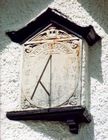 having
an area of some 2500 acres. A population of 264 was recorded in
the 2001 National Census. The village is just to the south of
Buntingford, beside the River Rib. There on a private house is
a lovely dial which is mounted in the gable end of the house above a
first floor window overlooking the village green. It is canted out
at the right hand side on a moulded shelf, and protected by a
small gable roof. The rectangular dial plate has an upper pediment
enclosing a winged hourglass. having
an area of some 2500 acres. A population of 264 was recorded in
the 2001 National Census. The village is just to the south of
Buntingford, beside the River Rib. There on a private house is
a lovely dial which is mounted in the gable end of the house above a
first floor window overlooking the village green. It is canted out
at the right hand side on a moulded shelf, and protected by a
small gable roof. The rectangular dial plate has an upper pediment
enclosing a winged hourglass.
The dial itself is oval in
shape with winged cherub heads in the four spandrels. Above the
gnomon is the motto ‘DVM SPECTAS FVGIO’, (As you watch, I flee)
and the date is given as MDCCXCIII. Click the thumbnails to see
larger images.
 Sadly
it can be seen that the dial is not quite numbered properly - the
marked 6am 6pm line is not horizontal as it should be. The
National Register however still indicates it is as a Vertical (S)
dial. A line calculation of the correct dial layout for this
latitude is given
HERE.
The horizontal is the correct 6am/6pm line. Sadly
it can be seen that the dial is not quite numbered properly - the
marked 6am 6pm line is not horizontal as it should be. The
National Register however still indicates it is as a Vertical (S)
dial. A line calculation of the correct dial layout for this
latitude is given
HERE.
The horizontal is the correct 6am/6pm line.
08.12.2023 |
The Dial at All Saints Church, Llangorwen.
Here the sundial is near the porch, on
 the
south east buttress. It is a Direct South dial by John Morgan
dated 1858 with an iron gnomon. The church was built in
sandstone to the Early English style of nave and chancel with
careful buttressing and string coursing all beneath steeply
pitched slate roofs. It is an early example of the close
collaboration between Gothic architecture and the revival of
Anglican worship. the stone altar was the first one in Wales since
the Reformation. Members of the Oxford Movement took a close
interest in the church. Click the thumbnail or
HERE for a larger version. the
south east buttress. It is a Direct South dial by John Morgan
dated 1858 with an iron gnomon. The church was built in
sandstone to the Early English style of nave and chancel with
careful buttressing and string coursing all beneath steeply
pitched slate roofs. It is an early example of the close
collaboration between Gothic architecture and the revival of
Anglican worship. the stone altar was the first one in Wales since
the Reformation. Members of the Oxford Movement took a close
interest in the church. Click the thumbnail or
HERE for a larger version.
03.12.2023 |
The Dial on the Church of King Charles The Martyr
In the 1670s, Tunbridge
 Wells
had few permanent structures when it started to receive visits
from members of the English Royal Family. The church was built on
land belonging to Viscountess Purbeck as a 'Chapel of Ease' for
those visiting The Pantiles and was opened in 1676 after being
constructed by Thomas Neale. It was dedicated to King Charles the
Martyr - the cult of Charles I, who was executed in 1649 and whose
son Charles II had been restored as the monarch in 1660. While it was a
Chapel of
Ease, it served the parishes of Frant, Speldhurst and Tonbridge.
A well known dial, declining about 30 deg west, and kept in good
condition. It was purchased by the church in 1771 in order to
regulate the clock. The motto reads ‘Ye may waste but cannot stop
me’. There is an unusual stirrup support to the gnomon. Click the
thumbnail or
HERE to see a larger image Wells
had few permanent structures when it started to receive visits
from members of the English Royal Family. The church was built on
land belonging to Viscountess Purbeck as a 'Chapel of Ease' for
those visiting The Pantiles and was opened in 1676 after being
constructed by Thomas Neale. It was dedicated to King Charles the
Martyr - the cult of Charles I, who was executed in 1649 and whose
son Charles II had been restored as the monarch in 1660. While it was a
Chapel of
Ease, it served the parishes of Frant, Speldhurst and Tonbridge.
A well known dial, declining about 30 deg west, and kept in good
condition. It was purchased by the church in 1771 in order to
regulate the clock. The motto reads ‘Ye may waste but cannot stop
me’. There is an unusual stirrup support to the gnomon. Click the
thumbnail or
HERE to see a larger image
27.11.2023 |
French
artist and
designer
Pierre
Brault's designs
Another - often Franglais
 based
- of these POP SUNDIAL art displays that are taking over some
buildings in Parisian city streets, Pierre recreates remarkable
variations of sundials to mark the natural rhythm and time of day
at every hour. As the sun progresses in its position in the sky,
the installations begin projecting changing, multicoloured dials,
intended as ‘an invitation to appreciate the present moment.’ based
- of these POP SUNDIAL art displays that are taking over some
buildings in Parisian city streets, Pierre recreates remarkable
variations of sundials to mark the natural rhythm and time of day
at every hour. As the sun progresses in its position in the sky,
the installations begin projecting changing, multicoloured dials,
intended as ‘an invitation to appreciate the present moment.’
Not only that but, the artist
reinterprets latin mottos as the names for his projects, assigning
them titles for each sundial variation: SOL REGIT OMNIA (the sun
rules over everything), DO SI SOL (I give if the sun gives), and
SINE MOTU CURRO (Immobile, however I run). Surely a novel approach
to street scene art? Click on the image for a clip of the
changing views (turn off sound if necessary!!)
17.11.2023 |
The Dial at the Parish Church of St James the Greater,
Abson.
 Abson
village church is South of the M4 and roughly ENE of Bristol. Set
over the South porch of the Church (which is of 12thC origin) and excellently
restored c2003 by Harriet James and with a new brass gnomon. The
dial is mounted on a central corbel and canted out some ten
degrees West to face due South. It is of a breakarch design, 25 x
26 ins approx in size and dated 1787. It displays 6am to 6pm in
half and quarter Roman numbered hours. The National Record still oddly suggests
that the dial is in poor condition when clearly it is not.
Click on the thumbnail or
HERE to see a larger image Abson
village church is South of the M4 and roughly ENE of Bristol. Set
over the South porch of the Church (which is of 12thC origin) and excellently
restored c2003 by Harriet James and with a new brass gnomon. The
dial is mounted on a central corbel and canted out some ten
degrees West to face due South. It is of a breakarch design, 25 x
26 ins approx in size and dated 1787. It displays 6am to 6pm in
half and quarter Roman numbered hours. The National Record still oddly suggests
that the dial is in poor condition when clearly it is not.
Click on the thumbnail or
HERE to see a larger image
13.11.2023 |
One of the Brodie Castle Sundials
Brodie Castle is one of Moray's most famous
 castles,
painted a rose pink and situated within stunning gardens.
Architecturally, the castle has a very well-preserved 16th-century
central keep with two 5-storey towers on opposing corners. Badly
damaged by fire in 1645, it was later rebuilt. castles,
painted a rose pink and situated within stunning gardens.
Architecturally, the castle has a very well-preserved 16th-century
central keep with two 5-storey towers on opposing corners. Badly
damaged by fire in 1645, it was later rebuilt.
The interior of
the castle on the other hand is well preserved, containing fine
antique furniture, oriental artefacts and painted ceilings,
largely dating from the 17th–19th centuries. Outside a few
interesting sundials can be found. One, a 16thC horizontal dial, is
worthy of mention. Click on the image or
HERE for a closer look.
09.11.2023 |
The Dial at Stirling's Highland Hotel
There is an impressive and frankly, an usual, dial at the Highland
Hotel in
 Stirling.
It was designed by Sir William Peck - the then Stirling City
Asronomer in 1891 and was a gift from one Lawrence Pullar of the
Bridge of Allan (Bofa). The brass dial which is roughly
three feet square, declines substantially East. Its furniture
includes seven declination lines including the usual three usual
lines for mid summer, mid winter and the equinoxes and it displays
using Arabic numerals. It is delineated in 1, 5, 15 and 30 minute
marks. There is a two day interval EoT scale courtesy of the Rev
Vuille presented across the bottom of the dial. The dial's motto
is the-then popular: "I only count the Sunny Hours". A
larger image of this elaborate dial (courtesy of BSS) may be seen
by clicking either on the thumbnail or
HERE. Stirling.
It was designed by Sir William Peck - the then Stirling City
Asronomer in 1891 and was a gift from one Lawrence Pullar of the
Bridge of Allan (Bofa). The brass dial which is roughly
three feet square, declines substantially East. Its furniture
includes seven declination lines including the usual three usual
lines for mid summer, mid winter and the equinoxes and it displays
using Arabic numerals. It is delineated in 1, 5, 15 and 30 minute
marks. There is a two day interval EoT scale courtesy of the Rev
Vuille presented across the bottom of the dial. The dial's motto
is the-then popular: "I only count the Sunny Hours". A
larger image of this elaborate dial (courtesy of BSS) may be seen
by clicking either on the thumbnail or
HERE.
04.11.2023 Permission
EU C-466/12
retained and as amended |
St Senara's Church Dial, Zennor.
Here is an interesting and well delineated East-Declining slate
sundial
 surmounted
by an unusual winged head emblem below which is a motto that uses
the spelling of the mid 1600's , “The Glory of the World Paseth”.
Excellently engraved in 1737 by one Paul Quick - presumably a
local since no other dial by him is sadly known today.
History of the dial suggests it might have fallen (and of course
broken) in the late 1950s or early 1960s and been replaced,
possibly with a more modern gnomon and a much more sturdy wall
mounting. The church is dedicated
to the legendary Cornish Lady-saint with links to the village of
Zennor on the north coast of Cornwall. Click the image or
HERE for a closer look. surmounted
by an unusual winged head emblem below which is a motto that uses
the spelling of the mid 1600's , “The Glory of the World Paseth”.
Excellently engraved in 1737 by one Paul Quick - presumably a
local since no other dial by him is sadly known today.
History of the dial suggests it might have fallen (and of course
broken) in the late 1950s or early 1960s and been replaced,
possibly with a more modern gnomon and a much more sturdy wall
mounting. The church is dedicated
to the legendary Cornish Lady-saint with links to the village of
Zennor on the north coast of Cornwall. Click the image or
HERE for a closer look.
29.10.2023 |
A Dial at the Minack!!
In an imaginative move a sundial has recently been installed at the
Minack cliff-top theatre in Cornwall to mark 30 years of
 performances
there by the London based BROS Theatre Company. The company has
now been performing at the Minack Theatre near Porthcurno for
three decades. Perhaps fittingly a local group production of
William Shakespeare's The Tempest was the first play staged on
what was a cliffside slope near Porthcurno. - in 1932. performances
there by the London based BROS Theatre Company. The company has
now been performing at the Minack Theatre near Porthcurno for
three decades. Perhaps fittingly a local group production of
William Shakespeare's The Tempest was the first play staged on
what was a cliffside slope near Porthcurno. - in 1932.
The dial - constructed of brass - is
mounted somewhat close to a drop and so its design has been
arranged to make viewing the dial from a safer viewpoint! The time
scales mark periods of five minutes and indicate both solar time
and summertime. Click the image or
HERE
to see a larger image and do try to get to see it when you might
next be visiting Porthcurno.
22.10.2023 |
The Non-Dial 'Armillary' at New Place
'New Place' was William Shakespeare's final place of residence in
Stratford-upon-Avon. He died there in
 1616.
The whole building was sold and later demolished by Francis
Gastrell, vicar of Frodsham, Cheshire, in 1759. It was never
rebuilt and only the foundations remain. A strange armillary
sphere (that does NOT tell solar time) sits there on a very high
post. It supposedly represents a model of the world according to
Ptolomy even though Copernicus had placed the sun at the centre of
the solar system over 50 years before Shakespeare bought New
Place. The Armillary sphere at Shakespeare’s New Place today
was made by Simon Kenny of Souvenir Studios. The line on the
ground shows the boundary of the original house. Click on the
image or HERE
to see it in context. 1616.
The whole building was sold and later demolished by Francis
Gastrell, vicar of Frodsham, Cheshire, in 1759. It was never
rebuilt and only the foundations remain. A strange armillary
sphere (that does NOT tell solar time) sits there on a very high
post. It supposedly represents a model of the world according to
Ptolomy even though Copernicus had placed the sun at the centre of
the solar system over 50 years before Shakespeare bought New
Place. The Armillary sphere at Shakespeare’s New Place today
was made by Simon Kenny of Souvenir Studios. The line on the
ground shows the boundary of the original house. Click on the
image or HERE
to see it in context.
15.10.2023 VL Thomson |
The Piquet House Dial, Jersey,
CI
In the Royal Square of St Helier, Jersey, CI can be
 seen
a rare survival of a Georgian military picket house with an
unusual sundial. seen
a rare survival of a Georgian military picket house with an
unusual sundial.
The 1803 military picket house is a
two-storey, three-bay structure with a hipped roof behind a
parapet. The sundial is positioned on the left outside wall on
the first floor - An inscription reads 'Regulate your clocks by
the Sun Dial; correction must be made; for the equation of time;
which is given in all the Almanacks'. Above are four letters
interpreted by Levitt as 'NOTE'. Levitt records the sundial's
installation as 1820-30 and its various restorations in 1888,
circa 1984 and later in 2004. It was designed by Elias Le Gros
(creator of the well known 1834 Le Gros map) and it marks time
using Roman and Arabic hours. It is of painted and gilded
limestone with a painted metal gnomon. Click the image or
HERE for a larger image.
09.10.2023 |
A Perpetual Roman Calendar!
Excavating in 2008 at the Roman fort settlement
of Vindolanda along Hadrian's Wall in Northern England,
 archaeologists discovered a fragment of an ancient perpetual
calendar, an annual type not tied to any particular year. It's one
of only three ancient portable calendars ever found. The calendar
was the first object of its type to come from Roman Britain and
the only one from a scientific excavation. archaeologists discovered a fragment of an ancient perpetual
calendar, an annual type not tied to any particular year. It's one
of only three ancient portable calendars ever found. The calendar
was the first object of its type to come from Roman Britain and
the only one from a scientific excavation.
If complete, the
calendar would have been a circular disk about 12 inches in
diameter. Every two days a peg (not found) would have been moved
into the next hole, indicating the correct date.
Vindolanda
has yielded more evidence about daily life on the Roman frontier
than almost any other site. Soldiers, slaves, merchants, women,
and children are all represented in more than 1,400 writing
tablets that have been recovered there. These documents include
the earliest examples of female handwriting from western Europe,
demands for beer, requests for leave, and (possibly quite
reasonably from the British point of view!) references to the
"nasty little Brits" in the region surrounding the Roman fort.
Click on the thumbnail or
HERE for a larger image. More descriptive
details
HERE.
30.09.2023 Notified by VL Thomson |
The Intihuatana Stone in Machu Picchu
The Intihuatana stone in Machu
 Picchu
is a unique and iconic feature of the ancient Inca city. Located
in the Temple of the Sun, this stone is believed to have been used
by the Incas for astronomical observations, and to mark the winter
and summer solstices. Its four sides are oriented N,S,E and W and
the pillar is slightly tilted. The idea that it was a sundial
comes from the fact that the sun 'sits' directly above the stone
on the two equinoxes (March 21st and September 21st) and it
creates no shadow at all. This happens because the point on the
Intihuatana has a slight inclination of 13 degrees. Being so
high up in the mountain also meant that sowing seeds at the right
times of year would make crops flourish rather than die. For this
reason, the speculations surrounding Intihuatana are very likely
true. Click on the thumbnail or
HERE for a closer
look. Picchu
is a unique and iconic feature of the ancient Inca city. Located
in the Temple of the Sun, this stone is believed to have been used
by the Incas for astronomical observations, and to mark the winter
and summer solstices. Its four sides are oriented N,S,E and W and
the pillar is slightly tilted. The idea that it was a sundial
comes from the fact that the sun 'sits' directly above the stone
on the two equinoxes (March 21st and September 21st) and it
creates no shadow at all. This happens because the point on the
Intihuatana has a slight inclination of 13 degrees. Being so
high up in the mountain also meant that sowing seeds at the right
times of year would make crops flourish rather than die. For this
reason, the speculations surrounding Intihuatana are very likely
true. Click on the thumbnail or
HERE for a closer
look.
25.09.2023
© VL Thomson
|
The Sundial at Heligan
There is a lovely bronze sundial to be seen in Mrs Tremayne's
Garden at Helligan, Pentewan, St.Austell, Cornwall. The Garden was
 only
discovered in the 1990's and arguably is the largest recent Victorian
garden resoration in Europe. It is an horizontal dial from the
18th century made by T Watkins. It correctly has a noon-gap to
permit time to be read from either side of the sturdy gnomon, is
graduated down to two minute intervals, is 15 inches in diameter
with an engraved compass in good condition and is designated SRN
4031 in the National Register. Click on the thumbnail image or
HERE to see more of this
lovely dial. only
discovered in the 1990's and arguably is the largest recent Victorian
garden resoration in Europe. It is an horizontal dial from the
18th century made by T Watkins. It correctly has a noon-gap to
permit time to be read from either side of the sturdy gnomon, is
graduated down to two minute intervals, is 15 inches in diameter
with an engraved compass in good condition and is designated SRN
4031 in the National Register. Click on the thumbnail image or
HERE to see more of this
lovely dial.
17.09.2023 Photos
© P Strudwick |
The 'Angel of Corbridge' Dial
Corbridge is a town in Northumberland which is
 ideally
placed to explore the County, Hadrian's wall, Roman forts, castles
and beaches. In 'Main Street' is the Angel pub and hotel. The
Angel dates back to 1569 and could possibly be the oldest ‘inn’ in
Northumberland. The names of every owner, landlord,
innkeeper, and tenant from 1569 until today are displayed inside
but outside above and to the left of the entrance is a sundial
mounted in a recess which is canted East to face due South.
It is marked with the initials of its maker and its date: E.W.A
1726. ideally
placed to explore the County, Hadrian's wall, Roman forts, castles
and beaches. In 'Main Street' is the Angel pub and hotel. The
Angel dates back to 1569 and could possibly be the oldest ‘inn’ in
Northumberland. The names of every owner, landlord,
innkeeper, and tenant from 1569 until today are displayed inside
but outside above and to the left of the entrance is a sundial
mounted in a recess which is canted East to face due South.
It is marked with the initials of its maker and its date: E.W.A
1726.
Click on the thumbnail or
HERE to see a closer image of this simple but
pleasing Direct South Dial.
25.08.2023 |
St Aidan's Church Sundial Bamburgh
Located over the door at the West end
 of
the South aisle of the Church and coming up for 200 years old. The motto at the base reads:
“Pereunt et Imputantur” in a gothic style. It translates roughly
as The hours pass away and are accounted for. of
the South aisle of the Church and coming up for 200 years old. The motto at the base reads:
“Pereunt et Imputantur” in a gothic style. It translates roughly
as The hours pass away and are accounted for.
In
the scrolled top edge lie the date ‘1828’ and the latitude 55d 38m
44s. The outer scale, has 5min divisions and two dots mark the
hours, one dot marks the half and quarter hours. It shows half,
quarter and eighth hour divisions in all and has an ornate scrolled
bronze gnomon. Recorded in the National Register as SRN 0775 it is
dated 1828 and is a well designed and detailed dial albeit with
some spalling. Click on the thumbnail for a larger image or
click
HERE.
21.08.2023 Image courtesy and copyright: M.D. Powers, 2023 |
Sundial Bridge will soon celebrate 20 years!
The Sundial Pedestrian Bridge
 at
Redding in California will celebrate its 20th anniversary in 2024.
The Sundial Bridge is a cantilever spar cable-stayed bridge for
bicycles and pedestrians that spans the Sacramento River in Redding,
California, United States and forms a large sundial. It attracts visitors from all
over the world. Located in the Turtle Bay Exploration Park at the
point of the crossing of the Sacramento River, the main support of the
suspension bridge is aligned true North and serves as a huge gnomon for
an equally huge horizontal dial. Sadly (for the diallist!) the gnomon
angle is some 8.4 degrees steeper than it should be so the dial does not
quite show correct solar time.
The Bridge
has been
named on USA Today's list of the most beautiful places in
California.!! at
Redding in California will celebrate its 20th anniversary in 2024.
The Sundial Bridge is a cantilever spar cable-stayed bridge for
bicycles and pedestrians that spans the Sacramento River in Redding,
California, United States and forms a large sundial. It attracts visitors from all
over the world. Located in the Turtle Bay Exploration Park at the
point of the crossing of the Sacramento River, the main support of the
suspension bridge is aligned true North and serves as a huge gnomon for
an equally huge horizontal dial. Sadly (for the diallist!) the gnomon
angle is some 8.4 degrees steeper than it should be so the dial does not
quite show correct solar time.
The Bridge
has been
named on USA Today's list of the most beautiful places in
California.!!
19.11.2014
14.08.2023 |
More on the Antikythera Mechanism
Suninfo has covered this amazing
 mechanism
more than once in the past six or so years, and links to such
references can be found in our archives. Here though, is a link to
a talk about the Mechanism by Dr Tony Freeth, covering its
discovery, the attempts to decipher it through astonishing
corrosion and where we are today. The mechanism has been the
subject of a plenary lecture at an earlier BSS Annual Meeting and
this talk covers much of that lecture but of course with an update
on where we currently are. Click the above thumbnail image
or
HERE to be linked with a fascinating hour's
talk. mechanism
more than once in the past six or so years, and links to such
references can be found in our archives. Here though, is a link to
a talk about the Mechanism by Dr Tony Freeth, covering its
discovery, the attempts to decipher it through astonishing
corrosion and where we are today. The mechanism has been the
subject of a plenary lecture at an earlier BSS Annual Meeting and
this talk covers much of that lecture but of course with an update
on where we currently are. Click the above thumbnail image
or
HERE to be linked with a fascinating hour's
talk.
02.08.2023 |
A 'Secure' Sundial?
Still on Holy Island, otherwise known as Lindisfarne, there is
 what
might be called a 'Secure' sundial! It is located inside the
railings that protect the ancient Celtic cross that sits outside
the Manor House Hotel which, in turn, is located at the heart of
the island, adjacent to the Priory and with magnificent views of
the castle and harbour. It is a well designed horizontal
dial with several engraved scales - maker unknown - and set on its
own pedestal but inside the protective railings. It does not
yet appear to be recorded - at least in the Internet-based register of UK
sundials. Take a look next time you are nearby - but
remember that the tide only permits access to the Island at certain times. Click on the thumbnail image here - or
HERE - for more
details. what
might be called a 'Secure' sundial! It is located inside the
railings that protect the ancient Celtic cross that sits outside
the Manor House Hotel which, in turn, is located at the heart of
the island, adjacent to the Priory and with magnificent views of
the castle and harbour. It is a well designed horizontal
dial with several engraved scales - maker unknown - and set on its
own pedestal but inside the protective railings. It does not
yet appear to be recorded - at least in the Internet-based register of UK
sundials. Take a look next time you are nearby - but
remember that the tide only permits access to the Island at certain times. Click on the thumbnail image here - or
HERE - for more
details.
29.07.2023
© VL Thomson |
A Recorded Dial is Missing !!
Here we take a visit to Holy Island, off
 the
coast of Northumberland. The dial that is recorded in the
National Register (SRN 3364) as a memorial to Gertrude Jekyll 1843
– 1932 is no longer in its place in the Jekyll garden. the
coast of Northumberland. The dial that is recorded in the
National Register (SRN 3364) as a memorial to Gertrude Jekyll 1843
– 1932 is no longer in its place in the Jekyll garden.
When asked, even the locals did not know of its removal - or
of any resiting or theft. SunInfo is pleased
to be able to report this. Anyone able to cast light on the
loss should contact the
webmaster.
Click on the double image here or
HERE
for a larger version.
24.07.2023
© VL Thomson and Robin Jones1 on Flckr |
 Did an English diallist 'save' a French Cathedral from the mobs of
the French Revolution?
Did an English diallist 'save' a French Cathedral from the mobs of
the French Revolution?
 In
1727, the then priest of Saint-Sulpice in Paris, requested the
construction of a gnomon in the church to help him determine the
time of the equinoxes and hence of Easter. A meridian line of
brass was inlaid across the floor and then ascending a white
marble obelisk, nearly eleven metres high, at the top of which is
a sphere surmounted by a cross. The obelisk is dated 1743. In
1727, the then priest of Saint-Sulpice in Paris, requested the
construction of a gnomon in the church to help him determine the
time of the equinoxes and hence of Easter. A meridian line of
brass was inlaid across the floor and then ascending a white
marble obelisk, nearly eleven metres high, at the top of which is
a sphere surmounted by a cross. The obelisk is dated 1743.
In the south transept window a small opening with a lens was set
up, so that a ray of sunlight shines onto the brass line. At noon
on the winter solstice (21 December), the ray of light touches the
brass line on the obelisk. At noon on the equinoxes (approx 21 March and
21 September), the ray touches an oval plate of copper in the
floor near the altar.
Constructed by the English
clock-maker and astronomer Henry Sully, the gnomon was also used
for various scientific measurements. It is considered by some that
this non religous use may have protected Saint-Sulpice from being
destroyed during the French Revolution.
The first meridian
line was completed in 1727. But the watchmaker Henry de Sully died
one year after he started to prepare it and the meridian stayed
unfinished until 1743 when the astronomer Charles Le Monnier
finished the project.
In later years a second aperture was
installed, more can be read of this
HERE
16.07.2023 |
 A New Kirkaldy Dial
Sir Sandford Fleming was a Scottish civil engineer and scientist who
was the foremost railway engineer of Canada in the 19th century.
A New Kirkaldy Dial
Sir Sandford Fleming was a Scottish civil engineer and scientist who
was the foremost railway engineer of Canada in the 19th century.
 He also created worldwide standard time zones, as well as making
his mark in Canada where he designed the country’s first postage
stamp and engineered its major rail link. A few years later he
proposed the system using standardised time zones around the
globe. Now his remarkable achievements are celebrated by a
new analemmatic sun dial by Macmillanhunter Dials installed on the
water front of Port Brae in Kirkaldy. He also created worldwide standard time zones, as well as making
his mark in Canada where he designed the country’s first postage
stamp and engineered its major rail link. A few years later he
proposed the system using standardised time zones around the
globe. Now his remarkable achievements are celebrated by a
new analemmatic sun dial by Macmillanhunter Dials installed on the
water front of Port Brae in Kirkaldy.
On such dials a
person stands on the dial to act as the vertical gnomon. The hours
are laid out in an ellipse, and the person’s shadow points to the
time. In summer the sun is high in the sky so the person who is
acting as the gnomon stands further forward, while in winter the
sun is low and they move further back. The proper place to stand
on this dial is marked by the initial letter of each of the twelve
months of the year. Click the thumbnail for a larger view or
HERE.
08.07.2023 |
 The Holyrood Dial
One of the most enduring items found in the gardens at the
The Holyrood Dial
One of the most enduring items found in the gardens at the
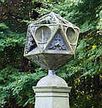 Palace
of Holyroodhouse is the polyhedral sandstone sundial. Carved in
1633 and presented by Charles I to his queen Henrietta Maria, it
was placed in the centre of the King’s Garden at Holyrood. This
gift coincided with Charles I’s Scottish Coronation at the Abbey
of Holyrood. Palace
of Holyroodhouse is the polyhedral sandstone sundial. Carved in
1633 and presented by Charles I to his queen Henrietta Maria, it
was placed in the centre of the King’s Garden at Holyrood. This
gift coincided with Charles I’s Scottish Coronation at the Abbey
of Holyrood.
Its head contains twenty dials with metal
gnomons, carved as spheres, semi-circles, or onto the surface, set
on a lead fixing above a stone pillar and stepped pedestal. The
mason, John Mylne, commissioned specialists to undertake ‘the
working and hewing the dyell in the northe yard with the pillar
stapis degris [steps] and fundatioun thairof’. The total cost to
the Crown, which included the masonry, metalwork, gilding and
painting of the dial, was £408 15s 6d. Although not the first
sundial to be installed in Edinburgh, it is an early and survivor
of a pioneering and particularly Scottish polyhedral type, which
would be installed in the new gardens of Scottish castles and
country houses for the next few decades.
The making,
engraving and gilding of the dial was undertaken by John Barton.
Click on the thumbnail image or
HERE to see the dial in more detail.
02.07.2023 |
 Kelmscott Church Dials
Kelmscott is best known for its
association with
Kelmscott Church Dials
Kelmscott is best known for its
association with
 William
Morris who bought Kelmscott Manor and lived there with his
wife. Kelmscott is a Cotswold village hidden in country lanes on the
upper reaches of the River Thames. Indeed William Morris used to
row from his home in London, Kelmscott House to his country
retreat Kelmscott Manor. William
Morris who bought Kelmscott Manor and lived there with his
wife. Kelmscott is a Cotswold village hidden in country lanes on the
upper reaches of the River Thames. Indeed William Morris used to
row from his home in London, Kelmscott House to his country
retreat Kelmscott Manor.
The church is a
wonderful survival, unchanged since the 16th century and was a
'chapel of ease' until 1430 with the dead having to be carried to
Broadwell for burial. The vertical direct South sundial is now
rather worn but the Roman numerals can still be discerned and the
dial used. The
church still contains several 13th century wall paintings.
Below the dial
there is a wonderful collection of mass dials. All well worth
viewing. Click on the thumbnail image or
HERE to see a little
more.
25.06.2023
Image Dr VLThomson |
 The
Dial at Dorney Court
Dorney Court has always been the village manor house
although it has changed dramatically since first The
Dial at Dorney Court
Dorney Court has always been the village manor house
although it has changed dramatically since first
 mentioned
in the Domesday Book (1086) when the property was owned by
Miles Crispin, a wealthy landowner. mentioned
in the Domesday Book (1086) when the property was owned by
Miles Crispin, a wealthy landowner.
In the
millennium between the first record of the house when
William the Conqueror was King of England, ownership of
Dorney Court and the estate passed through the hands of
six families before it was sold to Sir William Garrard,
Lord Mayor of London, in 1537. The dial in the
gardens is more modern (!), simple but elegant. Click on the image or
HERE to
see some images.
17.06.2023 Image Dr VLThomson, |
|
 The
Rivington Dial
This wonderful home-made polyhedral dial - by diallist
Peter Scott - is located at Rivington,
Lancs but was based on the remarkable dial that The
Rivington Dial
This wonderful home-made polyhedral dial - by diallist
Peter Scott - is located at Rivington,
Lancs but was based on the remarkable dial that
 stands
in the grounds of Walton Hall near Wakefield at the former home of
Charles Waterton, the Victorian conservationist. It takes the form
of a twenty face icosahedron. Upon each face of which is mounted a
triangular dial plate and a brass gnomon. stands
in the grounds of Walton Hall near Wakefield at the former home of
Charles Waterton, the Victorian conservationist. It takes the form
of a twenty face icosahedron. Upon each face of which is mounted a
triangular dial plate and a brass gnomon.
All dial faces
are
delineated to show local time corrected for the longitude
difference from the Greenwich Meridian. The design and
construction is described in the author's 2005 BSS Bulletin
article which makes really interesting reading. Click on the
thumbnail image or
HERE to read the article courtesy of the BSS archive.
07.06.2023
EU C-466/12
retained and as amended. |
 The
Dial at Hanbury Hall
The original garden at Hanbury Hall was designed in 1705 by George
London, a predecessor of other renowned designers The
Dial at Hanbury Hall
The original garden at Hanbury Hall was designed in 1705 by George
London, a predecessor of other renowned designers
 Kent,
Brown and Nash. Kent,
Brown and Nash.
He was the most celebrated garden designer of
his time, creating gardens for royalty and nobility at Chatsworth,
Hampton Court and Kensington Palace.
In the early 1990s work
began to recreate London’s garden at Hanbury Hall. Not a trace of
the original garden remained but using London’s original 1705
plans along with other historic plans and drawings, a team of
experts determined the layout of the topiary and hedge framework
that made up the structure of the Great Garden. The Dial is
situated outside the Orangery some distance from the house. Click
on the image or HERE
to see more of this unusual dial with the equally unusual motto
Nox Venit (Night comes).
03.06.2023 |
 The Arley Arboretum Dial
One of the oldest and most spectacular
Arboreta
in Britain, Arley was originally planned by Earl Mountnorris The Arley Arboretum Dial
One of the oldest and most spectacular
Arboreta
in Britain, Arley was originally planned by Earl Mountnorris
 around 1800. Although Arley had become highly renowned for its
exotic and rare tropical plants by the 1840’s, it is the specimen
trees that are now the main interest, now being considered to be
one of the country’s finest tree collections. around 1800. Although Arley had become highly renowned for its
exotic and rare tropical plants by the 1840’s, it is the specimen
trees that are now the main interest, now being considered to be
one of the country’s finest tree collections.
In 1852 the
Estate was purchased by Robert Woodward and in 1959 by the
Industrialist Roger Turner by when the arboretum was in a state of
neglect and many of the village properties required substantial
renovation.
Turner died in 1999 and left the entire Estate,
in all 1600 acres, to his Charitable Trust which he had founded
some 30 years earlier. The Trustees decided that the arboretum was
of particular importance for it to be extended and opened to the
public.
It is now home to over 300 species of trees and
features a beautiful Laburnum arch, measuring 65 metres. It also
sports a sundial (and an uncalibrated armillary shaped ornament).
The dial is clearly delineated but sadly has no maker's name and
has no noon gap. Click on the image or
HERE to see
more of this interesting dial and its pedestal.
21.05.2023 |
 The Mirehouse Dial at Crosthwaite
Mirehouse is a 17th-century house
The Mirehouse Dial at Crosthwaite
Mirehouse is a 17th-century house
 North
of Keswick in Westmorland, near Bassenthwaite Lake. It remains a
family home but it and its grounds are open to the public.
Mirehouse was built in 1666 by Charles Stanley, 8th Earl of Derby,
who sold it in 1688 to his agent, Roger Greg. The Greg family and
then their descendants, the Storys, owned the estate until 1802
when Thomas Story left it in his will to John Spedding. North
of Keswick in Westmorland, near Bassenthwaite Lake. It remains a
family home but it and its grounds are open to the public.
Mirehouse was built in 1666 by Charles Stanley, 8th Earl of Derby,
who sold it in 1688 to his agent, Roger Greg. The Greg family and
then their descendants, the Storys, owned the estate until 1802
when Thomas Story left it in his will to John Spedding.
The
Spedding family, who still own the house, have enlarged the house
several times In 1999 it won the award for 'Best Heritage Property
for Families in the UK'. There can be seen the dialplate of a
1980s Brookbrae sundial. Sadly the gnomon is missing. The dial was
first recorded by Robert Sylvester. Click on the image or
HERE to see a close up of this lovely dial.
26.04.2023 Image R Sylvester Courtesy BSS,
Permission: text and images from Internet EU C-466/12
retained and as amended. |
 The Dial at West Dean College
West Dean College was set up in 1971 as a part of the Edward James
Foundation which had been formed in 1964 in response to
The Dial at West Dean College
West Dean College was set up in 1971 as a part of the Edward James
Foundation which had been formed in 1964 in response to
 James'
vision of establishing "An educational foundation where
creative talents can be discovered and developed, and where one
can spread culture through the teaching of crafts and the
preservation of knowledge that might otherwise be destroyed or
forgotten". James'
vision of establishing "An educational foundation where
creative talents can be discovered and developed, and where one
can spread culture through the teaching of crafts and the
preservation of knowledge that might otherwise be destroyed or
forgotten".
The dial was delineated by Sally Hersh and
erected in 1990 to mark the establishment of the Foundation (hence
the 'EJF') in 1964. It is listed as SRN 2302 in the National
Register and it shows hours only. It is signed along its bottom
edge.
The dial is an excellent example of the need to
monitor sundials as they age. An earlier image of the dial can be
seen
HERE courtesy of BSS. It shows in greater
clarity how the declination lines are marked on the hour lines by
blue porcelain diamonds for the winter solstice and by light red
porcelain hemispheres for the summer. Today's appearance is
rather less impressive.
Click on the thumbnail image or
HERE
to see the dial as it is today.
21.04.2023 Image Dr VLThomson, Courtesy BSS,
Permission: text and images from Internet EU C-466/12
retained and as amended. |
 The Housewives' Trick does work -
in the UK! It was A.P. Herbert who
first
suggested that housewives probably just turned their garden
sundials a bit to
The Housewives' Trick does work -
in the UK! It was A.P. Herbert who
first
suggested that housewives probably just turned their garden
sundials a bit to
 agree with their watches. He called this “The
Housewife’s Trick” and claimed that experiments showed it to work
quite well. agree with their watches. He called this “The
Housewife’s Trick” and claimed that experiments showed it to work
quite well.
Analysis by subsequent authors rightly rejected
the trick as being theoretically unsound, which it is, and
sometimes even wildly inaccurate. However Chris Lusby Taylor
subsequently and excellently showed that the 'trick' was more
accurate at higher latitudes and (at least for the UK) the trick
can indeed be remarkably accurate. His paper in a BSS Bulletin
showed a method of implementing it which makes a dial in the UK
tell mean time accurate to within a minute except for a few days
in July, when it may be up to 90 seconds adrift. Look at Chris's
excellent analysis
HERE or by clicking on the thumbnail image. NB: It
may be slightly slow to download.
17.04.2023 Courtesy BSS,
Permission: text and images from Internet
EU C-466/12
retained and as amended. |
Another
Dial-Longitude Oddity!
Over the entrance to the
Grammar
School
in Hawkshead, Westmorland, is a dial recorded as SRN 1134 in the
National Register.
 The building, now a museum, is famous as the
school attended by the young William Wordsworth. The dial though
is dated 1845 and it bears the inscriptions: The building, now a museum, is famous as the
school attended by the young William Wordsworth. The dial though
is dated 1845 and it bears the inscriptions:
Lat 54º 22'
40" Decl. 30º 20'.
Pl. Long. 35º 43' 40"
So we have
another strange longitude on a dial. Readers can see a different
(Scottish) longitude problem
below. Read this article
from a BSS
Bulletin to see how Frank Evans finally sorted out this further curious
Longitude notation of the day. Click on the image here or
click
HERE to read his quite fascinating article.
14.04.2023
Permission: text and images from Internet
EU C-466/12
retained and as amended. |
An
O'Connell Sundial with a mistake!
Way back in 2007 Michael Harley
 published
a remarkable article in the British Sundial Society's Bulletin
about a rare slate dial delineated by one Daniel O'Connell who
described his dial with the surely irresistible title of “A
Horizontal Dial, Geographical Clock, Perpetual Almanack, Quadrant
of Altitude And Circumferentor. Calculated for the latitude of
Dublin”. Michael's article is available to read on line today
courtesy of BSS. Additional to the above dial furniture are the
Days of the Week, the Moon's age, no fewer than 56 place names and
the Equation of Time. O’Connell certainly was a master engraver
who used a variety of lettering styles, number systems and
embellishments to produce this exceptional dial. It is thought it
was designed more as a teaching aid and is complete with a marked
error in the Equation of Time. Click on the image or
HERE to read the article for yourself. published
a remarkable article in the British Sundial Society's Bulletin
about a rare slate dial delineated by one Daniel O'Connell who
described his dial with the surely irresistible title of “A
Horizontal Dial, Geographical Clock, Perpetual Almanack, Quadrant
of Altitude And Circumferentor. Calculated for the latitude of
Dublin”. Michael's article is available to read on line today
courtesy of BSS. Additional to the above dial furniture are the
Days of the Week, the Moon's age, no fewer than 56 place names and
the Equation of Time. O’Connell certainly was a master engraver
who used a variety of lettering styles, number systems and
embellishments to produce this exceptional dial. It is thought it
was designed more as a teaching aid and is complete with a marked
error in the Equation of Time. Click on the image or
HERE to read the article for yourself.
06.04.2023
Permission:
text and images from Internet EU C-466/12
retained and as amended. |
The Middleham Vertical Declining Dial
is thought to have been designed by
 John
Briggs of Gargrave and it is installed upon
Sundial House,
a Grade II Listed Building in Middleham, North Yorkshire. John
Briggs of Gargrave and it is installed upon
Sundial House,
a Grade II Listed Building in Middleham, North Yorkshire.
The
dial is dated 1778 and is a well maintained vertical East
declining dial mounted above the door. It is inscribed 'J B Sic
labitur Aetas GARGRAVE FECIT 1778'. The dial appears to show a
noon gap between the hours of 11 and 12 with evidence of some
'repainting drift' after the provision of five marks in that same
time interval and with an odd misalignment between the gap and the
gnomon too. The motto reads Sic Labitur Aetas. (Thus the age slips
by.)
It is registered as SRN 266 in the UK National
Register. Click on the image to see a larger version.
27.03.2023 |
The Saughton Park Sundial
The sundial in Saughton Gardens in Edinburgh dates from the 17th
century, and was restored in 1899. A classic tall Scottish-style
 sundial
with a square base and set on 2 stacked octagonal plinths. Four
circular vertical dials are set to face each of the cardinal
compass points. The dials and finial have been reported to be
17thC and the rest is 19thC, possibly as a part of its restoration
in 1899. Gnomons on all four faces are now sadly broken. Viz:
West,
East,
North. Click on the image or
HERE for an overall view. A remarkable number of
mottoes exist around the second step and the base. Viz: sundial
with a square base and set on 2 stacked octagonal plinths. Four
circular vertical dials are set to face each of the cardinal
compass points. The dials and finial have been reported to be
17thC and the rest is 19thC, possibly as a part of its restoration
in 1899. Gnomons on all four faces are now sadly broken. Viz:
West,
East,
North. Click on the image or
HERE for an overall view. A remarkable number of
mottoes exist around the second step and the base. Viz:
Around the second step from the ground:
Bless Ye The
Lord Praise Him and Magnify Him for ever O Ye Light and Darkness.
On the four sides of the base the inscriptions read:
While thou lookest I fly; Go about your business. 1899
Mark but
the hours of sunshine. God is light.
How quickly the pleasant
days have passed away. To die is to live.
As a shadow so doth
life pass. Tak tent o' time ere time be tint.
Sited
now in the walled rose garden the dial is all that is left of the
original Saughton House which burned down in 1918.
23.03.2003
Permission:
Images from Internet EU C-466/12
retained and as amended. |
The Dial that Replaced One that a Fisherman Lost The present bridge at Berwick
 dates
from 1624 and is the fourth to have stood on this location. Two of
the previous structures were destroyed by flooding and one by an
English attack when Berwick was then considered Scottish. The
bridge is 355 metres long and was the
original route of the A1 before the construction of the
Royal Tweed Bridge in the 1920s. The bridge is now a Grade I
listed structure and currently is limited to one way working. dates
from 1624 and is the fourth to have stood on this location. Two of
the previous structures were destroyed by flooding and one by an
English attack when Berwick was then considered Scottish. The
bridge is 355 metres long and was the
original route of the A1 before the construction of the
Royal Tweed Bridge in the 1920s. The bridge is now a Grade I
listed structure and currently is limited to one way working.
Dial (SRN 6352) is at the SW end of the bridge on a parapet in
one of the refuges. Restored at the behest of Ruth Lister of
Berwick-Upon-Tweed in 1995 to replace an earlier one lost after a
local man fishing for salmon tied his net to it in 1953 and the
dial got pulled in to the river. Surely, one of the rather more
unusual reasons for a dial's loss. This dial is marked with
embossed numerals and half hour markers though the hour lines are
engraved. The gnomon is substantial and secured by four bolts. It
is not clear if there is a noongap and sadly the maker is unknown.
Click the thumbnail or
HERE to see a better version.
18.03.2023 |
The Ellon Castle Sundial
Ellon got its first mention in written history in an entry
dated
1132 in the margin of the 'Book of Deer'. The old
motte and
 bailey
castle is interwoven with historical events of local, regional and
national significance. There are tales of a dispute between
neighbours that ended in murder, a mistress in the Castle, a
secret tunnel and disillusioned Jacobite supporters.Then the tale
moves to the Hill of Ardgith, where the castle ruins still stand
today, some 20 miles North of Aberdeen. bailey
castle is interwoven with historical events of local, regional and
national significance. There are tales of a dispute between
neighbours that ended in murder, a mistress in the Castle, a
secret tunnel and disillusioned Jacobite supporters.Then the tale
moves to the Hill of Ardgith, where the castle ruins still stand
today, some 20 miles North of Aberdeen.
The walled garden, a
Scheduled Monument, is overlooked by the ruinous remains of Ellon
Castle and was given to the town of Ellon in 2015. The restoration
of the five acre garden in September 2020 was celebrated with
the unveiling of the magnificent restored seventeenth century
multi-faceted sundial which is thought to have stood at the
centre of the garden for more than 300 years. Click the thumbnail
for a larger image.
15.03.2023 |
Queen Victoria’s Diamond Jubilee Dial
St. David's Chapel is a Church of Scotland church in Stormontfield,
near Scone in Perth and Kinross, Scotland about
 4
miles North of Perth). Now a Category B listed building, it was
built in 1897, to a design by the architect Alexander Marshall
Mackenzie. Mackenzie was given the brief that the church should
"be able to accommodate 100 people, be of early English design and
be built at an estimated cost of £550." 4
miles North of Perth). Now a Category B listed building, it was
built in 1897, to a design by the architect Alexander Marshall
Mackenzie. Mackenzie was given the brief that the church should
"be able to accommodate 100 people, be of early English design and
be built at an estimated cost of £550."
The dial is a quite
extraordinary square dial with a pierced gnomon coming out of a
sun. Decorated with thistles, gilding and coloured polished
pebbles in the centre of flower heads which glint like jewels. It
has a Scottish motto: “Tak tent o’ time 'ere time be tint, for
time will no remain”. The gnomon is pierced with “1837 VR 1897”.
It commemorates Queen Victoria’s Diamond Jubilee and was gifted by
Mr R.W.R Mackenzie, a descendant of the original archtect.
It
is recorded in the National Register as SRN 7695
In Scots
the motto translates as 'Take account of time before your time is
finished'. Sadly the building was put up for sale in 2018 and its
present status is unknown. Stormontfield is a fertile and
beautiful area, close to Scone Palace, the ancient Crowning place
of all Scottish Kings, which has played an important part in the
history of Stormontfield over the years. This is an area that is
steeped in history.
Stormontfield is a village in Perth
and Kinross, Scotland, about 4 miles N of Perth. It is located on
the eastern banks of the River Tay. The sundial is cast in lead
and decorated with thistles and gilding, it also has coloured,
polished Scottish pebbles which look like large jewels in the
centre of flower heads. St. David's Chapel, is a Category B listed
building. It dates to 1897 and is the work of Alexander Marshall
Mackenzie. Click the thumbnail image or
HERE to see a close up.
10.03.2023
Permission |
|
|
The 'Scottish Longitude Peculiarity'
Here Denis Cowan relates the story
 about
the problem he first identified over the stated longitude of
several otherwise excellent Scottish sundials - all from the
period 1877 to around 1913. It was a problem which even now
appears to be unique to a few dials in Scotland. about
the problem he first identified over the stated longitude of
several otherwise excellent Scottish sundials - all from the
period 1877 to around 1913. It was a problem which even now
appears to be unique to a few dials in Scotland.
The issue
first came to light when Denis developed a sundial trail which he
entitled “Sundial Trails to the Home of Golf”. It was
intended as an entry in a competition for sundial trails. His
entry was in fact three trails in one – one trail to St Andrews
(East Neuk) and another from St Andrews (North Fife), as well as a
trail in St Andrews itself. When Denis submitted the first trail
it was quite rightly pointed out by one of the judges that
although “the latitude (56° 20.7′ N) appeared to be correct, the
marked longitude (11′ 12″ W) would place it in the middle of the
sea! The real longitude should have been about 2° 48′ W.
Read
HERE or click on the thumbnail image above, to see
just how Denis discovered what was
really going on. Partial Spoiler: The dial was not
designed to be in the sea!!
04.03.2023
© Denis Cowan, by kind permission of the author and
under
EU C-466/12
retained and as amended] |
The 'Railway Dial' of NI
Derry, officially Londonderry, is the second-largest city
 in
Northern Ireland, UK and the fifth-largest city on the island of
Ireland. The old walled city lies on the West bank of the River
Foyle, which is now spanned by two road bridges and one
footbridge. The city now of course occupies both banks of the
Foyle. in
Northern Ireland, UK and the fifth-largest city on the island of
Ireland. The old walled city lies on the West bank of the River
Foyle, which is now spanned by two road bridges and one
footbridge. The city now of course occupies both banks of the
Foyle.
This imaginative vertical West-declining dial, is
constructed from polished Kilkenny limestone and measures 550mm x
400mm. It has a 100mm high, 10mm diameter pointed-pin gnomon.
Ingeniously, the dial resembles a railway track so that as the tip
of the shadow touches a 'sleeper' it indicates the time as shown
in Roman numerals below the bottom 'rail'. The dial is canted out
from the wall to its design declination of 86 degrees West.
When the shadow tracks along the top 'rail' it indicates the
Winter Solstice, see the zodiacal sign of Capricorn ♑. Tracking
the bottom 'rail' indicates the Summer Solstice, with the sign
Cancer ♋. The centre 'rail' then indicates the two
equinoxes, indicated by the sign Aries ♈ for Spring and Libra ♎
for Autumn. The dial was designed by MJ Harley - webmaster
of the website on Irish dials that may be seen
HERE.
The Latin motto translates as:
"M.J.Harley had me made in the
Year of Our Lord 2005". Click on the image or
HERE to see a larger version of this dial.
27.02.2023
Courtesy
and permission MJ Harley. |
How about an obelisk?
The famous David Harber company can install an obelisk such that
its noon shadow measures the progression of the seasons from the
 spring
equinox to the winter solstice. Standard markers indicate the
spring and autumn equinoxes, winter and summer solstices, and can
also highlight birthdays or other significant dates. spring
equinox to the winter solstice. Standard markers indicate the
spring and autumn equinoxes, winter and summer solstices, and can
also highlight birthdays or other significant dates.
The
length of the shadow cast by the obelisk at noon can be calculated
and shown using markers set into the ground, indicating the spring
and autumn equinoxes, winter and summer solstices, and, if
desired, birthdays or other significant dates. The length of the
shadow cast by the obelisk at noon can be calculated and shown
with markers set into the ground. Click on the image or
HERE to see the effect.
21.02.2023 |
The
Cannon Bridge Roof Garden
Way back in
2018, no less!,
SunInfo first described
 the
sundial that is located in the Cannon Bridge Roof Garden. This is
an acre of rooftop lawn and garden in the heart of the City of London, with
fabulous views over the Thames, St Paul’s Cathedral & Tower
Bridge. This established garden sometimes provides an
unforgettable setting for corporate parties, offering a totally
private environment. When open, it is predominantly a summer venue. the
sundial that is located in the Cannon Bridge Roof Garden. This is
an acre of rooftop lawn and garden in the heart of the City of London, with
fabulous views over the Thames, St Paul’s Cathedral & Tower
Bridge. This established garden sometimes provides an
unforgettable setting for corporate parties, offering a totally
private environment. When open, it is predominantly a summer venue.
It
is situated on the top floor of an old trading bank. A huge
outdoor space with miraculous views of London, the entire area is
planted with grass and shrubs, creating a surprisingly green idyll
with views on three sides of Tower Bridge, the London Eye and St
Paul’s Cathedral. Recently it has undergone some minor works and
it is interesting to see the changes to the sundial.
In
2018 the dial still had traces of the original black infill to the
engraved dialplate. Today there is none of that left and, to be honest, it
looks all the better for it. A strong argument for revisiting
sundials from time to time! Click on the image here or
HERE to see some before
and after images - or of course go to this link
HERE
to see what we wrote about it in 2018. We still want to know who
designed it. Do tell the webmaster if you know.
15.02.2023
Images courtesy and
© VL Thomson. |
A Sundial Anorak's Walk!
Real sundial anoraks will remember Christopher Daniel's last
Commission - that to place a Noon Mark on the face of the Town
 Hall
in Faversham's Market Place. A superb way for him to 'sign
off' if ever there was one. This link is to a video clip of
a
Walk in Faversham which covers one's arrival by
train, to the Market Place, to the famous Shepherd Neame Brewery
and finally to the lovely St Mary of Charity Church. Well
worth watching to the end of course but Sundial enthsiasts might
like the section from 9:13 to 9:37!! Hall
in Faversham's Market Place. A superb way for him to 'sign
off' if ever there was one. This link is to a video clip of
a
Walk in Faversham which covers one's arrival by
train, to the Market Place, to the famous Shepherd Neame Brewery
and finally to the lovely St Mary of Charity Church. Well
worth watching to the end of course but Sundial enthsiasts might
like the section from 9:13 to 9:37!!
Click on the image or the
text link above to follow the walk.
09.02.2021 |
A Country House Dial
Here are few images of a really delightful and competently
designed, but not an especial, Country House sundial. Set in
the gardens of a 17thC
 dwelling
alongside the remains of a Motte and Bailey Castle with 'Norman
Revival' additions, the dial certainly adds to the ambiance and of
course would have been important in the days before today's time
signals. dwelling
alongside the remains of a Motte and Bailey Castle with 'Norman
Revival' additions, the dial certainly adds to the ambiance and of
course would have been important in the days before today's time
signals.
Registered in the National Register the
dial is reported there as 'very corroded' but those who have seen
really badly-corroded dials would
probably beg to differ! All scales can still be discerned. The
dial is not signed and is presumably a routine dial set for the
general latitude of Southern England rather than of the specific
location. Click on the image or
HERE to
see a few more images of this dial and judge for yourself! Click
on the images page for an enlargement.
08.02.2023 |
One of the two dials at Steeple Ashton
There are two dials at Steeple
 Ashton
in Wiltshire. This fine example of a West declining dial has
been meticulously engraved above the South porch. The church
is late 15th century and is listed Grade I. It is a
remarkably large church for such a small village and is a 'wool'
church because the wealth created by the local wool industry
helped pay for it. The Church is surmounted by several grotesques
a few of which have been restored. The other, a cube dial,
lies atop of a pillar at a road junction nearby. Click the image
or
HERE to see more of the dial on the church. Ashton
in Wiltshire. This fine example of a West declining dial has
been meticulously engraved above the South porch. The church
is late 15th century and is listed Grade I. It is a
remarkably large church for such a small village and is a 'wool'
church because the wealth created by the local wool industry
helped pay for it. The Church is surmounted by several grotesques
a few of which have been restored. The other, a cube dial,
lies atop of a pillar at a road junction nearby. Click the image
or
HERE to see more of the dial on the church.
22.01.2023 Image © Brian Robert Marshall and licensed under Creative
Commons Licence |
The Higham Ferrers Sundial
Years ago the St Mary's Parish Rooms in Higham
Ferrers
near Rushden in Northants was constructed in 1904 and included
a stone
 dial and plaque spread around the right hand corner of the
building. The Parish Rooms have long been associated with
the nearby C of E Church whose date is unclear though its land is
recorded in 1086 in the Doomsday Book. Over time the Rooms became
disassociated with the church to become a valued library and in
turn (some locals suggest through the incompetence of the local
council) this building had to be sold off to reduce costs.
Currently it is owned by a private housebuilding and development
company who use it for their head office. The dial is interesting
and in good condition too. It is a West declining vertical dial
(it declines about 15 degrees W) and offers the motto I make
no sound yet the hours I tell. Click the image or
HERE for a view of the dial itself. dial and plaque spread around the right hand corner of the
building. The Parish Rooms have long been associated with
the nearby C of E Church whose date is unclear though its land is
recorded in 1086 in the Doomsday Book. Over time the Rooms became
disassociated with the church to become a valued library and in
turn (some locals suggest through the incompetence of the local
council) this building had to be sold off to reduce costs.
Currently it is owned by a private housebuilding and development
company who use it for their head office. The dial is interesting
and in good condition too. It is a West declining vertical dial
(it declines about 15 degrees W) and offers the motto I make
no sound yet the hours I tell. Click the image or
HERE for a view of the dial itself.
28.12.2022
[Permission
Images from Internet EU C-466/12
retained and as amended] |
A History of Sundials
Time in the ancient world was first measured by naturally
 occurring
events, such as sunrise, sunset, and meal times. In the early ages
of Rome and even down to the middle of the fifth century after the
foundation of the city no other divisions of the day were known
than sunrise, sunset and midday, which were marked by the arrival
of the Sun between the Rostra and a place called Graecostasis. occurring
events, such as sunrise, sunset, and meal times. In the early ages
of Rome and even down to the middle of the fifth century after the
foundation of the city no other divisions of the day were known
than sunrise, sunset and midday, which were marked by the arrival
of the Sun between the Rostra and a place called Graecostasis.
The single greatest literary source that exists for the sundials
of ancient Greece and Rome must be Vitruvius's Ten Books on Architecture
written about 25 BC. In Book 9, Vitruvius gives a list of a
variety of dials and their inventors.
Sundials resembling
the kind of which Vitruvius speaks were in use in Egypt from at
least 1200 BC. A near complete sundial was found at Kantara, Egypt
dating back to approximately 320 BC, well over a thousand years
after the shadow clocks were in operation. Click onthe image here
to see and read a really interesting article.
21.12.2022, 02.01.2023 |
The 'Hidden' Dial of Bitola
Well, not really hidden but certainly not easily
 found!
This is a very large wall dial in the city of Bitola - in North
Macedonia, the second largest city in the Southwestern part of
North Macedonia, some 14 kM north of the border with Greece. It
was founded as Heraclea Lyncestis in the middle of the 4th century
BC by Philip II of Macedon. In there and very high up is the huge
declining wall dial with considerable additional decoration and
marked with the Philosophical Motto of Heraclitus: "Panta Rhei":
Everything Flows. Aleksandar Shulevski of the
Astronomical society of Bitola designed the dial which measures 12
by 5 meters, with a declination of 9 degrees East. found!
This is a very large wall dial in the city of Bitola - in North
Macedonia, the second largest city in the Southwestern part of
North Macedonia, some 14 kM north of the border with Greece. It
was founded as Heraclea Lyncestis in the middle of the 4th century
BC by Philip II of Macedon. In there and very high up is the huge
declining wall dial with considerable additional decoration and
marked with the Philosophical Motto of Heraclitus: "Panta Rhei":
Everything Flows. Aleksandar Shulevski of the
Astronomical society of Bitola designed the dial which measures 12
by 5 meters, with a declination of 9 degrees East.
Click on the image or
HERE for two images
of this unusually decorated dial.
19.12.2022 Images courtesy & permission Wikimedia Commons
Benjamín Núñez González |
Where Better to Site a Dial?
Why, a Cafe of course! This, in what one has to admit is an
'unusual' setting for an armillary sphere, is the dial to be found
in
 the
cafeteria area of the East Ruston Old Vicarage Garden in Norfolk.
Set so that it can be seen as one approaches the cafe along a path
bordered by high hedges, the large well made armillary sphere is
set lower down than might be considered conventional and it is
certainly a feature among the tables! Well made but oddly
its gnomon - which is angled toward the polestar of course - has
its arrow finial pointing downwards rather than the more usual
upwards. It isn't clear why this might be but the accuracy
of alignment in all other respects suggests that it is deliberate.
Anyone who might know the reason for this should please alert the
webmaster. Click on the thumbnail or
HERE for four closer
and larger images. the
cafeteria area of the East Ruston Old Vicarage Garden in Norfolk.
Set so that it can be seen as one approaches the cafe along a path
bordered by high hedges, the large well made armillary sphere is
set lower down than might be considered conventional and it is
certainly a feature among the tables! Well made but oddly
its gnomon - which is angled toward the polestar of course - has
its arrow finial pointing downwards rather than the more usual
upwards. It isn't clear why this might be but the accuracy
of alignment in all other respects suggests that it is deliberate.
Anyone who might know the reason for this should please alert the
webmaster. Click on the thumbnail or
HERE for four closer
and larger images.
13.12.2022 |
The Muckross Abbey Mass Dial
Muckross Abbey is one of the major
 ecclesiastical
sites in the Killarney National Park, County Kerry, Ireland. It
was founded in 1448 as a Franciscan friary for the Observantine
Franciscans by Donal McCarthy Mor. It has had a violent history
and has been damaged and reconstructed many times. The monks of
Muckross Abbey were finally driven out in the 1650’s by Cromwell's
forces. ecclesiastical
sites in the Killarney National Park, County Kerry, Ireland. It
was founded in 1448 as a Franciscan friary for the Observantine
Franciscans by Donal McCarthy Mor. It has had a violent history
and has been damaged and reconstructed many times. The monks of
Muckross Abbey were finally driven out in the 1650’s by Cromwell's
forces.
The present ruins are in very good state of
preservation with the four walls of the Cloisters and its
associated buildings in their original and complete state.
On one of the low walls around the cloisters near the former
Abbot's residence can be found a 24 hour mass dial in remarkable
condition. Click on the thumbnail or
HERE for a larger
image.
09.12.2022 |
A Scottish Dial at East Ruston
East Ruston Old Vicarage Garden in Norfolk is always a
 delightful
one to walk through. More than that there are several
sundials waiting to be discovered there - almost all of which are
carefully positioned and aligned so as to read solar time. delightful
one to walk through. More than that there are several
sundials waiting to be discovered there - almost all of which are
carefully positioned and aligned so as to read solar time.
This first one however is a composite dial originally
brought from Scotland which cannot of course be mounted in a way
that would allow all dial faces to show solar time simultaneously.
Nonetheless, it forms a striking example of the traditional
Scottish Dial and a means of seeing it resonably close up.
Click on the thumbnail image or
HERE to see a
composite image of nine images of the dials that really demonstrate
the skill of the (now sadly unknown) delineator. Any or all of the images
may be enlarged once by clicking.
02.12.2022 |
The Castletownshend Dial in Eire
Courtesy of the excellent website 'Sundials- Ireland'
and by permission of its webmaster, Michael J Harley, we are able
to point readers to this interesting dial which has been on the
front of Sundial House on Main Street in Castletownshend since the
property was first built at the start of the 20thC.
Castletownshend lies in the South of Ireland, on the coast and to
the Southwest of Cork. It is an attractive village situated
about 8km South East of Skibbereen at Lat 51° 32' North Long 9°
11' West. The house and its dial are dated 1907. The dial is
interesting since it declines some 26 degrees East and has a thick
gnomon for which the hour lines are properly compensated. The hour
lines are unusually laid out. It's worth noting too that the
property also possesses a tall, elaborate offset-laid brick
chimney. Click on the thumbnail here for a larger image. Ireland'
and by permission of its webmaster, Michael J Harley, we are able
to point readers to this interesting dial which has been on the
front of Sundial House on Main Street in Castletownshend since the
property was first built at the start of the 20thC.
Castletownshend lies in the South of Ireland, on the coast and to
the Southwest of Cork. It is an attractive village situated
about 8km South East of Skibbereen at Lat 51° 32' North Long 9°
11' West. The house and its dial are dated 1907. The dial is
interesting since it declines some 26 degrees East and has a thick
gnomon for which the hour lines are properly compensated. The hour
lines are unusually laid out. It's worth noting too that the
property also possesses a tall, elaborate offset-laid brick
chimney. Click on the thumbnail here for a larger image.
24.11.2022
Link and material therein to MJ
Harley's article by permission. Image
© Cormac Lalor |
The Old Braddan Kirk Dial, IoM
This is the last in our series of interestting
 dials
in the Crown Dependency of the Isle of Man. The old Kirk of
Braddan is located in one of the seventeen parishes of the Isle of
Man in the 'Sheading of Middle'. A church was built here in the
C12th after the division of the island into parishes. Just two
miles from Douglas it was the parish church for the town until
1876 when a new church was built next to it and this has allowed
the original Kirk to keep may of its unusual interior features
until today. This is the only one of the churches on the Island of that age which has a tower and, unlike many of the other
island churches, it has never been whitewashed. On the south wall
is a simple but unusual Direct South sundial which is canted out to face true
South. The particularly rare feature of its delineation is that it
was carved using longer hour lines to mark the times of services.
Click on the image or HERE
to see a few other pictures of this dial. dials
in the Crown Dependency of the Isle of Man. The old Kirk of
Braddan is located in one of the seventeen parishes of the Isle of
Man in the 'Sheading of Middle'. A church was built here in the
C12th after the division of the island into parishes. Just two
miles from Douglas it was the parish church for the town until
1876 when a new church was built next to it and this has allowed
the original Kirk to keep may of its unusual interior features
until today. This is the only one of the churches on the Island of that age which has a tower and, unlike many of the other
island churches, it has never been whitewashed. On the south wall
is a simple but unusual Direct South sundial which is canted out to face true
South. The particularly rare feature of its delineation is that it
was carved using longer hour lines to mark the times of services.
Click on the image or HERE
to see a few other pictures of this dial.
22.11.2022
Images courtesy and
© the Drs Thomson. |
The Protected Dial of Maughold Village
An unusal, small, old dial can
 be
seen at Maughold (Machall in Gaelic) in the IOM, not far from the
very early fragment we reported earlier. Saint Maughold was a Saint
associated with the early Celtic Church. The dial on the green
there is now unusually protected under a mesh cover and is mounted
on a large stepped plinth. The dial was erected in 1666 to the
memory of a Captain Edward Christian, at one time the Governor of
the Island, by his son. According to 'A History of Kirk Maughold'
by William and Constance Radcliffe, it bears the inscription “Ev
(Evan or Euan) Christian fecit, 1666. Latitude 52.8”. The dial's
gnomon seems slightly displaced but otherwise it is in working
order. Click on the thumbnail (or
HERE) to see
four images of this dial. They may each be expanded once by
clicking on them. be
seen at Maughold (Machall in Gaelic) in the IOM, not far from the
very early fragment we reported earlier. Saint Maughold was a Saint
associated with the early Celtic Church. The dial on the green
there is now unusually protected under a mesh cover and is mounted
on a large stepped plinth. The dial was erected in 1666 to the
memory of a Captain Edward Christian, at one time the Governor of
the Island, by his son. According to 'A History of Kirk Maughold'
by William and Constance Radcliffe, it bears the inscription “Ev
(Evan or Euan) Christian fecit, 1666. Latitude 52.8”. The dial's
gnomon seems slightly displaced but otherwise it is in working
order. Click on the thumbnail (or
HERE) to see
four images of this dial. They may each be expanded once by
clicking on them.
17.11.2022
Images courtesy and
© the Drs Thomson. |
The Dial at Ballaugh Old Church, IOM
Situated close to the West front of
 the
Church, this dial is an engraved slate dial mounted on a short
stone pillar. Sadly the gnomon is now missing and the dial
is quite badly cracked. The inscription originally read 'The gift
of Thos. Moughton, 1813' but the dial is not signed. the
Church, this dial is an engraved slate dial mounted on a short
stone pillar. Sadly the gnomon is now missing and the dial
is quite badly cracked. The inscription originally read 'The gift
of Thos. Moughton, 1813' but the dial is not signed.
Nevertheless, the quality of the engraving is pleasingly deep but
with no clear sign of a noon gap - rather indicating that the
original gnomon might have been formed from thin sheet rather than
have been a more prominent cast one. However the slot for the
gnomon seems rather wider. Click on the thumbnail or
HERE to see a couple of
photographs.
13.11.2022
Images courtesy and
© the Drs Thomson. |
The Multi-faceted Dial outside Rushen Castle, IoM
The Castletown
 sundial
sits on the top of a huge column of masonry, some 5ft. high, and
18ft. around which strangely is known locally by the name of "The
Babby House". It has twelve faces, three of these, upon which it
is said that the Sun cannot shine, would appear to be dummies, put
up for the sake of symmetry, as they have no numerals: one other
face has lost its gnomon. The date cut on the principal face is
1720, It is said that somewhere in Denmark there is another dial
similar to this - rather after the suggestion of a Danish
near-duplicate of the Old Court Dial in Queens' College, Cambridge
dated some 60 years earlier (details on this page below left). It
is certainly strange that nothing is known of by whom, or why,
this Dial was erected; its height makes it almost useless for time
telling as well as it being remarkably difficult to photograph! sundial
sits on the top of a huge column of masonry, some 5ft. high, and
18ft. around which strangely is known locally by the name of "The
Babby House". It has twelve faces, three of these, upon which it
is said that the Sun cannot shine, would appear to be dummies, put
up for the sake of symmetry, as they have no numerals: one other
face has lost its gnomon. The date cut on the principal face is
1720, It is said that somewhere in Denmark there is another dial
similar to this - rather after the suggestion of a Danish
near-duplicate of the Old Court Dial in Queens' College, Cambridge
dated some 60 years earlier (details on this page below left). It
is certainly strange that nothing is known of by whom, or why,
this Dial was erected; its height makes it almost useless for time
telling as well as it being remarkably difficult to photograph!
The dial is on a thick pebble-dashed cylindrical pillar at the
front of Rushen Castle (Manx: Cashtal Rosien) and which today is partially obscured by a tree.
It is recorded as SRN 2173 in the National Register. Click
HERE for some
images of the dial. Information taken from Miss A.M. Crellin's
book.
08.11.2022
Images courtesy and
© the Drs Thomson. |
Two Identical Dials in the same Garden!
Hutchinson Square Gardens in
 the
Isle of Man unusually has two identical modern sundials in it. The
garden, now laid out as two squares rather following the fashion seen
in London where the garden is an 'amenity' for residents, the dials are both
delineated by Silas Higgon of Shropshire and both include an EoT
graph and a gnomon gap and are sited in adjacent parts of the central
gardens. Clck
HERE for some images the
Isle of Man unusually has two identical modern sundials in it. The
garden, now laid out as two squares rather following the fashion seen
in London where the garden is an 'amenity' for residents, the dials are both
delineated by Silas Higgon of Shropshire and both include an EoT
graph and a gnomon gap and are sited in adjacent parts of the central
gardens. Clck
HERE for some images
The history of
this amenity is interesting. By the end of 1940, 14,000 ‘enemy
aliens’ had been interned on the Isle of Man. Many of them being
Professors and other professionals such as Sir Nikolaus Pevsner,
Lord Weidenfeld, Sir Charles Forte, and the concert pianists
Rawicz and Landauer who all chose to remain in the UK after WW2.
Hutchinson Internment Camp, located in Douglas Isle of Man,
was particularly noted as "the Artists' camp" after the thriving
artistic and intellectual life of its internees. It was some ten
minutes from the beach.
The camp consisted of 39 houses
around Hutchinson Square close to Broadway in Douglas. It
initially had only 415 internees but soon this figure had risen to
1,205, almost all of whom were German and Austrian; formed from a
high proportion of Jewish and anti-Nazi internees.
Hutchinson Camp was renowned for its thriving artistic life. The
camp represented nearly all of the styles that were being
suppressed within the Third Reich at the time with an abundance of
academic and creative talent, which was only too willing to teach
and learn in the camp environment where they had little else with
which to fill their time and cope with their depression.
After the Camp closed as an internment camp in March 1944, it was
prepared to house prisoners of war. The barbed wire fencing was
strengthened, watch towers were erected and the guard increased.
More can be read of the history of the camp
HERE
06.11.2022 Images courtesy Dr VL Thomson |
The Ancient Dial at Kirk Maughold in the Isle of Man
Kirk Maughold,
 named
after the Irish Saint Machaoi, is believed to have been the main
pre-Norse religious community on the Isle of Man. A large
collection of crosses and slabs dating from the early Christian
period (4th-13th century) was found in the churchyard, which was
once the site of a Celtic Monastery. The current church dates from
the 11th C with alterations and extensions carried out over many
centuries. named
after the Irish Saint Machaoi, is believed to have been the main
pre-Norse religious community on the Isle of Man. A large
collection of crosses and slabs dating from the early Christian
period (4th-13th century) was found in the churchyard, which was
once the site of a Celtic Monastery. The current church dates from
the 11th C with alterations and extensions carried out over many
centuries.
To be found in the NE of the island, near Ramsey,
stone fragment 87 is a broken piece of an ancient sundial which
has the remains of a border and some interlaced design The
radiating lines mark the canonical hours.
Information here courtesy of MJ Harley,Sundials Ireland
together with a drawing to show what it might have looked like
taken from:The Ancient Sundials of Ireland, Mario Arnaldi. Click
on the thumbnail or HERE
for a close up of the dial as it is today.
31.10.2022 Main photo and thumbnail
© Copyright Dr VL Thomson 2022.
Text
© Sundials Ireland |
Some Austrian Sundials
The sundials of Austria are well known for their highly
characteristic but variable decoration and for their
individuality. Most are vertical
 wall
dials and a few even extend around the corner of the building on
which they are sited. wall
dials and a few even extend around the corner of the building on
which they are sited.
Click on the image here or
HERE to see over thirty such dials. Certainly
different from those that we see here in the UK. Several
date back a long time. The mottoes are of interest too -
sometimes having a hidden meaning or a pun.
Sit back
and peruse this really interesting collection courtesy of 'Travel by
Photos'.
26.10.2022 |
The Declinatory
In past times an instrument, usually called a Declinatory, was
used in order to find the declination of surfaces prior to
designing a sundial for
 that
surface. Several such exist in museums but often they appear to
have unexplained issues connected with their practical use.
One such can be that the device obstructs the dial drawing itself
or that the device cannot easily cope with a realistically thick
gnomon. Perhaps this is why their use today is hardly ever
described? Despite these issues it can always be interesting
to learn of their use and two excellent references might prove of
interest to SunInfo's readership. The first, a section in Nicholas
Rougeux's 2022 book entitled "Construction and Uses of the
Declinatory" may be found
HERE
and a link to a collaborative study by John Davis and Jane
Desborough as set out in the September 2018 issue of the BSS
Bulletin may be read
HERE. that
surface. Several such exist in museums but often they appear to
have unexplained issues connected with their practical use.
One such can be that the device obstructs the dial drawing itself
or that the device cannot easily cope with a realistically thick
gnomon. Perhaps this is why their use today is hardly ever
described? Despite these issues it can always be interesting
to learn of their use and two excellent references might prove of
interest to SunInfo's readership. The first, a section in Nicholas
Rougeux's 2022 book entitled "Construction and Uses of the
Declinatory" may be found
HERE
and a link to a collaborative study by John Davis and Jane
Desborough as set out in the September 2018 issue of the BSS
Bulletin may be read
HERE.
25.10.2022
Material here linked rather than copied to retain all authors'
copyrights [EU C-466/12
retained and as amended] |
The Wright Dial at Laycock
The Lacock Horizontal Dial can be found on the terrace of Lacock
Abbey, Wiltshire. It is just under 18 inches in diameter and
 was
delineated and constructed in bronze by Thos Wright who was born
around 1693 and died in 1767. This excellent and detailed dial shows 4am
to 8pm in intervals of 30, 15, 10, 7.5, 5 and 1 min marks and
includes 'linear transversals' to allow interpolation of some
scales. was
delineated and constructed in bronze by Thos Wright who was born
around 1693 and died in 1767. This excellent and detailed dial shows 4am
to 8pm in intervals of 30, 15, 10, 7.5, 5 and 1 min marks and
includes 'linear transversals' to allow interpolation of some
scales.
There is a compass of 16 points, the UK time of
solar noon at no fewer than 17 cities around the world, a family
coat of arms and a rare Julian Calendar version of the Equation of
Time. It is recorded in the UK National Register as SRN 0140. Click
on the image here or HERE
to see a few expandable images of the dial as it was in 2016. Some
27 Wright Dials are now known.
23.10.2022 |
The Trelissick Gardens Sundial
There is an interesting modern sundial to be found at Trelissick
Gardens near Feock, Cornwall. It was delineated and
 engraved
by Messrs. Brookbrae Ltd of London (a company frequently
associated with the late Christopher Daniel) and was erected on 27
May 1987. The granite base originated from the main front of
Trelissick House but this was many years before the National Trust
acquired the property and its 300 acres of land. The dial was
donated by Mr P Glazebrook in memory of his parents. Sadly there
is no information held by the NT about Mr and Mrs Glazebrook. engraved
by Messrs. Brookbrae Ltd of London (a company frequently
associated with the late Christopher Daniel) and was erected on 27
May 1987. The granite base originated from the main front of
Trelissick House but this was many years before the National Trust
acquired the property and its 300 acres of land. The dial was
donated by Mr P Glazebrook in memory of his parents. Sadly there
is no information held by the NT about Mr and Mrs Glazebrook.
The unique Latin text 'Cornubiae Hortos Amabant' translates to
“Lovers of Cornish gardens”. The octagonal dial is interesting in
that it shows summer solar time with a subsidiary scale of local
solar time both indicating hours only. Click on the image or
HERE for a
larger image of this dial.
19.10.22 |
The West Park Sundial in Erewash

In
2016, the Borough Council of Erewash (near Nottingham) and the
Friends of its 'West Park' arranged to construct a planetary
garden there with a sundial forming the main attraction.
The dial and its construction is described at
http://westparksundial.com/
and a BSS Bulletin article dated December 2016 and written by the
project organiser, Stuart Allen, is also linked there. It
describes the project in more detail.
17.10.2022
[EU C-466/12
retained and as amended] |
Here's an Interesting Sundial Website!
Here is a web site that easily allows anyone to make
a vertical (paper) sundial for your own garden. You select your
town and then the orientation of the chosen wall, all using the
mouse and a printout can then be folded to make a dial - complete
with its gnomon. Have a go and see what you think.
Select the location where you want to place your paper
sundial, mark a line along your chosen window or the wall where
you want to put it.
Locate your address and press Go!
-Zoom in as far as possible.
-Click once at one end of a long
wall.
-Move to and click again on the other end.
Click
HERE
to go to SundialZone!
12.10.2022 |
The Fourth Dial of Frogmore
The main three sundials of Frogmore are well
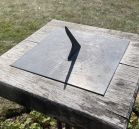 known,
are recorded in the National Register and have been shown here.
There is however a fourth less well known dial. It is an
horizontal dial constructed in bronze by Royal Engineers from The
Royal School of Military Engineering and presented to HM The late
Queen, as their Colonel in Chief, on the occasion of their
Tercentenary, 13th October 2016. It is delineated to show solar
time from 4am to 8pm in half and quarter hours. The design does
not specifically accommodate the thickness of the gnomon. It is
mounted on a pedestal of rods and a wooden surbase on the side of
which is the Royal Engineers' Crest. Click on the image here
or HERE to see
four close ups. known,
are recorded in the National Register and have been shown here.
There is however a fourth less well known dial. It is an
horizontal dial constructed in bronze by Royal Engineers from The
Royal School of Military Engineering and presented to HM The late
Queen, as their Colonel in Chief, on the occasion of their
Tercentenary, 13th October 2016. It is delineated to show solar
time from 4am to 8pm in half and quarter hours. The design does
not specifically accommodate the thickness of the gnomon. It is
mounted on a pedestal of rods and a wooden surbase on the side of
which is the Royal Engineers' Crest. Click on the image here
or HERE to see
four close ups.
03.10.2022 |
The Frogmore Vertical Dial
There is an interesting vertical dial to be seen on
 the
left tower of the stables of Frogmore House. This impressive
building has two towers one on either side of the entrance to the
stables. On the left tower is the blue and gold-background
sundial, on the right is a conventional clock. Both are surmounted
by windvanes. The dial shows quarters, half and eighth hours with
sometimes misplaced dots attempting to mark the half hours. The
dial's most recent repainting shows some inevitable 'creep'
associated with this repaint and the current gnomon is rather too
narrow and looks like a replacement. Click on the image here
or HERE
to see a recalculated version. the
left tower of the stables of Frogmore House. This impressive
building has two towers one on either side of the entrance to the
stables. On the left tower is the blue and gold-background
sundial, on the right is a conventional clock. Both are surmounted
by windvanes. The dial shows quarters, half and eighth hours with
sometimes misplaced dots attempting to mark the half hours. The
dial's most recent repainting shows some inevitable 'creep'
associated with this repaint and the current gnomon is rather too
narrow and looks like a replacement. Click on the image here
or HERE
to see a recalculated version.
01.10.22 |
The Second Frogmore Park Dial
A dial of
significant quality in Frogmore Park, though sadly
unsigned.
This 16 ins diameter bronze dial displays solar time from 4am to
8pm in half and
 quarter hours, further subdivided into 5 min
intervals. The thickness of the gnomon is allowed for and
decorative aspects include an eight point compass and the figure
of Father Time with scythe. The motto is ‘In this garden fair
amidst your flowers, serene I stand and show your sunny hours.’
Mounted on a pleasant baluster pedestal having acanthus-leaf
decoration, all surmounted by an octagonal surbase. A conventional but
attractive gnomon casts the shadow. It is recorded in the National
Register as SRN 7246. Unfortunately the dialplate is secured to the pedestal
with rusting fixings. Impressive nonetheless. Click on the image
or HERE for
some extra images. quarter hours, further subdivided into 5 min
intervals. The thickness of the gnomon is allowed for and
decorative aspects include an eight point compass and the figure
of Father Time with scythe. The motto is ‘In this garden fair
amidst your flowers, serene I stand and show your sunny hours.’
Mounted on a pleasant baluster pedestal having acanthus-leaf
decoration, all surmounted by an octagonal surbase. A conventional but
attractive gnomon casts the shadow. It is recorded in the National
Register as SRN 7246. Unfortunately the dialplate is secured to the pedestal
with rusting fixings. Impressive nonetheless. Click on the image
or HERE for
some extra images.
27.09.2022 |
The Francis West Dial at Frogmore Park
Francis West
(1789–1867) was a well- regarded
maker of sundials, microscopes and other optical instruments. He
and his sons operated from several locations throughout London, on occasions
even operating two or more shops simultaneously. He was variously
reported to sell from 39 Southampton Street, 31 Cockspur Street,
41 Strand and 83, 92 and 93 Fleet Street. His sons inherited his
business. One of his important dials is now erected in the grounds
of Frogmore House, Windsor having been moved less than 20 miles
from its original location at Claremont House. Claremont, also
known historically as 'Clermont', is an 18th-century Palladian
mansion less than a mile south of the centre of Esher in Surrey,
England. regarded
maker of sundials, microscopes and other optical instruments. He
and his sons operated from several locations throughout London, on occasions
even operating two or more shops simultaneously. He was variously
reported to sell from 39 Southampton Street, 31 Cockspur Street,
41 Strand and 83, 92 and 93 Fleet Street. His sons inherited his
business. One of his important dials is now erected in the grounds
of Frogmore House, Windsor having been moved less than 20 miles
from its original location at Claremont House. Claremont, also
known historically as 'Clermont', is an 18th-century Palladian
mansion less than a mile south of the centre of Esher in Surrey,
England.
In 1922 much of the Claremont estate was
sold for housing development, leaving just the house and
surrounding 210 acres of garden. Most buildings were demolished,
but the house became a school in 1930. The 20 in dia sundial at
Claremont
was rescued in 1931, by HM Queen Mary and erected in the grounds
of Frogmore House where it remains. The decorative gnomon bears
the arms of Leopold of Saxe-Coburg, King of the Belgians. There is
a 32-point compass rose and an Equation of Time ring. 32
cities/locations are marked around the chapter ring showing times
of noon in those places. The dial is mounted on a fluted baluster
style pedestal. A brass plate on the side of the top support stone
reads:
‘Sundial erected at Claremont by HRH
Prince Leopold of Saxe-Coburg Saalfield KG after his election in
1831 as first King of the Belgians. Purchased in 1931 by HM Queen
Mary and erected in the grounds of Frogmore House.’
Click on the thumbnail or
HERE
for a few images of this interesting dial
The dial is
recorded in the National Register as SRN 7247.
22.09.22 |
The Top Ten London Sundials?
Way back in 2014, the website 'Footprints of
 London'
published its selection of the top ten sundials in
London as voted by different people. There are lots of
sundials to see in London, some new and some very old and this
selection only scrapes the surface. You may like to see which ones
were chosen. Click the image or
HERE to see more. London'
published its selection of the top ten sundials in
London as voted by different people. There are lots of
sundials to see in London, some new and some very old and this
selection only scrapes the surface. You may like to see which ones
were chosen. Click the image or
HERE to see more.
Why not send your own
list of the top Ten Sundials of London to the Web Master at this
link webmaster@ppowers.com
15.09.2022 |
The Lancaster Sundial
The Lancaster Sundial can be found in Williamson Park
 in
Lancaster on the top of the hill near the Ashton Memorial. This
was previously the site of the city's bandstand, built in 1907,
but is now transformed into an analemmatic Millennium sundial,
where the shadow-casting object is the observer who stands with
heels on the line showing the current date. The shadow indicates the time by its
position across one of the bronze plaques that mark the daylight
hours; each one represents a trade or profession in the area. The
plaques were designed by pupils of Ripley St. Thomas School and
cast by artist Ray Schofield of Sunderland Point. Diallist Peter
Ransom MBE was responsible for its delineation and design.
The time indicated is that of British Summer Time, adjusted for
longitude. A separate True North marker is included. Corrections for the Equation of Time are indicated for
the first of each month and (separately) by a graph. The
dial shows
the time from 6.00 am to 8.00 pm in hours. Click on the image or
HERE to see
six images of the dial and its design. Each can be further
enlarged by clicking on them. in
Lancaster on the top of the hill near the Ashton Memorial. This
was previously the site of the city's bandstand, built in 1907,
but is now transformed into an analemmatic Millennium sundial,
where the shadow-casting object is the observer who stands with
heels on the line showing the current date. The shadow indicates the time by its
position across one of the bronze plaques that mark the daylight
hours; each one represents a trade or profession in the area. The
plaques were designed by pupils of Ripley St. Thomas School and
cast by artist Ray Schofield of Sunderland Point. Diallist Peter
Ransom MBE was responsible for its delineation and design.
The time indicated is that of British Summer Time, adjusted for
longitude. A separate True North marker is included. Corrections for the Equation of Time are indicated for
the first of each month and (separately) by a graph. The
dial shows
the time from 6.00 am to 8.00 pm in hours. Click on the image or
HERE to see
six images of the dial and its design. Each can be further
enlarged by clicking on them.
12.09.2022 Images
© The Drs Thomson, 2022 |
The Two Dials at Levens Hall
The pedestal dial at Levens Hall in Cumbria has
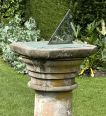 been
known as SRN 0694 for some years but it was moved in 1991 slightly
so as to be in the open. The maker is sadly unknown but the dial
is well delineated and placed on a cylindrical sandstone pedestal
1220mm high with a square capital and plinth. been
known as SRN 0694 for some years but it was moved in 1991 slightly
so as to be in the open. The maker is sadly unknown but the dial
is well delineated and placed on a cylindrical sandstone pedestal
1220mm high with a square capital and plinth.
Recently a
second - vertical - dial has been 'uncovered' at Levens Hall -
rather to the NNE of the horizontal one and seriously concealed
behind vegetation.
The dial is almost a vertical direct
South dial but it appears perhaps to decline very slightly.
A fascinating discovery!
Click on the image or
HERE to see more of these
two dials. The images can be expanded by clicking on them.
04.09.2022 mage
© Copyright Dr VL Thomson 2022 |
Sundial Barapullah Park near Sarai Kale Khan, Dehli, India.
The
 Jantar
Mantar is not the only huge sundial that India has. There’s also a
tall, colourful sundial in the middle of the park at Barapullah
near Sarai Kale Khan, Dehli. It was installed in 2013 and is
possibly one of those few monuments in Delhi that get overlooked.
Its location is also a nice place for all those who wish to spend
some quiet moments with friends. Jantar
Mantar is not the only huge sundial that India has. There’s also a
tall, colourful sundial in the middle of the park at Barapullah
near Sarai Kale Khan, Dehli. It was installed in 2013 and is
possibly one of those few monuments in Delhi that get overlooked.
Its location is also a nice place for all those who wish to spend
some quiet moments with friends.
Hardly anyone goes here so
you can spend hours! And the best part? It’s so close to
Nizamuddin and Lajpat Nagar so there's planty of food nearby! It
is at Lat: 28.58290N Long: 77.26567E and is some 36m in
diameter(118ft)!! Visit our composite image
HERE or just click
on the thumbnail.
16.08.2022 |
Clocktime Solartime
Convertor
Michael J Harvey's website is devoted to the
 dials
of the Island of Ireland and it presents a most comprehensive
summary of the dials of both Northern and Southern Ireland.
It is well worth a look and SunInfo
will, with Michael's permission, shortly be showing a few of these
fascinating Irish sundials. On that site and courtesy also of Anselmo
Pérez Serra, he shows a very useful convertor which allows anyone
examining a dial in the field and holding a smartphone and knowing
one's Lat/Long, to see the
current solartime for current clock time. dials
of the Island of Ireland and it presents a most comprehensive
summary of the dials of both Northern and Southern Ireland.
It is well worth a look and SunInfo
will, with Michael's permission, shortly be showing a few of these
fascinating Irish sundials. On that site and courtesy also of Anselmo
Pérez Serra, he shows a very useful convertor which allows anyone
examining a dial in the field and holding a smartphone and knowing
one's Lat/Long, to see the
current solartime for current clock time.
Scan or click the QR
code shown here or
click this link to go to this very convenient
converter.
06.01.22
© Copyright Michael J Harvey/ Anselmo Pérez Serra and
used with permission |
BSS's First Chairman
- Andrew Somerville
This entry includes a link to the
 obituary
of Andrew Somerville, first Chairman of the British Sundial
Society. obituary
of Andrew Somerville, first Chairman of the British Sundial
Society.
It is to be found as the first article of the June
1990 edition of the Society's Bulletin which also (courtesy of
BSS) includes a number of other interesting articles too.
Click
HERE to read the PDF of this historic BSS edition as
it is on their website..
26.08.21 [
[EU C-466/12
retained and as amended] |
Remember an entry that used to be here?
Go to our latest page Archive Page 2 We place
many older stories from the SunInfo
page there after they have been removed from the main page to make room for more
recent news. So, if you want to look for something you once saw on
SunInfo which is not there now, here's the place to look. Entries
are frequently dated with their original dates of insertion/amendment on the
SunInfo page and they are placed here in order of their removal
from the
SunInfo web page. But why not browse the Archive
anyway? There's a lot there.
|
 Remember an entry that used to be
on this page?
Go to our
Archive Page1
for stuff we archived during 2015 - 2017 or
to our latest page
Archive Page 2 for stuff archived 2018
onwards. We place many of the older stories from the SunInfo
page there after they have been removed from the main page to make room for more
recent news. So, if you want to look for something you once saw on
SunInfo which is not there now, here are the places to look. Entries
are frequently dated with their original dates of insertion/amendment on the
SunInfo page and they are placed here in order of their
removal
from the
SunInfo web page. But why not browse the Archive
anyway? There's nine or so years' worth of entries there.. Enjoy your browsing. Remember an entry that used to be
on this page?
Go to our
Archive Page1
for stuff we archived during 2015 - 2017 or
to our latest page
Archive Page 2 for stuff archived 2018
onwards. We place many of the older stories from the SunInfo
page there after they have been removed from the main page to make room for more
recent news. So, if you want to look for something you once saw on
SunInfo which is not there now, here are the places to look. Entries
are frequently dated with their original dates of insertion/amendment on the
SunInfo page and they are placed here in order of their
removal
from the
SunInfo web page. But why not browse the Archive
anyway? There's nine or so years' worth of entries there.. Enjoy your browsing.
05.12.21, 01.01.2023, 02.01.2024 |
 Sundial Conferences held in 2024.
Sundial Conferences held in 2024.
1. The North American Sundial Society
(NASS) held its 2024 conference in Vancouver, British
Columbia, Canada from Thursday June 20th to Sunday June
23rd. The conference was held at the Fairmont Hotel
Vancouver, 900 West Georgia Street, Vancouver BC. The conference
started on the Thursday afternoon with a traditional reception and
sundial door prizes. Friday will be a tour of local sundials with
a visit to the Simon Fraser University where NASS helped sponsor
the creation of an analemmatic sundial. Go
HERE for details.
2.
The British Sundial Society advertised its 2024 meeting
on the web in February 2024. It was held 12-14
April 2024 at the "Delta Hotel by Marriott", Lynch Wood,
Peterborough, PE2 6GB which is located adjacent to the East of
England events centre, some 6 miles from the city centre. In line
with Charity Law, the
conference was open to all and at the same rates as those for, non-members of
the Society. Both single and double occupancy conference
prices were set under £400 and the day delegate package was £127.
The details, can be seen
HERE as a printable PDF.
29.02.2024, 12.04.2024. 14.04.2024 |
 BSS
2023 Accounts - yet another loss. Dec
2023
again showed an
increased loss. During the
year BSS gained 7 new members, but 18 have left. Some
interesting news : Bromley House, which houses the
Society's book Collection is in the process of digitising all its
own books and it might include the BSS collection. This would enable
BSS members to have ready access from anywhere in the world. We
shall modify this entry to record any progress or otherwise. BSS
2023 Accounts - yet another loss. Dec
2023
again showed an
increased loss. During the
year BSS gained 7 new members, but 18 have left. Some
interesting news : Bromley House, which houses the
Society's book Collection is in the process of digitising all its
own books and it might include the BSS collection. This would enable
BSS members to have ready access from anywhere in the world. We
shall modify this entry to record any progress or otherwise.
The
Society continues to run at a modest loss although one that can
still be supported by assets.
Nonetheless losses have been near continuous recently.
Click on the thumbnail image here to see a larger image showing
recent financial performance.. Click
HERE
to read the Society's report to the Commission.
29.04.2024 |
BSS 2022 Accounts - yet another increased loss and a serious omission
too
 The
latest BSS Accounts (those for the FY year 2022) have just been
published by the Charity Commission. They show yet another small
but nevertheless an increasing loss. Indeed,
BSS has not reported a profit for
five years now as may be seen by clicking on the image or
HERE. Moreover, it
seems that despite such regular small losses the Society still
persists in spending around £700 on unnecessarily 'audited'
accounts.
The Trustees' report for 2022 rightly includes mention - with
sadness - of the death of its librarian during the year, but
extraordinarily and it has to be said, appallingly, it fails to
mention the death of the Charity's President and most eminent UK
diallist Christopher JH Daniel MBE in May of the same FY of 2022.
Fifteen months later (August 2023) an apology, correction and addendum are
STILL expected by many
of the
society's membership. What is going on? SunInfo marks the
anniversary of Christopher's death on
this page. Suninfo's own obituary of
Christopher is HERE The
latest BSS Accounts (those for the FY year 2022) have just been
published by the Charity Commission. They show yet another small
but nevertheless an increasing loss. Indeed,
BSS has not reported a profit for
five years now as may be seen by clicking on the image or
HERE. Moreover, it
seems that despite such regular small losses the Society still
persists in spending around £700 on unnecessarily 'audited'
accounts.
The Trustees' report for 2022 rightly includes mention - with
sadness - of the death of its librarian during the year, but
extraordinarily and it has to be said, appallingly, it fails to
mention the death of the Charity's President and most eminent UK
diallist Christopher JH Daniel MBE in May of the same FY of 2022.
Fifteen months later (August 2023) an apology, correction and addendum are
STILL expected by many
of the
society's membership. What is going on? SunInfo marks the
anniversary of Christopher's death on
this page. Suninfo's own obituary of
Christopher is HERE
11.05.2023 |
The BSS Dial Tour of 2010
The BSS Conference
 visited
Exeter
again in
2023
- see the announcement below. It
visited Exeter back in 2010 too and for the website a collection
of clips (some from cameras with low-ish resolution in those
days!) of visited dials was put together by the conference
organiser. It shows just a few of the many local dials in
the area. Click on the image or
Here
to see both the people and the dials we saw on that highly popular
two-bus tour. BSS had a large
membership then. How many Diallists of that time do you recognise? visited
Exeter
again in
2023
- see the announcement below. It
visited Exeter back in 2010 too and for the website a collection
of clips (some from cameras with low-ish resolution in those
days!) of visited dials was put together by the conference
organiser. It shows just a few of the many local dials in
the area. Click on the image or
Here
to see both the people and the dials we saw on that highly popular
two-bus tour. BSS had a large
membership then. How many Diallists of that time do you recognise?
03.04.2023
© Patrick Powers 2010-2023 |
 BSS Reports its Secretary's Resignation
Unexpectedly, in May 2022 it was reported that the Secretary of
the British Sundial Society, Mr Christopher H.K. Williams had
resigned. No reason has been given and no replacement has since
been appointed even by late 2024. ! Later information from the Charity Commission
indicates that Williams has also resigned from his position as a
Society Trustee.
BSS Reports its Secretary's Resignation
Unexpectedly, in May 2022 it was reported that the Secretary of
the British Sundial Society, Mr Christopher H.K. Williams had
resigned. No reason has been given and no replacement has since
been appointed even by late 2024. ! Later information from the Charity Commission
indicates that Williams has also resigned from his position as a
Society Trustee.
07.09.2022, Mar 2023 |
Measuring Dial
Declination in Google Maps
Visitors to this site who might be interested to measure the solar
declination of a building via Google Maps or Google Earth may have
been dismayed by last year's temporary removal of bearing information from
these two useful resources. A solution to this was to be
had by choosing to 'measure' an arbitrary line along the side of
the property on which a dial is to be placed or assessed and using a
right click to establish the Lat/Long of each of these two ends of
this line. Then enter these pairs of Lat Longs into:
http://www.movable-type.co.uk/scripts/latlong.html to obtain
the haversine values by which to display the great-circle distance
and bearing between the two points - the programme accepts decimal
coordinates as well as degs/mins/secs.
NB As of
04.08.2022 the bearing facility appears to have been restored at least for
Google Earth Pro.
24.06.2022 |
The Dial at Milton's
Cottage
Milton’s Cottage, in
 Chalfont
St Giles, is the only surviving home of the poet and
parliamentarian John Milton – and the place where he completed his
epic masterpiece, Paradise Lost and its sequel, Paradise Regained. Chalfont
St Giles, is the only surviving home of the poet and
parliamentarian John Milton – and the place where he completed his
epic masterpiece, Paradise Lost and its sequel, Paradise Regained.
It was built in the late 16th century, most probably for the
estate manager of The Vache – once owned by one of the Regicides
of Charles I.
Fleeing the outbreak of the bubonic plague in
London, Milton came to Chalfont St. Giles with his wife and
daughters in 1665, where a house had been secured for them by a
friend and pupil, Thomas Ellwood. Milton only lived there for less
than 2 years. The dial is a modern garden dial of the type having
a 'knuckle duster' gnomon. Click on the image or
HERE for some views
of this not very inspiring dial.
29.09.21
Images©
VL Thomson, 2021 |
Riegler's Novel
Sundial
In 2003 Werner Riegler
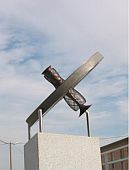 published
his recent presentation entitled A Novel Sundial with
Double Indicator and Calendar. This novel dial solves the
"sundial problem", it shows the time to the minute and the date to published
his recent presentation entitled A Novel Sundial with
Double Indicator and Calendar. This novel dial solves the
"sundial problem", it shows the time to the minute and the date to
the day over the whole year without intervention.in addition the
dial is universal. It can be placed at any point on earth where it
will show the time from sunrise to sunset.
Click
HERE to view a PDF of the slide show.
27.05.21 |
The Mystery of the Missing Dial
A 19thC pedestal
 base
is to be found at the Alton Towers playpark gardens in
Staffordshire which are classed as Grade I on the HBMC Gardens
Register. base
is to be found at the Alton Towers playpark gardens in
Staffordshire which are classed as Grade I on the HBMC Gardens
Register.
The register entry specifically mentions a
sundial but sadly it is no longer present. The listing entry
is 1037875. So the mystery is where has it gone? Its removal would
have needed listed-building consent.
Click
HERE or on the
image for a larger picture.
26.09.21
Images©
VL Thomson, 2021 |
The Moot Hall Dial
In Aldeburgh in Suffolk, now very
 close
to the sea, stands the lovely
Moot Hall which today houses the Aldeburgh Museum. It
is a superb timber-framed 17C building, erected by the Burgesses
of Aldeburgh at a time of great prosperity as a manifestation of
civic pride. Today it is still treasured by the people of
Aldeburgh as the centre of their community and a symbol of their
heritage. The dial
declines about 14.4 degs W and shows a little 'restoration drift'
as may be seen from a
comparison with a recalculated image of the hour
lines. Please do explore the links given here to appreciate this
lovely Hall and its dial. close
to the sea, stands the lovely
Moot Hall which today houses the Aldeburgh Museum. It
is a superb timber-framed 17C building, erected by the Burgesses
of Aldeburgh at a time of great prosperity as a manifestation of
civic pride. Today it is still treasured by the people of
Aldeburgh as the centre of their community and a symbol of their
heritage. The dial
declines about 14.4 degs W and shows a little 'restoration drift'
as may be seen from a
comparison with a recalculated image of the hour
lines. Please do explore the links given here to appreciate this
lovely Hall and its dial.
26.05.21
Image
© VL Thomson 2021 |
 A Modern Dial in
Thorpeness
In 2007 a dial was
A Modern Dial in
Thorpeness
In 2007 a dial was
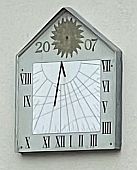 erected
in the Benthills area of Thorpeness, a town near the coast in
Suffolk. It is a West declining dial with four declination lines
and it is elegantly designed, presented and maintained and was
delineated by John Morgan Hughes from Norwich, a member of BSS. erected
in the Benthills area of Thorpeness, a town near the coast in
Suffolk. It is a West declining dial with four declination lines
and it is elegantly designed, presented and maintained and was
delineated by John Morgan Hughes from Norwich, a member of BSS.
Click
HERE or on the
thumbnail for a larger image of the dial. Click
HERE to see a
comparison of the dial with a calculated version based on the
Lat/Long and three of the Dial's Declinations. The details of the
nodus are not known so positioning details of the declination
lines are necessarily approximate. Note that there is an
anniversary date line included which the owner has advised relates
to his wedding anniversary.. An excellent modern dial.
29.05.21
28.11.2022
Image
© VL Thomson 2021. Details courtesy and © P. Dawes |
The Dial at Bosworth
Field
After the remarkable
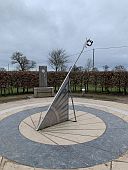 discovery
of the remains of King Richard III a sundial was designed to mark
the event, his life and legacy. In August 1485 King Richard
III was killed at the Battle of Bosworth, and buried by the Grey
Friars, a Franciscan Holy order, in their friary church. In August
2012, Leicester City Council, the University of Leicester, and the
Richard III Society began a search underneath a car park in
Leicester, to find King Richard III’s remains and the Grey Friars
Church. This coincided with the 527th anniversary of the date King
Richard III was killed at the Battle of Bosworth. discovery
of the remains of King Richard III a sundial was designed to mark
the event, his life and legacy. In August 1485 King Richard
III was killed at the Battle of Bosworth, and buried by the Grey
Friars, a Franciscan Holy order, in their friary church. In August
2012, Leicester City Council, the University of Leicester, and the
Richard III Society began a search underneath a car park in
Leicester, to find King Richard III’s remains and the Grey Friars
Church. This coincided with the 527th anniversary of the date King
Richard III was killed at the Battle of Bosworth.
Five months
after the dig began, the University of Leicester confirmed a
skeleton unearthed by archaeologists was in fact Richard III.
Later a sundial was commissioned. It has a central gnomon topped
with a crown. At ground level is an inscription which tells the
story of the Battle of Bosworth derived from the chronicle of
Polydore Vergil, an Italian at the court of Henry VII. The sundial
marks the points of the compass and the distances to other
battlefields of the Wars of the Roses. Around the outer dial are
three thrones bearing the names of Richard III, Henry Tudor, Earl
of Richmond and Thomas, Lord Stanley. Click the image or
here
for a larger version.
21.03.21 |
Is there a Trifilar
Sundial?
A query was raised
 recently
on the sundial mail list as to whether or not a Trifliar Sundial
was possible. It turns out that it exists! Bernard Rouxel of
France designed it.and got him second prize in the Italian "Le
ombre del Tempo” contest of 2008. It is here limited to showing true
Noon and the date. Read Fer's article by clicking on the
image to download the PDF of it courtesy of the Dutch Sundial
Society and Frans Maes. recently
on the sundial mail list as to whether or not a Trifliar Sundial
was possible. It turns out that it exists! Bernard Rouxel of
France designed it.and got him second prize in the Italian "Le
ombre del Tempo” contest of 2008. It is here limited to showing true
Noon and the date. Read Fer's article by clicking on the
image to download the PDF of it courtesy of the Dutch Sundial
Society and Frans Maes.
Luigi Ghia recently posted to the sundial mail list a link to a
computer animation
showing Rouxel's trifilar dial in operation.
This animation
was made by him with help from Tonino Tasselli and it has been
computed for the summer solstice.
On the sundial plane the
shadows of the three wires crossing each other, form a moving
triangle. The triangle becomes smaller and smaller until it
collapses into a point exactly at noon.
The point where the
triangles collapse during the year migrates up and down along the
green lines in the animation so this line is the meridian line and
it may easily be annotated with dates or zodiac symbols.
A
different arrangement of the three wires (for example with a
rotation of the whole wire system about the polar axis) sets the
triple crossing point at different points along the hour lines
other than noon.
05.09.20, 07.10.20 |
Revisiting a Triple
Horizontal Dial
Not to be
 outdone
by the trifilar dial design above it seems appropriate to revisit
John Davis's remarkable and ingenious Triple Horizontal Dial made
some time ago for a client in Redwood Valley USA. It comprises a
double horizontal design rather after Henry Wynne but adapted for
the more southerly latitude by moving the second scale Northwards.
The centre of the dial revealed by this process then is used to
display Pacific Solar Time where a nodus allows five family
anniversaries to be displayed. outdone
by the trifilar dial design above it seems appropriate to revisit
John Davis's remarkable and ingenious Triple Horizontal Dial made
some time ago for a client in Redwood Valley USA. It comprises a
double horizontal design rather after Henry Wynne but adapted for
the more southerly latitude by moving the second scale Northwards.
The centre of the dial revealed by this process then is used to
display Pacific Solar Time where a nodus allows five family
anniversaries to be displayed.
Download John's article from his website here
13.09.20
[
EU C-466/12] |
BSS's Virtual Conference 2021:
The British Sundial Society’s Annual Conference was to have
been held
between 16-18 April 2021 in Exeter. There had been no conference
held in 2020 owing to the Covid-19 pandemic and the 2021
conference had also to be cancelled for the same reason.
However in 2021 there was held an abbreviated VIRTUAL
conference online in April. The event was about 90
minutes in length; it was hosted by Frank King and featured an all North American
'cast', Roger Bailey, Fred
Sawyer, and Woody Sullivan.
This BSS Zoom event was held on 17 April 2021.
All
were welcome - at no charge. But you did have to REGISTER in advance.
16.02.21, 08.08.21 |
Marking A Meridian Anniversary!
On 22 October 1884 the
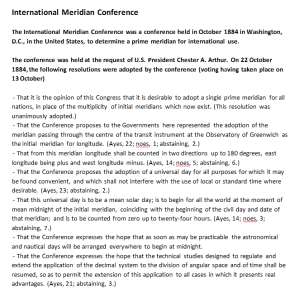 Greenwich
Meridian located at the Royal Observatory was selected to be the common
zero of longitude & standard of time reckoning worldwide. Click on
the image for the decision details. Greenwich
Meridian located at the Royal Observatory was selected to be the common
zero of longitude & standard of time reckoning worldwide. Click on
the image for the decision details.22.10.18, 03.11.18 |
The Pittsburgh Blog!
Fred Sawyer, President of NASS
 recently
alerted the Sundial Mail List to the fact that Glenn Walsh, the author of
the American Space Watch Tower Blog, was at the NASS Conference 2018 throughout
most of the sessions and he later contributed an article on his blog which
summarises the recent meeting quite well. recently
alerted the Sundial Mail List to the fact that Glenn Walsh, the author of
the American Space Watch Tower Blog, was at the NASS Conference 2018 throughout
most of the sessions and he later contributed an article on his blog which
summarises the recent meeting quite well.
Take a look here at what Glenn wrote.
24.08.18 |
The Jantar Mantar monument in
Jaipur in Rajasthan, India is a
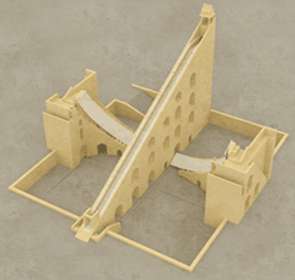 collection
of nineteen architectural astronomical instruments built by the Rajput king
Sawai Jai Singh II, and completed in 1734. collection
of nineteen architectural astronomical instruments built by the Rajput king
Sawai Jai Singh II, and completed in 1734.
The instruments allow the observation of astronomical positions with the
naked eye. The monument expresses architectural innovations, as well as the
coming together of ideas from different religious and social beliefs in
18th-century India.
Visit this site to find out more about many of the instruments
26.09.18 |
The 'Dials' of Konark.
There is a 13th-century sun temple
 at
Konark near Odisha, India which is attributed to King Narasimhadeva I of the
Eastern Ganga Dynasty of about 1250 AD. Dedicated to the Hindu sun god Surya,
what remains of the temple complex is a 100-foot high chariot with 24 immense
wheels drawn by horses, all carved from stone and quite accurately aligned E-W.
Once over 200 feet high, much of the temple is now in ruins. The structures and
elements that have survived are famed for their intricate artwork, iconography,
and various themes. at
Konark near Odisha, India which is attributed to King Narasimhadeva I of the
Eastern Ganga Dynasty of about 1250 AD. Dedicated to the Hindu sun god Surya,
what remains of the temple complex is a 100-foot high chariot with 24 immense
wheels drawn by horses, all carved from stone and quite accurately aligned E-W.
Once over 200 feet high, much of the temple is now in ruins. The structures and
elements that have survived are famed for their intricate artwork, iconography,
and various themes.
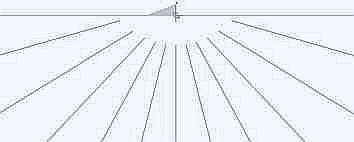 The
wheels, spokes and other divisions of the wheels are arranged in a form and
number similar to modern time keeping and consequently they invite use as
sundials. A simple calculation of the angles of the spokes between 6am to
6pm on the South wheels shows why. Click on the images for more! The
wheels, spokes and other divisions of the wheels are arranged in a form and
number similar to modern time keeping and consequently they invite use as
sundials. A simple calculation of the angles of the spokes between 6am to
6pm on the South wheels shows why. Click on the images for more!
18.07.18 |
The Nazeing Church Sundial
- a restoration project
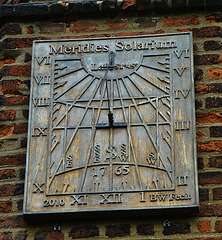 by
Barrie Winter and reported here by Ian Butson. by
Barrie Winter and reported here by Ian Butson.
It was in 2009 that funds became available to
restore/replace the relief - carved wooden sundial on Nazeing Church
near Harlow in Essex. Read about this remarkable 2010 project
reported at this link
HERE in 2014
20.06.18
[©BSS/EU
C-466/12] |
Lower income and higher costs at BSS!! The 2017
Report & Annual Accounts for the British Sundial Society have
recently been published and may be examined at the Charity Commission Website or
here
courtesy of the CC. Compared to the
position in 2016, they show a reduction
of overall income in the year of £3,258 and at the same time an increase in
expenditure of £2,053. As a result, only £2,192 was added to Total Society funds
in the year. Fees for independent examination of the accounts and (new for this
year) for professional preparation of the claim for gift aid, have this year
soared by 127%. Indeed, something approaching 8% of all membership fees
currently appears to be being spent on such bought-in professional services.
Comment received from a
SunInfo reader:
"I am at a loss to understand how they justify spending on professional
services" |
08.03.18. E.&O.E. |
|
 Unusual Dial in
Grantham
We were first made Unusual Dial in
Grantham
We were first made
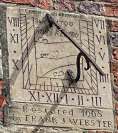 aware
of this interesting dial in 2017. It is in the one-time 'Clockmakers
District' of Grantham at the junction of Welby Street and Westgate. It was
delineated by Charles Westwood in 1790 as a west declining dial that would
also show the equinoxes and solstices. It has only relatively recently
been recorded in the National Sundial Register where its reference is SRN
6705. Unusually for such an old dial it still retains its original pin
nodus. aware
of this interesting dial in 2017. It is in the one-time 'Clockmakers
District' of Grantham at the junction of Welby Street and Westgate. It was
delineated by Charles Westwood in 1790 as a west declining dial that would
also show the equinoxes and solstices. It has only relatively recently
been recorded in the National Sundial Register where its reference is SRN
6705. Unusually for such an old dial it still retains its original pin
nodus.
If you can contribute to this description do contact the webmaster.
19.06.17, 09.07.17, 09.06.2018
|
|
SunInfo's
2018 "Dial Time"
Newsletter
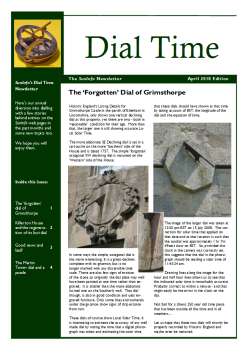 SunInfo
was once again delighted to publish its
FREE Spring Newsletter
to accompany the 2018 Conference Season. SunInfo
was once again delighted to publish its
FREE Spring Newsletter
to accompany the 2018 Conference Season.
Here you can find a few stories taken from the
SunInfo web pages in the past months, some new topics and some
updates on older stories too.
In the usual PDF format, this four page Newsletter contains news and
items of interest to any diallist.
Download it free HERE.or
read it on Ussuu
Here
(use Ussuu's full screen mode to read it)
16.04.17
|
|
SunInfo's
2017 "Dial Time"
Newsletter
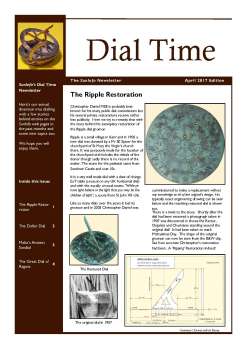 Once
again SunInfo was delighted to publish its
FREE Spring Newsletter
to accompany the 2017 Conference Season. Once
again SunInfo was delighted to publish its
FREE Spring Newsletter
to accompany the 2017 Conference Season.
Here you can find a few stories taken from the
SunInfo web pages in the past months, some new topics and some
updates on older stories too.
In PDF format, this four page Newsletter contains news and items of
interest to any diallist. For a little more about the
Ripple Restoration that is mentioned on page 1, click
here
Download
it free HERE.or
read it on Ussuu
here
10.04.17
|
|
SunInfo's
2016 "Dial Time"
Newsletter
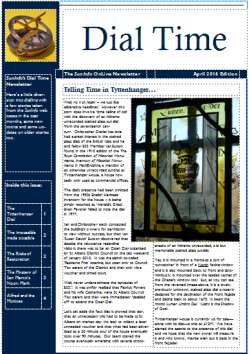 Once
again SunInfo was delighted to publish its FREE Spring
Newsletter to accompany the 2016 Conference Season. Here
you can find a few stories taken from the
SunInfo web pages in the past months, some new topics and some
updates on older stories too. Once
again SunInfo was delighted to publish its FREE Spring
Newsletter to accompany the 2016 Conference Season. Here
you can find a few stories taken from the
SunInfo web pages in the past months, some new topics and some
updates on older stories too.
In PDF format, this four page Newsletter contains news and items of
interest to any diallist.
Download it free
HERE.
Read it in 'Ussuu' HERE
28.03.16, 12.01.17
|
|
SunInfo's 2015 "Dial Time" Newsletter
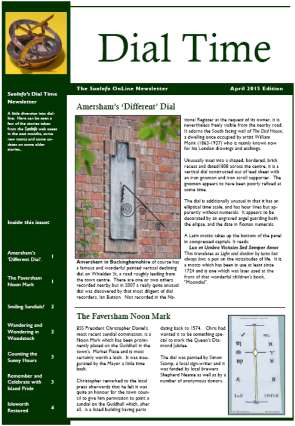
SunInfo's first FREE Spring Newsletter was published to
accompany the 2015 Conference Season. In PDF format the four page
Newsletter contained news and details of interest to any diallist.
View or Download it HERE.
06.04.15 |
|
|
|
STOLEN! Do you suspect
that a dial known to you might have been stolen? Sadly many dials have been
over the years. A few recent thefts are mentioned in the boxes below.
The BSS has a list of stolen dials (sadly over a decade out of date - not updated since Feb 2010) which is
accessible
here. There are some 44 dials listed. If when you can get to
see them and you recognise any, do let the
BSS Registrar know. |
|
2014
STOLEN!
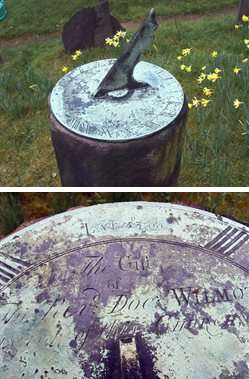 Thieves
stole a sundial from a plinth in a Morley churchyard, where it had
stood for 250 years. Thieves
stole a sundial from a plinth in a Morley churchyard, where it had
stood for 250 years.
The dial had been made by clockmaker and scientist John Whitehurst
and had been in the grounds of St Matthew's Church, in Church Lane,
Morley.
The instrument, which was made from bronze, was reported stolen on
Sunday, February 23 2014 and had last been seen at the start of
January. Please inform the webmaster if you have seen this dial.
|
|
2014
STOLEN!
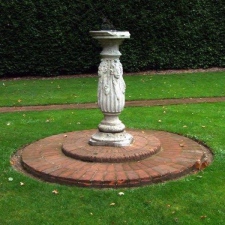 Thieves
in Blickling Hall's secret garden lifted and made off with the
sundial and pedestal which is of carved Portland stone and stands
113 cms high. Thieves
in Blickling Hall's secret garden lifted and made off with the
sundial and pedestal which is of carved Portland stone and stands
113 cms high.
Jo Bosch, Blickling’s marketing and visitor manager, said the bronze
sundial a replacement for an earlier dated from the late 18th or
early 19th century, had a metal plate on it which said “Brookbrae
Ltd, London”.
The theft happened between 10am on February 6 and 10.15am on
February 7 2014.Please
inform the webmaster if you have seen this dial or its pedestal. |
|
|
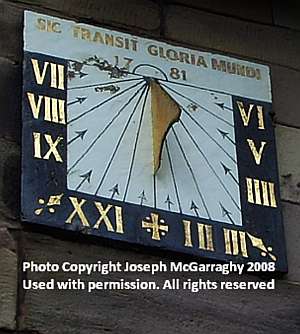 STOLEN!
An historic vertical sundial
(National Register No SRN 2136 - click on image) has been stolen from St
Mary's Church in Prestwich, Manchester. The dial is dated 1781 and is a
vertical direct south dial which carries the motto "Sic Transit Gloria
Mundi". There is some confusion as to the material of the dial; it may be
stone or iron. Anyone with further information should contact the police,
the Vicar
(bryan.hackett@btinternet.com)
and send a copy to
webmaster@ppowers.com. Another
(B&W) image
►here STOLEN!
An historic vertical sundial
(National Register No SRN 2136 - click on image) has been stolen from St
Mary's Church in Prestwich, Manchester. The dial is dated 1781 and is a
vertical direct south dial which carries the motto "Sic Transit Gloria
Mundi". There is some confusion as to the material of the dial; it may be
stone or iron. Anyone with further information should contact the police,
the Vicar
(bryan.hackett@btinternet.com)
and send a copy to
webmaster@ppowers.com. Another
(B&W) image
►here |
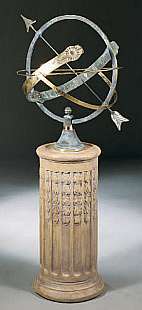 2014
STOLEN!
Police are appealing for help in tracing a valuable
sundial stolen in Sunderland between noon on Monday, May 5, and 2pm on
Friday, May 9, 2014 from a rear garden. 2014
STOLEN!
Police are appealing for help in tracing a valuable
sundial stolen in Sunderland between noon on Monday, May 5, and 2pm on
Friday, May 9, 2014 from a rear garden.
The stolen sun dial is a distinctive brass Grande Armillary Sundial
Ensemble, 56 inches tall, believed to be as per the image and made by
Henri Studio of Illinois, USA. It is worth hundreds of pounds. Click on the
image here for a larger view.More information
►here
10.06.14 |
|
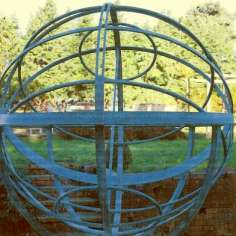 2014
STOLEN!
Police are hunting thieves who stole a unique decorative sundial
from a £4 million mansion near Potters Bar., Herts 2014
STOLEN!
Police are hunting thieves who stole a unique decorative sundial
from a £4 million mansion near Potters Bar., Herts
Between Dec 22 2014 and Jan 18 2015, a large brass armillary sphere
sundial disappeared from Rabley Park, a historic 12-acre estate in
Packhorse Lane, Ridge.
Police say the large ornament can only have been moved by a vehicle.
It has several engravings, including “Do not squander time for that is
the stuff life is made of’, ‘Clacton-on-Sea’, ‘Hemel Hempstead’ and
‘Newcastle’.
Anyone with any information should contact the police
11.02.15
2017 Grade II sundial
STOLEN from Conwy churchyard
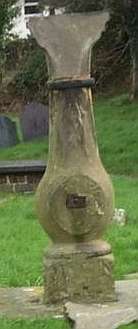
A Grade II listed sundial dating to 1761 has been stolen from a
churchyard in Conwy and its stonework smashed.
The stonework holding the bronze sundial at Conwy church was smashed
into three pieces.
Rev David Parry, vicar of Bro Celynnin, said the theft was noticed on
Friday morning and reported to police.
"It's very sad. In taking the top, the thieves have severely damaged
the stone. It's been part of Conwy's history for a long long time," he
said.
"It's a well known landmark, listed in its own right, and we're at a
loss to know why someone would want to damage this."
The dial is believed to be SRN 3262, dated 1765, 360mm dia includes an
EoT scale and was made by Mereidh Hughes, of Conwy.
14.02.17 |
Dialplate Stolen Bridge End
Gardens Saffron Waldon
 Some
time between 2019 and 2023
a gnomonless dialplate was removed from its lovely pedestal
in the Bridge End Gardens in Saffron Walden. The only
images we have of it before and after the theft are
HERE.
Anyone with information about the whereabouts of the missing
dialplate should contact the
webmaster. Some
time between 2019 and 2023
a gnomonless dialplate was removed from its lovely pedestal
in the Bridge End Gardens in Saffron Walden. The only
images we have of it before and after the theft are
HERE.
Anyone with information about the whereabouts of the missing
dialplate should contact the
webmaster.
|
A "Special" sundial was
STOLEN from Bell Vean, Cemetry, Lanner Cornwall in
January 2022.
A n
ornamental sundial that encouraged a Cornwall community to reflect
and remember loved ones has been stolen from a graveyard. n
ornamental sundial that encouraged a Cornwall community to reflect
and remember loved ones has been stolen from a graveyard.
The sundial was found to be missing from
Lanner Lawn Cemetery, near Redruth, this morning (21 January 2022)
after an angle-grinder was used to remove it from its base.
It is made from six interlocking brass
rings and has a large inscription that reads: “Take time to rest and
reflect on your joys.”
The chairman of Lanner Parish Council, Tim
Luscombe, said: “It was a really beautiful and special sundial.
“There are lots of connections with it
that we can’t get back again, it had a real emotional value for the
community.
“We anticipated it would have a 100 year lifespan but now it’s gone.
Even the forge blacksmith in Charlestown where it was made is no
more.” The sundial was commissioned with the creation of a
‘Garden of Remembrance’ in 2005. Members of the parish council
designed and built a space to encourage the community to reflect and
remember loved ones.
“Lots of people sat in this garden in
really difficult situations. It’s nicely planted with low walls
around it and it’s just a peaceful place to be. The sundial was the
focal point in the centre.
“They’ve stolen from a graveyard. It’s so
disrespectful”, Mr Luscombe said.
|
|
RECENT SUNDIAL
CONFERENCES |
The NASS 2019 conference
was held in Denver, Colorado
 20th - 23rd June
2019. It included presentations and a tour of sundials. Early
registration is recommended at the Hilton Garden Inn - Denver Downtown. NASS had a discounted rate of $179/night (plus 15.75% tax). This rate
applied 5 days before and after the conference if rooms were
available. 20th - 23rd June
2019. It included presentations and a tour of sundials. Early
registration is recommended at the Hilton Garden Inn - Denver Downtown. NASS had a discounted rate of $179/night (plus 15.75% tax). This rate
applied 5 days before and after the conference if rooms were
available.
Full NASS registration until April 14th was $310-$322 depending
upon dinner selection. After April 14th the cost increased to $335-$347.
24.02.19, 05.08.19 |
BSS Bath Conference 2019 This year the conference
 is being held
at the Bailbrook House Hotel in Bath from 26 to 28th April. One of
the top hotels in the city, Bailbrook House Hotel is an historic grade II*
listed mansion, located just a few minutes from the centre of historic Bath with
on-site complimentary parking. As BSS is an English Charity the
Conference is Open to all, not just to BSS Members. is being held
at the Bailbrook House Hotel in Bath from 26 to 28th April. One of
the top hotels in the city, Bailbrook House Hotel is an historic grade II*
listed mansion, located just a few minutes from the centre of historic Bath with
on-site complimentary parking. As BSS is an English Charity the
Conference is Open to all, not just to BSS Members.
Day Delegate Rate - £160
Full Package for two nights Double - £525 Single £340
Extra nights - £95 single and £135 double.
19.02.19 |
The BSS Conference 2018 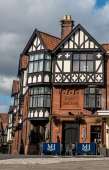 took
the Society to Norwich - to the Maid's Head Hotel there. The Conference ran from
Friday 20 April to Sunday 22 April, 2018. See a summary of the
BSS 2018 Programme. Only 57 delegates attended. On arrival one of two short
walks were planned in Norwich itself for the Friday afternoon and in what
for many was a welcome break from recent venues there was a coach tour to view
David Payne's sundial trail on the Saturday afternoon.
See more about
what dials were seen. Full package prices were £340 for single
occupancy, £520 for double. The Day Delegates rate is £160. As usual the
conference was open to non-members as well as members and at no difference in
price.
See the
delegates out on the tour. took
the Society to Norwich - to the Maid's Head Hotel there. The Conference ran from
Friday 20 April to Sunday 22 April, 2018. See a summary of the
BSS 2018 Programme. Only 57 delegates attended. On arrival one of two short
walks were planned in Norwich itself for the Friday afternoon and in what
for many was a welcome break from recent venues there was a coach tour to view
David Payne's sundial trail on the Saturday afternoon.
See more about
what dials were seen. Full package prices were £340 for single
occupancy, £520 for double. The Day Delegates rate is £160. As usual the
conference was open to non-members as well as members and at no difference in
price.
See the
delegates out on the tour.
02.02.18,16.04.18, 20.04.18, 27.04.18 |
|
Reprise of the 2017 BSS
Oxford Conference
21-23 April 2017
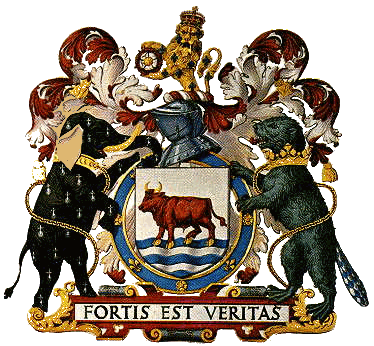 The
2017 BSS Spring Conference took place just outside Oxford. Have a
look at our special web page at the link below to see where it
was held,
what the hotel is like, how to get to it, delegate rates,
what else to see and do,
how the conference was arranged and the two planned visits to
dials and the conference dinner. All Information is updated
regularly. The
2017 BSS Spring Conference took place just outside Oxford. Have a
look at our special web page at the link below to see where it
was held,
what the hotel is like, how to get to it, delegate rates,
what else to see and do,
how the conference was arranged and the two planned visits to
dials and the conference dinner. All Information is updated
regularly.
|
Our Special BSS Conference page
included notes written to accompany Dr Philip Pattenden's
conducted tour of
The Sundials of
Oxford Colleges which were visited during the
Inaugural
BSS Conference in 1990! Compare then and now!!
Only on SunInfo!! |
See our Special
Conference Page - 2017
09.05.16 15.09.16, 05.01.17,21.03.17, 23.04.17, 02.08.17 |
|
Reprise of the 2016 BSS Liverpool Conference

You can find information about this
conference
here (or click on the image
above). Only about 55 delegates attended in 2016, even fewer than last
year. Read news of what happened there, the programme and how the conference was
arranged, the plenary lecturer, how easy it was to get there by land and air,
details of the hotel itself, where you could find parking, the conference
format, what there was to do, how to get taxis, where the bus stops are, find
nearby sundials and even how to see the sights of Liverpool too.
09.03.16 18.04.16,23.05.16 |
|
  Check
out our page about the
2012
BSS Cheltenham Conference; a conference that was
held over ten years ago.
The level of interest is little short of amazing. Mind you,
our page does include summaries, photographs
and the results of delegate opinions - sadly things that
are no longer published about its conferences by the current BSS Council.
Indeed, and by way of example, there is still no website
entry of consequence on the BSS site about the 2013 meeting in Edinburgh
nor one about the 2014 Greenwich Conference nor the 2015 Nottingham one
nor the 2016 Liverpool, nor even yet the 2017 Oxford meeting nor that of
2018 either. Why ever not you may ask? Well, it might appear
to you as a desire for secrecy. A number of issues arose at the Cheltenham
conference which may be behind what appear to be moves by the present
Council towards ever greater secrecy about their many blunders. Blunders
that continue to surprise the dialling community. Their omission from
their notes of the problems with the membership survey, of Graham Aldred's
evidence in the Christopher Daniel book saga, the successive losses of
society assets and their recent quite extraordinary attempts to block
you from linking from this web site to
theirs. Hmmm, Shakespeare's
Hamlet (1.4 [90]), Marcellus to Horatio comes to mind... Check
out our page about the
2012
BSS Cheltenham Conference; a conference that was
held over ten years ago.
The level of interest is little short of amazing. Mind you,
our page does include summaries, photographs
and the results of delegate opinions - sadly things that
are no longer published about its conferences by the current BSS Council.
Indeed, and by way of example, there is still no website
entry of consequence on the BSS site about the 2013 meeting in Edinburgh
nor one about the 2014 Greenwich Conference nor the 2015 Nottingham one
nor the 2016 Liverpool, nor even yet the 2017 Oxford meeting nor that of
2018 either. Why ever not you may ask? Well, it might appear
to you as a desire for secrecy. A number of issues arose at the Cheltenham
conference which may be behind what appear to be moves by the present
Council towards ever greater secrecy about their many blunders. Blunders
that continue to surprise the dialling community. Their omission from
their notes of the problems with the membership survey, of Graham Aldred's
evidence in the Christopher Daniel book saga, the successive losses of
society assets and their recent quite extraordinary attempts to block
you from linking from this web site to
theirs. Hmmm, Shakespeare's
Hamlet (1.4 [90]), Marcellus to Horatio comes to mind...
|
 Which
BSS Conference was it?
Are you a long standing member of BSS? Can you
remember at which Which
BSS Conference was it?
Are you a long standing member of BSS? Can you
remember at which
 conference
the delegates were given this little notebook? When closed it measured 4¼
x 3 ins and contained a pad of
paper, an
equation of time chart and a two year calendar! Click the image
to find out!! conference
the delegates were given this little notebook? When closed it measured 4¼
x 3 ins and contained a pad of
paper, an
equation of time chart and a two year calendar! Click the image
to find out!!
27.02.14 |
 The Exeter 2010 Conference Tour
was videoed
The Exeter 2010 Conference Tour
was videoed
 and
later moved to YouTube using the rather limited equipment of the
time. But despite this it is pleasing to see old friends - one or
two of whom are sadly no longer with us - and of course to see how
such coach based tours were conducted back then in and around some
of the really rural areas of Devon. Enjoy this short but
interesting clip
HERE and
later moved to YouTube using the rather limited equipment of the
time. But despite this it is pleasing to see old friends - one or
two of whom are sadly no longer with us - and of course to see how
such coach based tours were conducted back then in and around some
of the really rural areas of Devon. Enjoy this short but
interesting clip
HERE
31.01.2023 |
|
Interesting News,
Articles & Links |
Recording a Dial's Declination. An easy
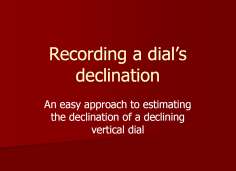 approach
to estimating the declination of an existing declining vertical dial.
Here
is a PDF of a few self-explanatory slides presented by BSS Member Patrick Powers
at the 2005 Newbury Meeting of BSS. (5MB PDF).
You can buy a copy of a Reference card relating
to this to carry with you. Click on the link... approach
to estimating the declination of an existing declining vertical dial.
Here
is a PDF of a few self-explanatory slides presented by BSS Member Patrick Powers
at the 2005 Newbury Meeting of BSS. (5MB PDF).
You can buy a copy of a Reference card relating
to this to carry with you. Click on the link...
19.12.14, 03.01.15 |
|
BSS's Net Current Assets Fall
5¼%
in a year. The Charity Commission has received BSS's
accounts for 2015.
 For
those wishing to see how the Society fared in those past twelve months, they may
be examined Here. For
those wishing to see how the Society fared in those past twelve months, they may
be examined Here.
A drop of 5¼%
in Net Current Assets has been reported in the last year
It is thought largely to be because of conference losses. Earlier Accounts
can be conveniently checked and compared in our Document
Archive below, see the section 'Policy, Guidance, Rules, Information
Sheets & General Documents'.
Members attending the 2016 Society AGM got few answers to this further BSS
blunder.
03.04.16, 05.04.16, 19.04.16
|
Every time the sun shines
in Seattle, it sheds light on
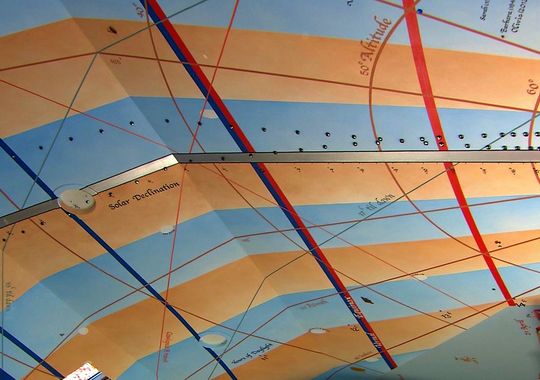 Woody
Sullivan and his mission. "I am out to make Seattle the sundial capital of
North America, I just love the irony of it," said Sullivan. More
here. Woody
Sullivan and his mission. "I am out to make Seattle the sundial capital of
North America, I just love the irony of it," said Sullivan. More
here. |
Waymarking™!
Waymarking.com is a super way to see the dials of the world
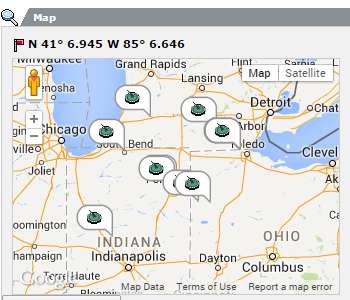 from
your armchair and to read a little about them too. from
your armchair and to read a little about them too.
Have a look at SunInfo's new Waymarking page
here.
It includes links to the waymarking website and to
specific sets of dials.
All courtesy of waymarking.com |
An Early English
'Scientific' Sundial with exactly
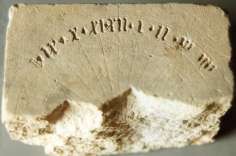 calculated,
unequal hour angles has been discovered at Scadbury Manor, home of the
Walsingham family. The very family that was so connected with the
Tudor Court. More information
here. calculated,
unequal hour angles has been discovered at Scadbury Manor, home of the
Walsingham family. The very family that was so connected with the
Tudor Court. More information
here. |
 The
Rostov 'Slab' discovered in 1991 may, it now seems,
be an ancient Bronze Age attempt at a combination of sundial and moon
dial. The slab is marked with round divots arranged in a circle,
and an astronomical analysis suggests that these markings coincide with
heavenly events, including sunrises and moonrises. Larisa
Vodolazhskaya of the Archaeoastronomical Research Center at the Southern
Federal University in Russia suggests that the people in the Northern
Black Sea region were astronomically savvy with a technology on a par
with what was seen in ancient Egypt around the same time. Amazing,
more information
here The
Rostov 'Slab' discovered in 1991 may, it now seems,
be an ancient Bronze Age attempt at a combination of sundial and moon
dial. The slab is marked with round divots arranged in a circle,
and an astronomical analysis suggests that these markings coincide with
heavenly events, including sunrises and moonrises. Larisa
Vodolazhskaya of the Archaeoastronomical Research Center at the Southern
Federal University in Russia suggests that the people in the Northern
Black Sea region were astronomically savvy with a technology on a par
with what was seen in ancient Egypt around the same time. Amazing,
more information
here |
 The Polish Sundial Register now records 1369 dials!
The The Polish Sundial Register now records 1369 dials!
The
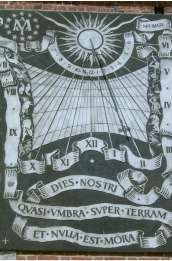 Catalogue
of the sundials of Poland has well exceeded 1100. BSS Member Darek
Oczki is the Registrar and his website
http://gnomonika.pl/ lists them. (Sept 2020) Catalogue
of the sundials of Poland has well exceeded 1100. BSS Member Darek
Oczki is the Registrar and his website
http://gnomonika.pl/ lists them. (Sept 2020)
Vertical 768
Horizontal 406
Equatorial 96
Analemmatic 54
Multiple 24 |
Symbolic 12
Polar 4
Altitude 2
Portable 1
Meridian lines 1
Others 1 |
|
|
Calendars and things
from the past |
 The
FREE 2015
SunInfo Calendar is still available here!!! The
FREE 2015
SunInfo Calendar is still available here!!!
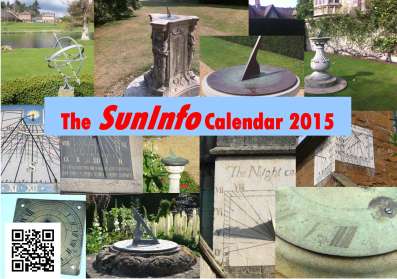 With
one A4 page for each month, this FREE PDF pictorial calendar can be downloaded
and printed off to give you images of twelve UK sundials to look at throughout
2015. Each month includes the equation of time correction for each day and a
separate page allows longitude corrections to be estimated for anywhere in the
British Isles. Check it out and
download it here. Only a 4MB download. Just print it on
suitable paper stock.
17.12.14 With
one A4 page for each month, this FREE PDF pictorial calendar can be downloaded
and printed off to give you images of twelve UK sundials to look at throughout
2015. Each month includes the equation of time correction for each day and a
separate page allows longitude corrections to be estimated for anywhere in the
British Isles. Check it out and
download it here. Only a 4MB download. Just print it on
suitable paper stock.
17.12.14 |
 SunInfo's
2014 Calendar! SunInfo's
2014 Calendar!
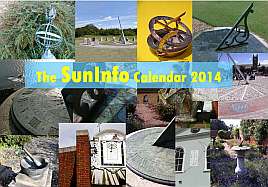
With one A4 page for each month, this FREE PDF pictorial calendar
can be downloaded and printed off to give you images of twelve UK
sundials. Each month includes the equation of time correction for
each day of 2014 and a separate page allows longitude corrections to be
estimated for anywhere in the British Isles.
Check it out and download it here.
Only a 3.7MB download. Just print it on suitable paper stock.
People have
still been downloading this
beautiful calendar long after 2014 !! Why don't you have a look
too? Then look at our 2015 one! |
|
A Calendar for 2002? Why ever
should sundial enthusiasts wish to look at - let alone keep - a copy of a
calendar for 2002? Have a look at our photogallery
here to see why! |
Fotheringham's Calendar.
John Knight Fotheringham FBA (14 August 1874 – 12
December 1936) was a British historian who was an expert on ancient astronomy
and chronology and who established the chronology of the Babylonian dynasties.
In 1929 he wrote a 13 page monograph
The Calendar
which concisely and clearly describes the history of calendars from that of the
Egyptians to the present day.
It is now out of copyright and worth reading
here
[2.1MB PDF]
©HMSO, 1929
07.08.16 |
|
Articles, Links and
Editorial |
 Key
facts about BSS. Here
are details of the Society, the members of its Council and its
management, its appointed and excellent Specialists, how to access its
website and its Facebook page, how (and why!) to join the
Society, how to send payments to BSS via credit card or PayPal and many
recent annual accounts. In fact more or less everything you need
to know about BSS is here - warts and all! There's even help for BSS
Members who may like to understand the background to the worrying
oddities in today's erratic management of the society. Key
facts about BSS. Here
are details of the Society, the members of its Council and its
management, its appointed and excellent Specialists, how to access its
website and its Facebook page, how (and why!) to join the
Society, how to send payments to BSS via credit card or PayPal and many
recent annual accounts. In fact more or less everything you need
to know about BSS is here - warts and all! There's even help for BSS
Members who may like to understand the background to the worrying
oddities in today's erratic management of the society.
[
A Disquieting Anniversary] [A
Disquieting Delay] [Now the Disquieting Book
Dispute!]
Interested to have access to more information about the
operation of BSS? Then why not go to our private BSS
Members page. [Password access available upon prior registration
with the
webmaster].
|
BSS's "1960's" management approach.
In October
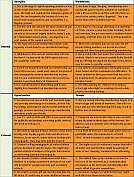 2011
the incoming secretary of BSS suggested using a S.W.O.T analysis of the
Society's Strengths, Weaknesses, Opportunities and Threats. This is
now a rather discredited approach to management (because it can actually
limit performance) which was first mooted in Stamford in the 1960s. It is
therefore more used nowadays to summarise the
outcome of a more professional analysis of a business.
However one good use of it is to provide an historical perspective and allow
outsiders to judge for themselves what progress has been made in any
intervening period. Two analyses were prepared in 2011. Have a look at
the more detailed of the two
here and check which
of the suggestions in it have subsequently been adopted and which not! 2011
the incoming secretary of BSS suggested using a S.W.O.T analysis of the
Society's Strengths, Weaknesses, Opportunities and Threats. This is
now a rather discredited approach to management (because it can actually
limit performance) which was first mooted in Stamford in the 1960s. It is
therefore more used nowadays to summarise the
outcome of a more professional analysis of a business.
However one good use of it is to provide an historical perspective and allow
outsiders to judge for themselves what progress has been made in any
intervening period. Two analyses were prepared in 2011. Have a look at
the more detailed of the two
here and check which
of the suggestions in it have subsequently been adopted and which not! |
Quotes of 2013... From the UK
Charity Bulletin No 122, May 2013 published by IEL - who happen to be
BSS's appointed Independent Accounts Examiners:
Integrity: There's no better test of a person's integrity than
their behaviour when they are wrong. (Marvin Williams).
Destiny: Don't confuse poor decision-making with destiny. Own
your mistakes. It's ok; we all make them. Learn from them and move on.
(Steve Maraboli)
Now, even after 2017 might not these form useful advice for today's
BSS Council - and from their own Examiner no less? |
|
The company
David Brown Sundials
offers a Blog/Website about their recent projects.
Worth a look
►here |
|
 Greenwich
Dial 'Restored' by BSS President Christopher Daniel!
In 1969 the 'Meridies Media' noon mark mean time
sundial, designed by Dr Tadeusz Przypkowski, with amendments by Christopher
Daniel, was installed on the south wall of the Meridian Building in what was
then the Old Royal Observatory at Greenwich. Over the years it deteriorated
and had to be taken down. In 2009 a movement was started to reinstate a
replica. Chris Daniel, who had been curator of the sundial collection of the
National Maritime Museum at the time of the original installation and who is
now the President of BSS, was asked to design the replacement. This he has
undertaken without a fee. The dial was formally opened by BSS Patron, Sir
Mark Lennox Boyd on Wednesday 10.10.12 at 12:30pm. It represents a fitting
Diamond Jubilee dial in Greenwich Park. Some early notes about the
replacement are
here
and further details of the ceremony can be found
here. An image of this
dial appears in the Wikipedia article about Sundials. Greenwich
Dial 'Restored' by BSS President Christopher Daniel!
In 1969 the 'Meridies Media' noon mark mean time
sundial, designed by Dr Tadeusz Przypkowski, with amendments by Christopher
Daniel, was installed on the south wall of the Meridian Building in what was
then the Old Royal Observatory at Greenwich. Over the years it deteriorated
and had to be taken down. In 2009 a movement was started to reinstate a
replica. Chris Daniel, who had been curator of the sundial collection of the
National Maritime Museum at the time of the original installation and who is
now the President of BSS, was asked to design the replacement. This he has
undertaken without a fee. The dial was formally opened by BSS Patron, Sir
Mark Lennox Boyd on Wednesday 10.10.12 at 12:30pm. It represents a fitting
Diamond Jubilee dial in Greenwich Park. Some early notes about the
replacement are
here
and further details of the ceremony can be found
here. An image of this
dial appears in the Wikipedia article about Sundials. |
|
New Images and an article are available of the most
recent dial commission by
BSS President, Christopher Daniel MBE.
This is the Noon mark on the
Guildhall in Faversham, Kent which was declared 'open' by the Town's
Mayor in April 2013. We are now pleased to be able to present a
photogallery of the results of this commission and an
article about it. More details in the panel opposite (see: "The
Faversham Dial"), or go straight to our
Faversham
Photogallery and/or to Chris's
Noon Mark article. To learn even more about this sort of dial
consider joining the
British Sundial Society. You will surely not regret it.
01.08.13, 01.09.13 |
|
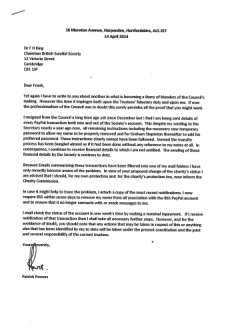  Odd
how sometimes you might not get a reply from the BSS
Trustees. Here, after four years and coming up to five, is one of
those. In the past the trustees have objected when their
professionalism has been questioned yet STILL there are examples of
quite serious blunders which some might think of as being in this
category. The related issues with the permanence of the Library and
with the President's book collection mentioned above are probably two of
the longer lasting ones for members of the Society but the mistaken
forwarding of
financial transactions to a non-member is really quite serious, is
worrying to those of us who place trust in charities and of course it is
contrary to duty for any Trustee. No apology or even an
acknowledgement, has been received in respect of this letter - now nearly
five years later. More important is the secrecy with which this is
enveloped - like so many of the other issues with BSS. Yet again, the
membership of BSS have not so far been informed. Why ever not?
Odd thing 'professionalism'. Not much unlike 'Integrity'
really... There's more on the matter of BSS Integrity
►here Odd
how sometimes you might not get a reply from the BSS
Trustees. Here, after four years and coming up to five, is one of
those. In the past the trustees have objected when their
professionalism has been questioned yet STILL there are examples of
quite serious blunders which some might think of as being in this
category. The related issues with the permanence of the Library and
with the President's book collection mentioned above are probably two of
the longer lasting ones for members of the Society but the mistaken
forwarding of
financial transactions to a non-member is really quite serious, is
worrying to those of us who place trust in charities and of course it is
contrary to duty for any Trustee. No apology or even an
acknowledgement, has been received in respect of this letter - now nearly
five years later. More important is the secrecy with which this is
enveloped - like so many of the other issues with BSS. Yet again, the
membership of BSS have not so far been informed. Why ever not?
Odd thing 'professionalism'. Not much unlike 'Integrity'
really... There's more on the matter of BSS Integrity
►here
31.07.14,28.08.14,29.09.18
|
|
Earlier
BSS Conferences.
Want to see summaries, photographs, programmes and delegate reviews of
previous BSS conferences ?
Click
for
Norwich
2018
- Sundial trail information here
Programme here
Oxford (2017)
- Information here
Liverpool (2016)
- (Authors, papers, Issues and other details)
Nottingham (2015)
(Authors, papers, Issues and other details)
Greenwich (2014) (Authors, papers, other
details)
Edinburgh (2013) (Authors & Papers),
Cheltenham (2012) (Full summary)
Wyboston (2011) (Full summary)
Exeter (2010) (Full summary & Video)
20.04.12, 16,01,13, 02.03.13, 27.04.14, 01.08.17, 22,04.18
|
The Nice Dials of Newstead There is a
wonderful ruined abbey in the Gothic style at
![Walter Baxter [CC BY-SA 2.0 (http://creativecommons.org/licenses/by-sa/2.0)], via Wikimedia Commons](./sun_files/Newstead.jpg) Melrose
in Scotland. It was no longer maintained after 1544 and indeed it is
recorded that the last monk there died in 1590. Part of it was destined to
rise again to be used as a parish church from 1610 -1810 and it was presumably
in this period that many stonemasons were needed. Whatever, it is recorded
that many of these stonemasons lived and were trained in the nearby town of
Newstead and whether or not that is the reason, there are several stone sundials
in Newstead mostly dated to the 1650s - 1780s. Denis Cowan (of course!) visited
Newstead in 2011 and he later published a fascinating
article about these dials in the BSS Bulletin.
Well worth a read. There is at least one
with its mason's mark, one was previously thought to have been a date-stone and
one that is now stored out of the weather. Nonetheless there are two still
thought to be missing. Maybe they are yet to be found? Melrose
in Scotland. It was no longer maintained after 1544 and indeed it is
recorded that the last monk there died in 1590. Part of it was destined to
rise again to be used as a parish church from 1610 -1810 and it was presumably
in this period that many stonemasons were needed. Whatever, it is recorded
that many of these stonemasons lived and were trained in the nearby town of
Newstead and whether or not that is the reason, there are several stone sundials
in Newstead mostly dated to the 1650s - 1780s. Denis Cowan (of course!) visited
Newstead in 2011 and he later published a fascinating
article about these dials in the BSS Bulletin.
Well worth a read. There is at least one
with its mason's mark, one was previously thought to have been a date-stone and
one that is now stored out of the weather. Nonetheless there are two still
thought to be missing. Maybe they are yet to be found?
03.08.17 |
|
There are two vertical declining dials at Grimsthorpe
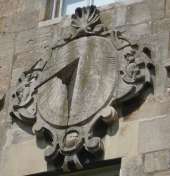 Castle
- not one!
Historic England's Listing
Details for Grimsthorpe Castle in the parish of Edenham in Lincolnshire,
appear to only show one vertical declining dial at this property, yet
there are two - both in 'reasonable' condition for their age.
More than that, the larger one is still showing accurate Local Solar Time
too. Castle
- not one!
Historic England's Listing
Details for Grimsthorpe Castle in the parish of Edenham in Lincolnshire,
appear to only show one vertical declining dial at this property, yet
there are two - both in 'reasonable' condition for their age.
More than that, the larger one is still showing accurate Local Solar Time
too.
Read a little about the castle, find out where the
dials can be seen on the building and have a look at two photographs
of them. Then, marvel at just how well the larger one is
telling the time even today.
All here.
10.08.2017 |
A 17th century
brass sundial was prised from its stone
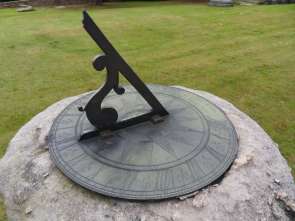 plinth outside the
front door
of St Tysilio's Church between Llanymynech and Four Crosses in Powys.
Churchgoers noticed it was missing on January 11 2018 but they can not say when
it was last seen. Dyfed Powys constable Rhodri Treharne said it was an unusual
artefact that police wanted to re-unite with the church. plinth outside the
front door
of St Tysilio's Church between Llanymynech and Four Crosses in Powys.
Churchgoers noticed it was missing on January 11 2018 but they can not say when
it was last seen. Dyfed Powys constable Rhodri Treharne said it was an unusual
artefact that police wanted to re-unite with the church.
Mrs Carol Davies, churchwarden, said the sundial is about eight inches
in diameter and is of a golden brass colour.
17.02.18 |
The San Marco Noon Mark
- Venice.
In our Dial Time
 Newsletter for April 2016 we published
a note
about the rarely noticed Noon Mark that exists in St Mark's Square in Venice.
It is damaged, rusted, drooping and possibly even now loose as well yet it still
shows solar noon to within 13 mins and that after something like 630 years! Newsletter for April 2016 we published
a note
about the rarely noticed Noon Mark that exists in St Mark's Square in Venice.
It is damaged, rusted, drooping and possibly even now loose as well yet it still
shows solar noon to within 13 mins and that after something like 630 years!
Seen again in
November 2018 - in this picture taken at a solar time of approx 11:51
am - though the shadow has just passed the noon line. Click on the
thumbnail here for a larger image.
Read
the original 2016 Dial Time article here
22.11.18 |
The History of the
Countess's Pillar
Here's an interesting article about the
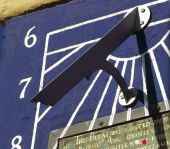 history
of the Countess's Pillar, one of the more famous dials in Britain
which was restored by Christopher Daniel. The dials and
the pillar were placed there by Lady Anne Clifford, the
last of all the Cliffords, who by her force of character and
charitable works left her mark on her property and a legend in the
county of Westmorland that remain to this day. The link here is to
chapter four of "A Tour In Westmorland by Sir Clement Jones,
published 1948". It makes interesting reading. Her
charitable gift is still in existence and is managed as a named
charity by the local council! Click the image here of the South
dial to read more about this remarkable 17thC lady and her works. history
of the Countess's Pillar, one of the more famous dials in Britain
which was restored by Christopher Daniel. The dials and
the pillar were placed there by Lady Anne Clifford, the
last of all the Cliffords, who by her force of character and
charitable works left her mark on her property and a legend in the
county of Westmorland that remain to this day. The link here is to
chapter four of "A Tour In Westmorland by Sir Clement Jones,
published 1948". It makes interesting reading. Her
charitable gift is still in existence and is managed as a named
charity by the local council! Click the image here of the South
dial to read more about this remarkable 17thC lady and her works.
15.09.20 [EU C-466/12] |
Four
Treasures of Bromley House Library
Dr Anja Thompson-Rohde, who is the Senior
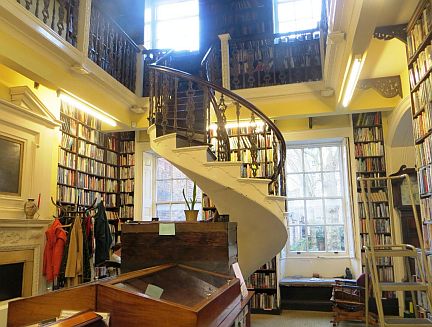 Librarian at
the Bromley House Library in Nottingham, regularly gives a short
talk on You Tube about some of the Treasures in the Library. The
library is one of very few remaining subscription libraries in the
UK and was founded in 1816. It holds the BSS Library and with it the
Christopher Daniel Book collection. In September 2020 talks
were presented about four books held in the BSS Collection. These
four talks may be heard
HERE. There is more
to read
HERE too. As a subscriptionlibrary
Bromley House is only open to paid up BH members and to BSS
Members. Librarian at
the Bromley House Library in Nottingham, regularly gives a short
talk on You Tube about some of the Treasures in the Library. The
library is one of very few remaining subscription libraries in the
UK and was founded in 1816. It holds the BSS Library and with it the
Christopher Daniel Book collection. In September 2020 talks
were presented about four books held in the BSS Collection. These
four talks may be heard
HERE. There is more
to read
HERE too. As a subscriptionlibrary
Bromley House is only open to paid up BH members and to BSS
Members.
Graham Aldred first suggested that this
library might be an excellent venue for the Society's books since
the private house where they were then being held was being
sold (!) and a new place was clearly urgently needed. Particularly
appropriate was the fact that at Bromley House there is both a
meridian line and a Pilkington and Gibbs heliochronometer. Graham
spoke with a trustee of Bromley House who happened to be attending
a talk at a BSS meeting and an agreement was subsequently reached.
Graham then personally repaired and serviced the Pilkington and Gibbs dial -
it turned out that the EoT cam had been wrongly fitted - and now
BSS Members and all paidup Bromley Library Members may peruse
these books at their leisure and perhaps also observe the sun's
transit and even check the time by the sun during their visit!
31.03.21, 02.04.21 (Image thumbnail
courtesy Bromley House Library) |
Twenty+ years on!
To mark the Millennium, Amble Council in
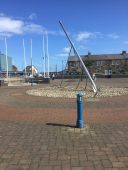 Northumberland
commissioned a firm of architects in Newcastle to turn their
asphalted car park into a civic amenity. A part of this was to be
a large central sundial and Patrick Powers was commissioned to
design it. During a recent visit to Northumberland a detour was
made to see how the dial has fared after nearly twenty years! It turns out to be in
remarkably good shape. Clearly the area is being very well
maintained and is well worth visiting if you are in the area. The
dial was set out on a N-S line which was also used to locate a
small amphitheatre and on this visit it was pleasing to see locals
seated in that to chat as well as others, including children
playing, in the square. The redevelopment won the 2002
RTPI Award
too. Click here or the
image for four images of the dial today and click
Here to see more about
the dial's development and installation and even about its
accuracy - at least at one part of the time scale! - when it was
completed. Northumberland
commissioned a firm of architects in Newcastle to turn their
asphalted car park into a civic amenity. A part of this was to be
a large central sundial and Patrick Powers was commissioned to
design it. During a recent visit to Northumberland a detour was
made to see how the dial has fared after nearly twenty years! It turns out to be in
remarkably good shape. Clearly the area is being very well
maintained and is well worth visiting if you are in the area. The
dial was set out on a N-S line which was also used to locate a
small amphitheatre and on this visit it was pleasing to see locals
seated in that to chat as well as others, including children
playing, in the square. The redevelopment won the 2002
RTPI Award
too. Click here or the
image for four images of the dial today and click
Here to see more about
the dial's development and installation and even about its
accuracy - at least at one part of the time scale! - when it was
completed.
01.09.20 |
Theme & Variations -
of Mottoes?
Many British dials include mottoes and
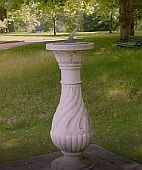 many
of those have similar versions. Here attached as a PDF is a
list of UK mottoes known to SunInfo and
found by many diallists over the years often from unrecorded
sources. Not only can the reader see here a list of these mottoes
but, in this presentation, you can see many of the variations that
can also be found on UK dials. many
of those have similar versions. Here attached as a PDF is a
list of UK mottoes known to SunInfo and
found by many diallists over the years often from unrecorded
sources. Not only can the reader see here a list of these mottoes
but, in this presentation, you can see many of the variations that
can also be found on UK dials.
Click
HERE
to see the list of UK dial mottoes as known so far.
If you know of
others or other variations please do let the webmaster know the
wording and the details of the dial on which it has been found.
Thanks especially to all who have so kindly contributed to this
archive.
23.05.21 |
McNally's nine known
dials
In the early 1800s there were two County Down
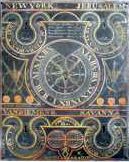 dial
makers who sold into England and Scotland as well as Ireland.
Richard Melville is well known as one but Joseph McNally is the
other and only nine of his dials are known to have survived. dial
makers who sold into England and Scotland as well as Ireland.
Richard Melville is well known as one but Joseph McNally is the
other and only nine of his dials are known to have survived.
McNally records his profession on one of his dials as “Ship’s
Broker and Commissioner” and, it is believed that he lived in
Portaferry in Co. Down. John Davis, Michael Harley and Harriet
James published a fascinating article in a BSS Bulletin some time
ago which is freely available on the Internet
HERE. It makes interesting reading.
22.12.21 Courtesy M Harley |
A Dial Returned!
The
historic
ORIGINAL 1682 Wynne Sundial from Wrest Park in
 Bedfordshire
has at last been returned to the Park - though it is now kept
securely to prevent vandalism or theft. It was sold off some
considerable time ago and later we heard it had been acquired by
English Heritage and was being held in their London Offices. Now
we hear it has been returned to the House where it can be seen
again. It has been cleaned and treated and is kept under
locked security glass. It is not easy to photograph because of
reflexions from the overhead lights, the floor and the glass
itself but it is nice to be able to admire the craftsmanship and
its amazing condition. Nice too to discover for probably the
first recent time the long additional
motto that lies along the gnomon! Bedfordshire
has at last been returned to the Park - though it is now kept
securely to prevent vandalism or theft. It was sold off some
considerable time ago and later we heard it had been acquired by
English Heritage and was being held in their London Offices. Now
we hear it has been returned to the House where it can be seen
again. It has been cleaned and treated and is kept under
locked security glass. It is not easy to photograph because of
reflexions from the overhead lights, the floor and the glass
itself but it is nice to be able to admire the craftsmanship and
its amazing condition. Nice too to discover for probably the
first recent time the long additional
motto that lies along the gnomon!
Click
HERE
(or click on the thumbnail image here - top left) to read more about this
wonderful Dial, a comparison between the existing (but
deteriorating) replica that has been at Wrest Park all these years
and the now renovated original. Right clck and click to magnifyany
image.
01.02.2023 |
|
The Barrow on Soar Millennium Dial
 In
early 2002 a group of villagers in Barrow-upon-Soar in
Leicestershire first came together with the idea of marking the
recent Millennium by creating a community garden on a theme of
time and history. They decided on a large horizontal sundial as
the main attraction. Patrick Powers was approached to perform the
necessary calculations and to be the Technical Adviser to the
project and the villagers themselves came together with local
firms and suppliers to create their own simple yet highly
imaginative design which intrigues all who see it. In
early 2002 a group of villagers in Barrow-upon-Soar in
Leicestershire first came together with the idea of marking the
recent Millennium by creating a community garden on a theme of
time and history. They decided on a large horizontal sundial as
the main attraction. Patrick Powers was approached to perform the
necessary calculations and to be the Technical Adviser to the
project and the villagers themselves came together with local
firms and suppliers to create their own simple yet highly
imaginative design which intrigues all who see it.
A design
diameter of 12m and a tubular gnomon were chosen with the use of
inset Arabic hour markers which are further marked outside the
chapter ring by fifteen local sandstone rough cut blocks.
The dial was formally opened to the public by HM Lord-Lieutenant
of Leicestershire, Lady Gretton on the 3rd July 2004. Those with
access to Google Earth might also like to see an aerial view of
the dial - amazingly in sunshine too - at coordinates 52 45
16.28N, 01 08 12.33W. Click on the image or
HERE to see a few more
pictures of this dial.
10.10.2022 |
Just imagine!
Places where
ordinary sundials work in the summer
but not
 in the winter - even when they might be bathed in sunshine
throughout the year? You might think this cannot be but in Viganella
in Italy and now in Rjukan in Norway that is so. How so?
Read more
here. in the winter - even when they might be bathed in sunshine
throughout the year? You might think this cannot be but in Viganella
in Italy and now in Rjukan in Norway that is so. How so?
Read more
here.
6.11.2013 |
The Birthday Box Dial
One of Christopher Daniel's most imaginative sundials
must
surely be the so called 'Box Dial', that he designed for a friend
in Faversham in 2011. This
 is a birthday sundial tilted so that on
each anniversary the noon shadow of the gnomon is contained inside
a gilded box! The degree of tilt required was some 11.5
degrees and the hour lines were set out as gilded xiphoidal hour
lines allowing first the shadow's trailing edge and then the
leading edge of the shadow to tell the time. The dial was
wonderfully executed by the Devon based sculptor, Ben Jones, in
Kirkstone Slate and mounted on a Nabresina limestone pedestal by
Clive Sherwood. is a birthday sundial tilted so that on
each anniversary the noon shadow of the gnomon is contained inside
a gilded box! The degree of tilt required was some 11.5
degrees and the hour lines were set out as gilded xiphoidal hour
lines allowing first the shadow's trailing edge and then the
leading edge of the shadow to tell the time. The dial was
wonderfully executed by the Devon based sculptor, Ben Jones, in
Kirkstone Slate and mounted on a Nabresina limestone pedestal by
Clive Sherwood.
Christopher even devised a leaflet about this
dial, the text of which is shown here by permission. We truly have lost a
most imaginative diallist. Click the image or
HERE to see the four
page leaflet
07.01.2023. Leaflet
© and permission CStJHD |
A Glossary of Sundial Terms
Some years ago the British Sundial Society
 published
a very useful Glossary of dialling terms. Now in its 3rd edition,
it is available for purchase in printed form from BSS but those
who might only be interested to check one or two meanings might
instead like to know that the 2nd edition document is available on line
HERE or by clicking on the image. It lists around 600 terms used in
dialling and in astronomy. Complete with formulae and chronology
and with over 25 appendices of useful dialling information. All
edited by Dr John Davis and published by Archive.Org. published
a very useful Glossary of dialling terms. Now in its 3rd edition,
it is available for purchase in printed form from BSS but those
who might only be interested to check one or two meanings might
instead like to know that the 2nd edition document is available on line
HERE or by clicking on the image. It lists around 600 terms used in
dialling and in astronomy. Complete with formulae and chronology
and with over 25 appendices of useful dialling information. All
edited by Dr John Davis and published by Archive.Org.
16.01.2023 Coutesy Archive.Org. |
v
|


 Sundial Atlas is
a public website, the brainchild of gnomonists Savian Fabio and Fabio
Garnero. It was created to give all dialling enthusiasts a tool to
document and search for images and information on sundials around the
world.
Sundial Atlas is
a public website, the brainchild of gnomonists Savian Fabio and Fabio
Garnero. It was created to give all dialling enthusiasts a tool to
document and search for images and information on sundials around the
world. 







 stumbled
upon the long lost headstone of Scotland's first Astronomer Royal,
Thomas Henderson, in Greyfriars Kirk.
stumbled
upon the long lost headstone of Scotland's first Astronomer Royal,
Thomas Henderson, in Greyfriars Kirk.







 Accounts
for
Accounts
for

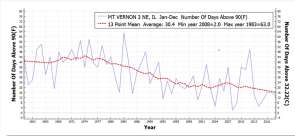 this interesting
analysis of how the New York Times reports temperature changes since the 1960s
really as fraudulent as
this interesting
analysis of how the New York Times reports temperature changes since the 1960s
really as fraudulent as


































 sundial was
conducted by Dr. Robert Smith (University of Sussex) on Saturday, June 29th
2013 at the Emmaus Open Day by uncovering the midday-stone at 1 p.m.
Sir Patrick Moore recorded the following instruction last September to be
played at the opening ceremony. “Congratulations, Here we go! Uncover the
Midday Stone.”
sundial was
conducted by Dr. Robert Smith (University of Sussex) on Saturday, June 29th
2013 at the Emmaus Open Day by uncovering the midday-stone at 1 p.m.
Sir Patrick Moore recorded the following instruction last September to be
played at the opening ceremony. “Congratulations, Here we go! Uncover the
Midday Stone.” 
 The garden at the wonderful Wisbech
property,
'Peckover House' is especially lovely at this time of year. Not only
that but there is a sundial just outside the greenhouse which greatly
enhances that part of the garden. Odd therefore that when these
images were taken - it was at 09:21 GMT in March - the dial was showing
just over 10:30!
The garden at the wonderful Wisbech
property,
'Peckover House' is especially lovely at this time of year. Not only
that but there is a sundial just outside the greenhouse which greatly
enhances that part of the garden. Odd therefore that when these
images were taken - it was at 09:21 GMT in March - the dial was showing
just over 10:30!
 Sundials.
In 2006
Roger
Bailey published his article on Seasonal Markers for Analemmatic Sundials.
Written to answer questions such as “Can a sundial be used to follow the sun
through the seasons?” or
Sundials.
In 2006
Roger
Bailey published his article on Seasonal Markers for Analemmatic Sundials.
Written to answer questions such as “Can a sundial be used to follow the sun
through the seasons?” or 





































































































 that
surface. Several such exist in museums but often they appear to
have unexplained issues connected with their practical use.
One such can be that the device obstructs the dial drawing itself
or that the device cannot easily cope with a realistically thick
gnomon. Perhaps this is why their use today is hardly ever
described? Despite these issues it can always be interesting
to learn of their use and two excellent references might prove of
interest to SunInfo's readership. The first, a section in Nicholas
Rougeux's 2022 book entitled "Construction and Uses of the
Declinatory" may be found
that
surface. Several such exist in museums but often they appear to
have unexplained issues connected with their practical use.
One such can be that the device obstructs the dial drawing itself
or that the device cannot easily cope with a realistically thick
gnomon. Perhaps this is why their use today is hardly ever
described? Despite these issues it can always be interesting
to learn of their use and two excellent references might prove of
interest to SunInfo's readership. The first, a section in Nicholas
Rougeux's 2022 book entitled "Construction and Uses of the
Declinatory" may be found













 Remember an entry that used to be
on this page?
Remember an entry that used to be
on this page?






 discovery
of the remains of King Richard III a sundial was designed to mark
the event, his life and legacy. In August 1485 King Richard
III was killed at the Battle of Bosworth, and buried by the Grey
Friars, a Franciscan Holy order, in their friary church. In August
2012, Leicester City Council, the University of Leicester, and the
Richard III Society began a search underneath a car park in
Leicester, to find King Richard III’s remains and the Grey Friars
Church. This coincided with the 527th anniversary of the date King
Richard III was killed at the Battle of Bosworth.
discovery
of the remains of King Richard III a sundial was designed to mark
the event, his life and legacy. In August 1485 King Richard
III was killed at the Battle of Bosworth, and buried by the Grey
Friars, a Franciscan Holy order, in their friary church. In August
2012, Leicester City Council, the University of Leicester, and the
Richard III Society began a search underneath a car park in
Leicester, to find King Richard III’s remains and the Grey Friars
Church. This coincided with the 527th anniversary of the date King
Richard III was killed at the Battle of Bosworth. 


 recently
alerted the Sundial Mail List to the fact that Glenn Walsh, the author of
the American Space Watch Tower Blog, was at the NASS Conference 2018 throughout
most of the sessions and he later contributed an article on his blog which
summarises the recent meeting quite well.
recently
alerted the Sundial Mail List to the fact that Glenn Walsh, the author of
the American Space Watch Tower Blog, was at the NASS Conference 2018 throughout
most of the sessions and he later contributed an article on his blog which
summarises the recent meeting quite well. 
















 20th - 23rd June
2019. It included presentations and a tour of sundials. Early
registration is recommended at the Hilton Garden Inn - Denver Downtown. NASS had a discounted rate of $179/night (plus 15.75% tax). This rate
applied 5 days before and after the conference if rooms were
available.
20th - 23rd June
2019. It included presentations and a tour of sundials. Early
registration is recommended at the Hilton Garden Inn - Denver Downtown. NASS had a discounted rate of $179/night (plus 15.75% tax). This rate
applied 5 days before and after the conference if rooms were
available.  is being held
at the Bailbrook House Hotel in Bath from 26 to 28th April. One of
the top hotels in the city, Bailbrook House Hotel is an historic grade II*
listed mansion, located just a few minutes from the centre of historic Bath with
on-site complimentary parking. As BSS is an English Charity the
Conference is Open to all, not just to BSS Members.
is being held
at the Bailbrook House Hotel in Bath from 26 to 28th April. One of
the top hotels in the city, Bailbrook House Hotel is an historic grade II*
listed mansion, located just a few minutes from the centre of historic Bath with
on-site complimentary parking. As BSS is an English Charity the
Conference is Open to all, not just to BSS Members.







 calculated,
unequal hour angles has been discovered at Scadbury Manor, home of the
Walsingham family. The very family that was so connected with the
Tudor Court. More information
calculated,
unequal hour angles has been discovered at Scadbury Manor, home of the
Walsingham family. The very family that was so connected with the
Tudor Court. More information






![Walter Baxter [CC BY-SA 2.0 (http://creativecommons.org/licenses/by-sa/2.0)], via Wikimedia Commons](./sun_files/Newstead.jpg) Melrose
in Scotland. It was no longer maintained after 1544 and indeed it is
recorded that the last monk there died in 1590. Part of it was destined to
rise again to be used as a parish church from 1610 -1810 and it was presumably
in this period that many stonemasons were needed. Whatever, it is recorded
that many of these stonemasons lived and were trained in the nearby town of
Newstead and whether or not that is the reason, there are several stone sundials
in Newstead mostly dated to the 1650s - 1780s. Denis Cowan (of course!) visited
Newstead in 2011 and he later published a fascinating
Melrose
in Scotland. It was no longer maintained after 1544 and indeed it is
recorded that the last monk there died in 1590. Part of it was destined to
rise again to be used as a parish church from 1610 -1810 and it was presumably
in this period that many stonemasons were needed. Whatever, it is recorded
that many of these stonemasons lived and were trained in the nearby town of
Newstead and whether or not that is the reason, there are several stone sundials
in Newstead mostly dated to the 1650s - 1780s. Denis Cowan (of course!) visited
Newstead in 2011 and he later published a fascinating













